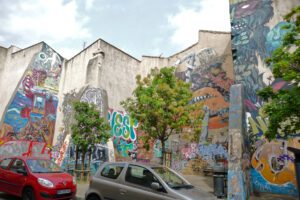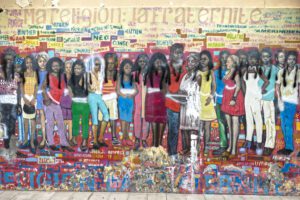In my last post on Paris, I introduced the Paris Museum Pass*, which makes every culture vulture’s stay in the self-proclaimed city of light smoother and, most importantly, far cheaper.
While that’s already pretty great, it actually gets even better: There are tons of fantastic things to see in Paris for free! Whether inspiring museums, amazing views, lush parks and gardens, the old saying that the best things in life Paris are free is absolutely right!
So leave your wallet at home and let’s explore Paris completely free of charge.
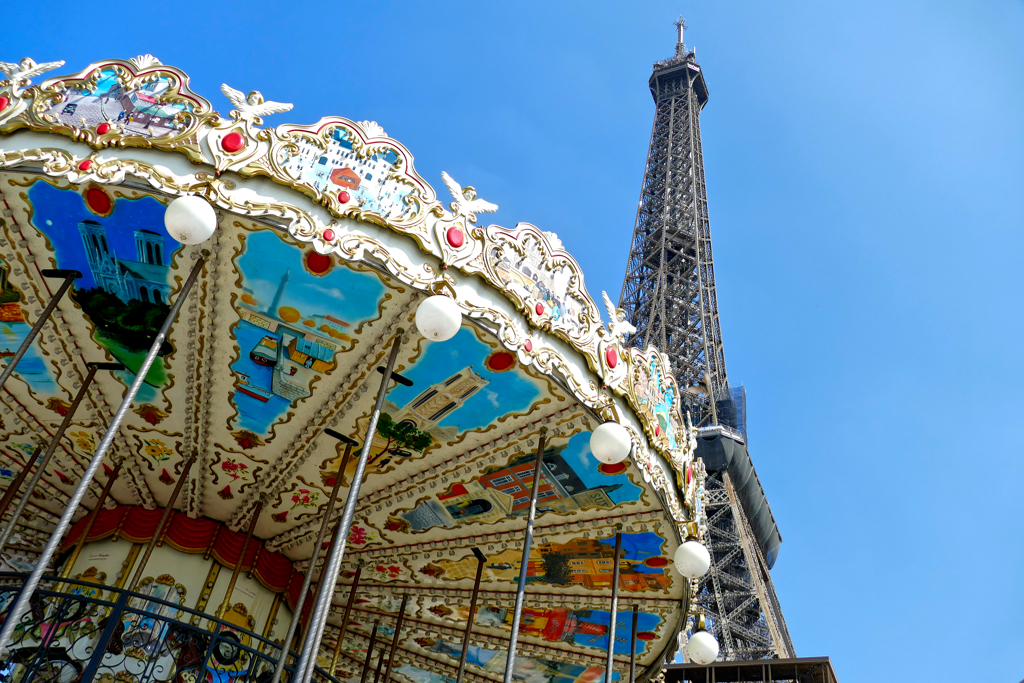
The Best Things in Life Are Free
“So last month, you’ve been to Amsterdam, London, and Paris“, summarizes my friend Claudia. “How could you afford that? Isn’t that incredibly expensive?”
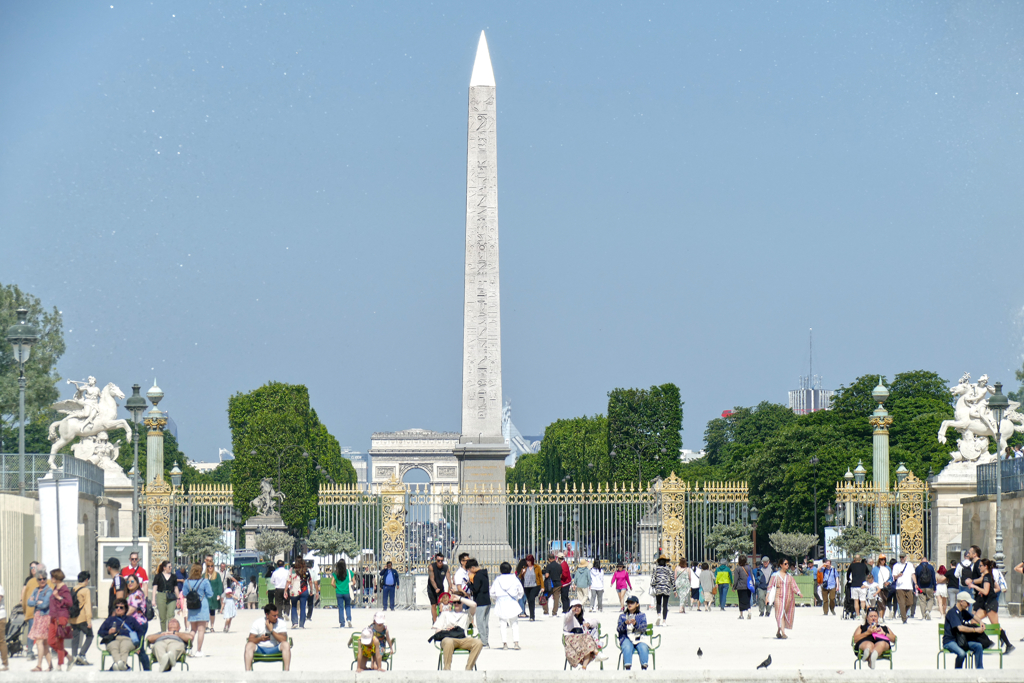
As is so often the case, the answer here is: It depends. Without question, the three cities are among the most expensive places in Europe – if not in the world. The horrendous room rates are just the beginning. Almost every museum in Amsterdam costs around 20 euros. Dinner in London adds up to a small investment. A small coffee in Paris can quickly cost as much as a whole meal in many other cities.
But I’m a self-proclaimed poverty jet setter – a shoutout to Douglas Copeland, who coined the term in his book Generation X. Ever since then, there has finally been a category of travellers I can identify with.
The Secret of Thorough Planning
I have always travelled extensively and at the same time spent as little money as possible. Yet, I very seldom have to waive anything.
How does that work?
Well, I research, plan, and organize in advance, since with a little bit of time and good preparation, you can noticeably minimize the costs even in expensive European metropolises. I have already explained step by step how I do this in my post How to Plan a Trip From Scratch.
However, in 2022, the French capital ranked ninth in the ranking of the most expensive cities in the world. So in this post, I’m going to show you how you can save a lot of money in Paris – mainly by sticking to free places and activities. I’ll take you to interesting and picturesque places where you don’t have to spend a single cent. In addition, I give you valuable tips on how to save on accommodation, public transport, and food.
So don’t smash your piggy bank, just follow me on this frugal path through Paris. We will partake in so much and have an unforgettable time, I promise!
Astounding Things to Do in Paris Completely Free of Charge
There are certain things in every place that everyone wants to see: In Paris, it’s the Eiffel Tower, the Seine, and the Arc de Triomphe. And then there are personal preferences and priorities: one visitor – that would be me – races from museum to museum and doesn’t want to miss out on one single exhibition. Another one spends hours enjoying a good meal, and the third one uses the visit to shop till she or he drop.
In the following list of free activities in the city of love, I have tried to cover different facets and introduce you to different places and landmarks that you can enjoy for free. Included are the must-sees as well as some lesser-known gems. Also, if you have any other tips, I would be happy if you share them with me and my readers in the comments section.
But now let’s get started!
Parks And Gardens
All over the world, inner-city green areas are not only the green lungs of the cities, but also excellent places to take a pleasant break from your sightseeing. 3,000 hectares of green space, almost half a million trees, and over 400 parks and gardens make Paris a green European metropolis.
Green spaces in the city are roughly divided into gardens, parks, and forests. The latter are Bois de Vincennes and Bois de Boulogne, which are located on the eastern and western edges of the city, respectively. Yet, I think a visit is only worthwhile during a longer stay. But that doesn’t mean you won’t be able to enjoy a leisurely hour on a park bench: Many of the manicured gardens are located right in the heart of the city. Below, I’m introducing the five most alluring ones.
Jardin des Tuileries
As you walk from the Musée du Louvre to the Place de la Concorde, you’ll cross the beautiful Jardin des Tuileries, the Louvre’s former palace park. To me, this is one of the most French icons, and in fact, it has been immortalized in many works of art, such as paintings and musical compositions.
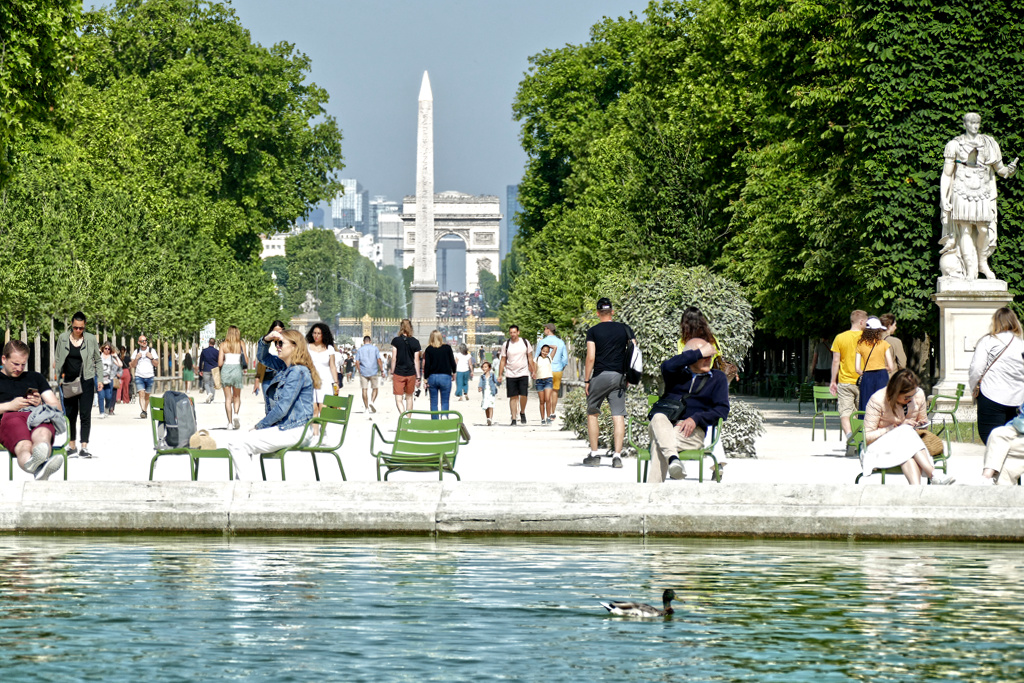
At the time the Palais des Tuileries was built, the western side of the garden was designed in the Italian Renaissance style for Queen Catherine de Medici. She was born in Florence and became a French queen from 1547 to 1559 by marriage to King Henry II. The Tuileries remained a private Royal garden until the Revolution.
The garden is open every day from 7 a.m. to 9 p.m.
Jardin du Luxembourg
Paris’ most beautiful park, Jardin du Luxembourg, is a former royal palace garden and part of the Palais du Luxembourg, the assembly hall of the upper house of the French parliament.
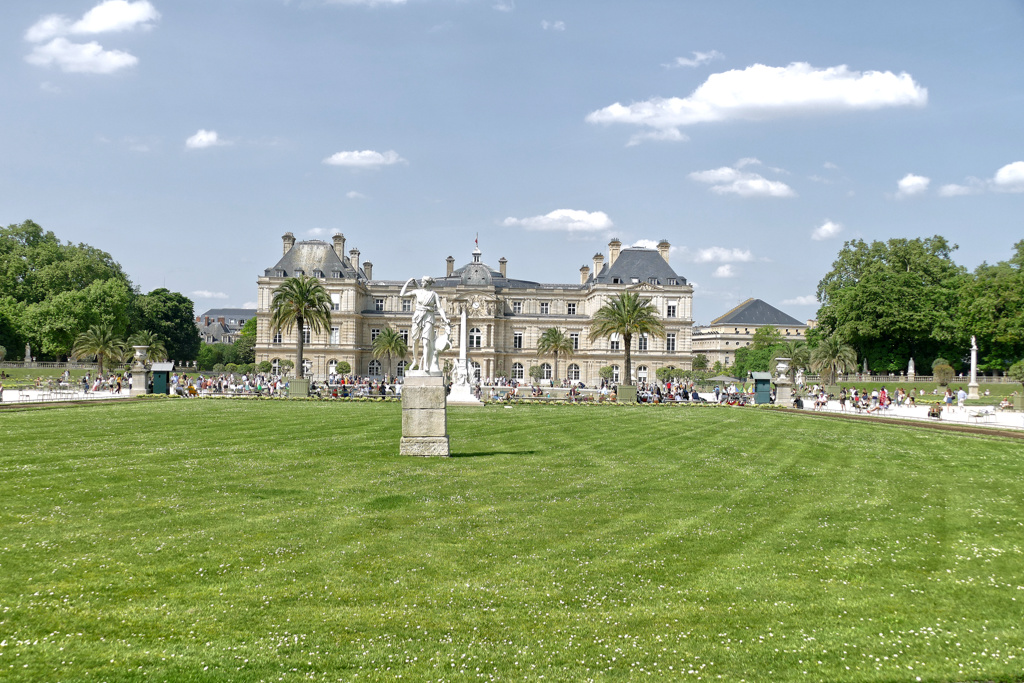
The park is roughly divided into two parts: Around the palace are geometrically arranged flowerbeds and terraces in the style of classicist 17th-century French gardens. The western part of the premises is arranged more freely in the style of English landscape gardens.
The garden is particularly popular with students from neighboring universities and Parisian families since it offers a wide range of leisure and sporting activities.
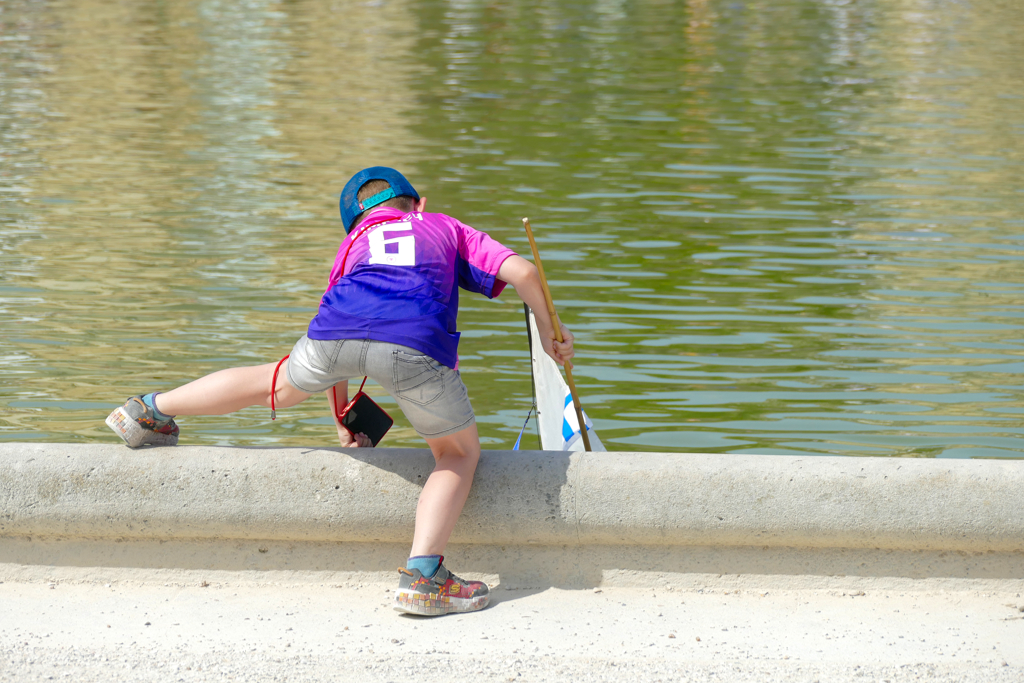
Depending on the season, the garden opens between 7.30 and 8.15 a.m. and closes between 5.30 and 9.30 p.m. You can verify their opening times during your visit on this website.
Parc Monceau
Parc Monceau was founded by Louis-Philippe-Joseph, Duke of Orléans and Duke of Chartres, a cousin of Louis XVI, and opened in 1769.
Through steady acquisitions, the garden expanded to twelve hectares, which earned it the name the Folie de Chartres. This charmingly translates to the Craziness of Chartres.
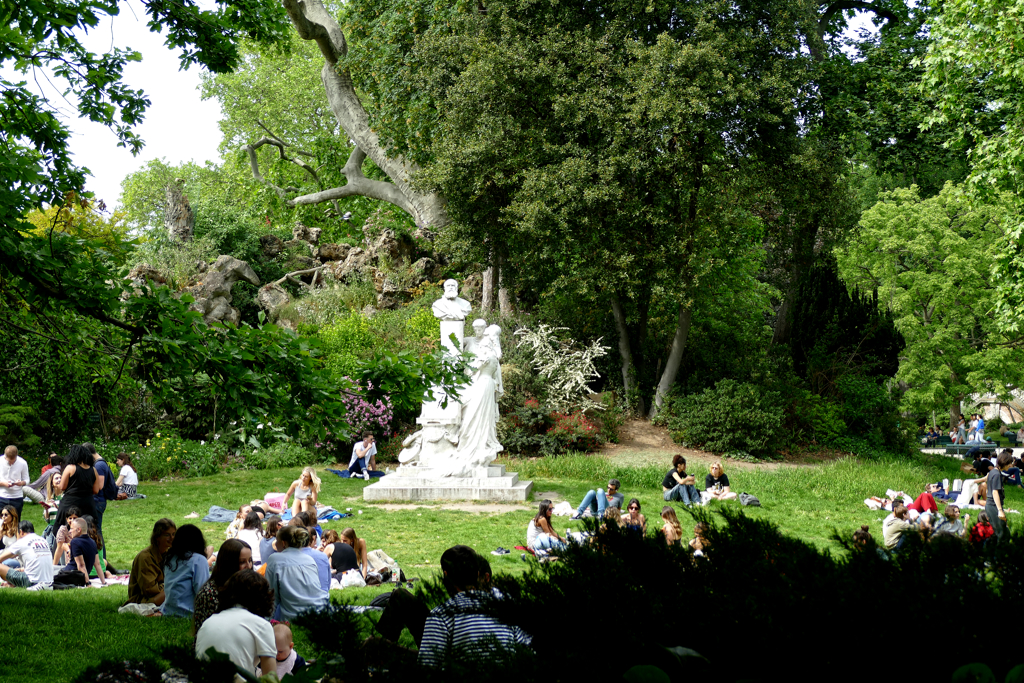
Since Chartres was in constant disputes with the French court and was a close friend of the also quite quirky George IV, he developed a fancy for everything British. He commissioned the Scottish garden architect Thomas Blaikie to design the park in an English style. The playful layout with winding paths and randomly placed statues sets it very much apart from the traditional French gardens. You’ll find various statues of famous French artists such as Guy de Maupassant, Frédéric Chopin, and Édouard Pailleron.
Today, the park, which also contains a number of miniature versions of structures such as Egyptian pyramids, Chinese pagodas, Dutch windmills, and Corinthian columns, is a pleasant’n’popular greenery, especially on hot summer days.
The park is open every day from 7 a.m. to 10 p.m.
Parc de la Villette: Picnic at the Movies
You certainly know Manet’s painting Le Déjeuner sur l’herbe, hence, The Luncheon on the Grass?! Well, you can actually revive this scene at one of Paris’s largest green spaces, the Parc de la Villette. It is also one of the cultural hubs of the city, home to the Cité des Sciences et de l’Industrie museum, the Philharmonie de Paris Concert Hall, and Grande Halle de la Villette, which is a former slaughterhouse turned into an exhibition space for contemporary art.
Obviously, these venues charge entry fees. However, they also host free events from time to time. The most notable free events take place at the Parc de la Villette open-air cinema. Bring your own picnic and enjoy movie night sur l’herbe throughout July and August, but please don’t copy the painting in its entirety, hence, keep your clothes on.
Parc des Buttes-Chaumont
The Parc des Buttes-Chaumont is an English-style landscaped garden on the northwest slope of the Belleville neighborhood. It was installed on the occasion of the World Exhibition in 1867. Today, it is one of the city’s largest parks. The hilly grounds are covered with lush lawns where you can sunbathe or picnic under one of the many old trees. The sloping paths are all interconnected and just perfect for strolling and hiking. Where there used to be an old quarry, there is a lovely grotto catching the water of a 32-meter-high cascade.
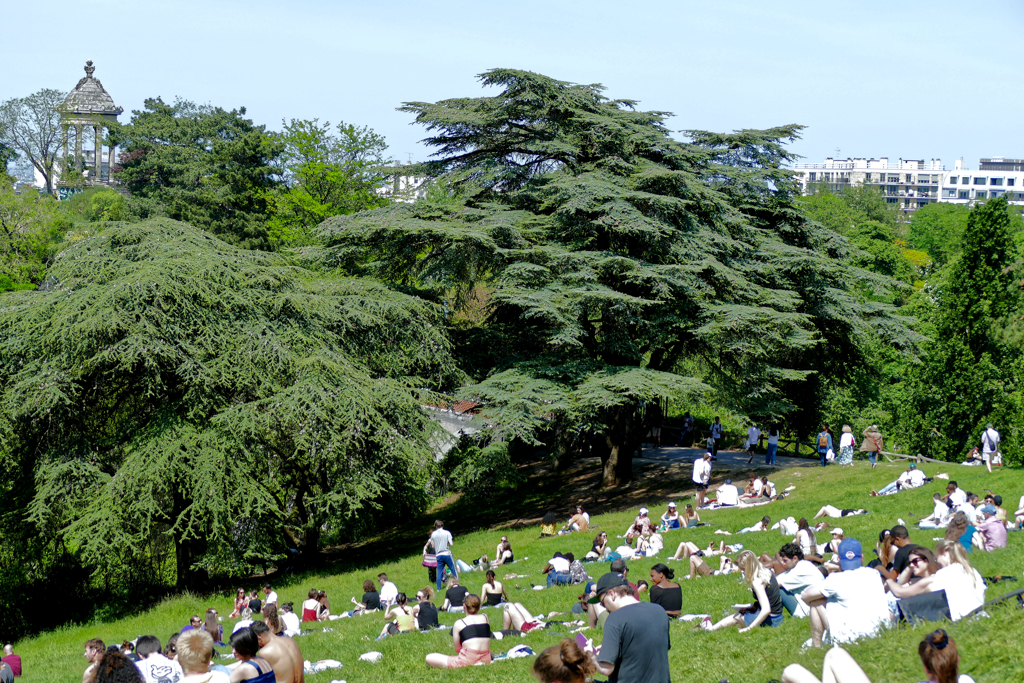
Another impressive feature is a 65-meter-long suspension bridge designed by the one and only Gustave Eiffel. It spans across an artificial lake to the so-called Île du Belvédère. There is a gazebo that was built after the rotunda at the famous Sibyl temple in Tivoli near Rome. As it stands on the rocky peak at a height of 30 meters, it grants a wonderful view of the surroundings all the way to the Sacré-Cœur.
Fun Fact
Since the French Revolution, the site of today’s park had been used as a garbage dump, a sewage pit, and a rendering place. The consumption of horse meat began in the 18th century. Between nine and fifteen thousand horses a year were covered and gutted. Also, not far from today’s park, animal fights between bulls and packs of dogs were held from 1781 onwards. The fact that all the bones were just left lying around led to severe plagues of rats, obviously.
In the Second Empire under Napoleon III., the area became part of Paris, and in 1862, at the suggestion of the famous city planner Baron Haussmann, the State Council decided to convert it into a park.
Museums
Paris has about 180 museums, and about a dozen are accessible free of charge during their opening hours.
However, certain groups, such as young Europeans up to the age of 26, as well as disabled people and professionals such as journalists and teachers, have free access to basically all museums in Paris at any time. Also, there are certain days when all citizens and visitors have the opportunity to visit the city’s famous galleries for free. You can find details on this below.
But first, I will introduce you to the venues that everyone can visit free of charge.
Musée d’Art Moderne de la Ville de Paris
The Museum of Modern Art of the City of Paris, in short MAM, is housed in the east wing of the beautiful Palais de Tokyo, which was built on the occasion of the World Exhibition in 1937. The venue is divided into two parts, namely modern and contemporary.
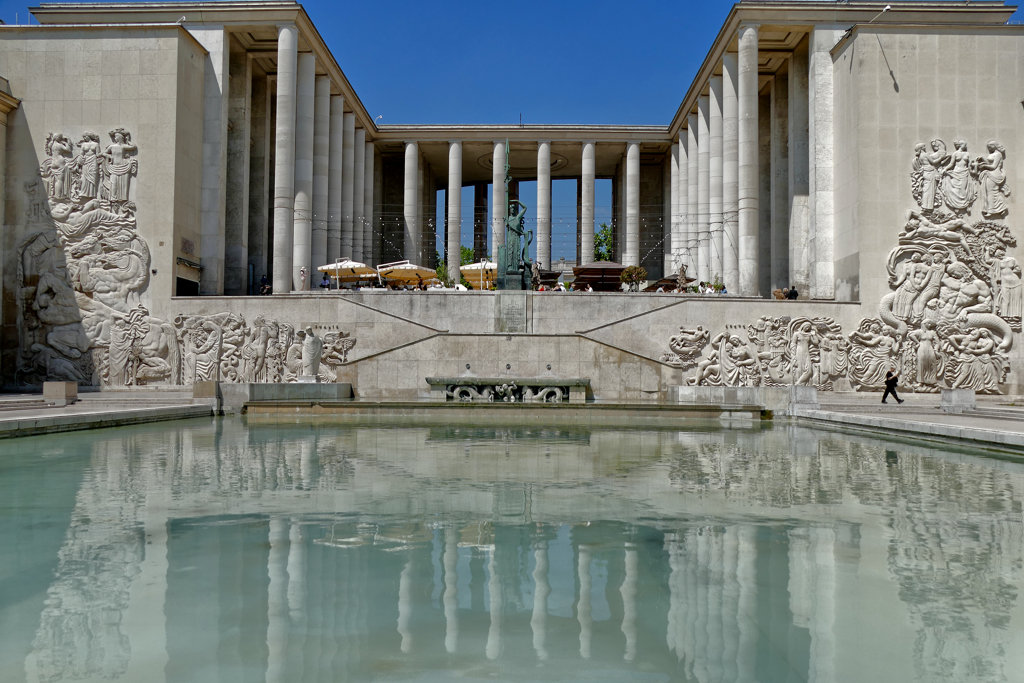
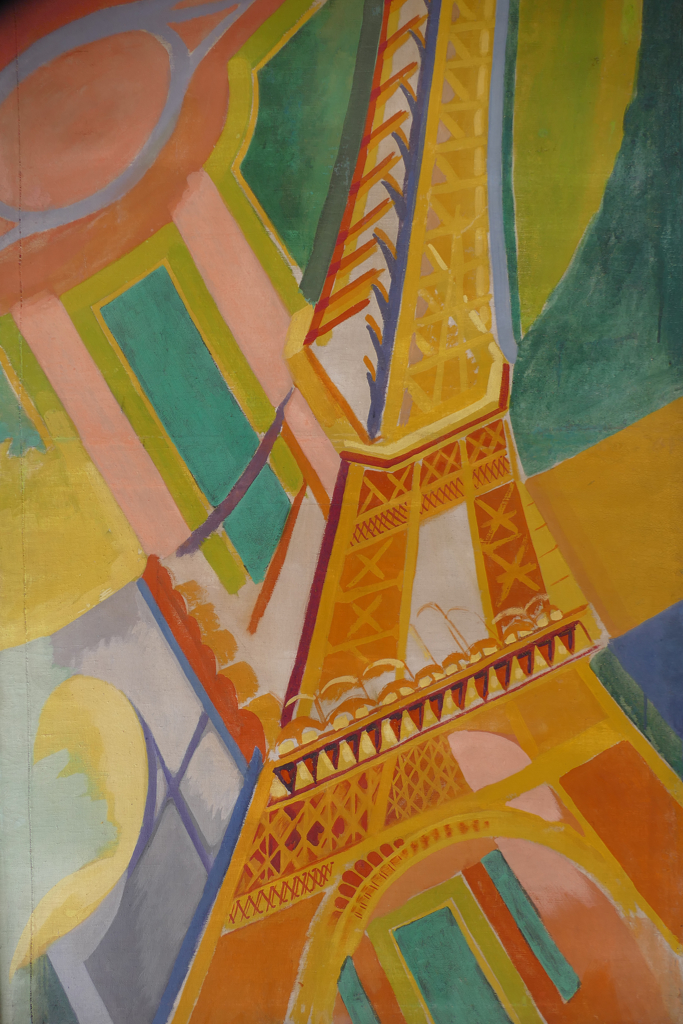
However, it was officially opened as the Paris Museum of Modern Art only in 1961.
The collection contains internationally important works, some of which were previously at the Petit Palais Museum, which I’m introducing below. Today, the collection comprises more than 15,000 works from the various art movements of the 20th century. You get to see outstanding works by Georges Braque, Robert Delaunay, André Derain, Fernand Léger, and Pablo Picasso, to name just a fraction of the rich collection.
In addition, the MAM houses an important collection of contemporary artists.
Dufy’s Masterpiece
One of the most impressive exhibits is the installation of Raoul Dufy’s La Fée Électricité, The Spirit of Electricity in English. This monumental piece was created for the World Exhibition in 1937.
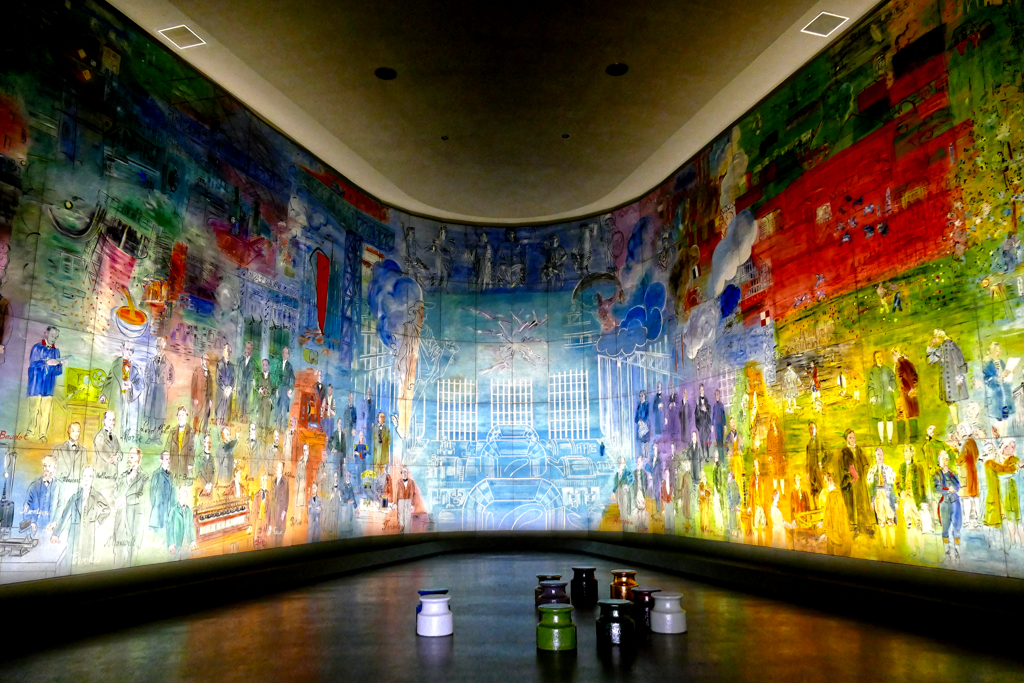
The mural consists of 250 large panels that cover the walls of a U-shaped room of 600 square meters. It traces the history of electricity from the time of Archimedes to recent technical achievements.
Dufy’s amazing work and other paintings on display are proof that you can enjoy some of the most important masterpieces even at free venues. This applies not only to the MAM, but also to the Petit Palais, the Musée Bourdelle, and other galleries listed in this section. As a matter of fact, some of these free venues are my favorite art museums in Paris.
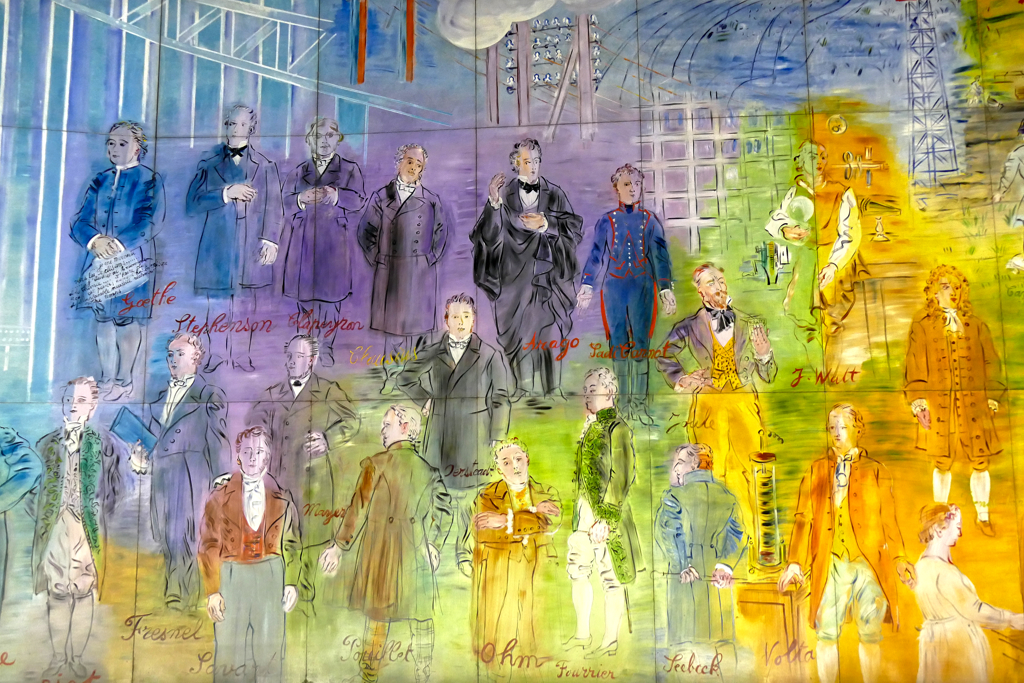
The Musée d’Art Moderne de la Ville de Paris is open from Tuesday to Sunday between 10 a.m. and 6 p.m., and admission to the permanent collection is free of charge.
Fun Fact
In 2010, five paintings with an estimated value of up to 100 million euros were stolen from the MAM. The thief entered from the back of the museum without activating the alarm system, yet was recorded on video. Although he and his accomplices were arrested in 2012, the stolen works by Braque, Legér, Matisse, Modigliani, and Picasso are missing to this date.
Petit Palais
Perfectly located between the river Seine and the legendary Avenue des Champs-Élysées are the neo-Baroque Belle Époque style buildings today known as the Grand and Petit Palais. They were constructed on the occasion of the World Exhibition in 1900.
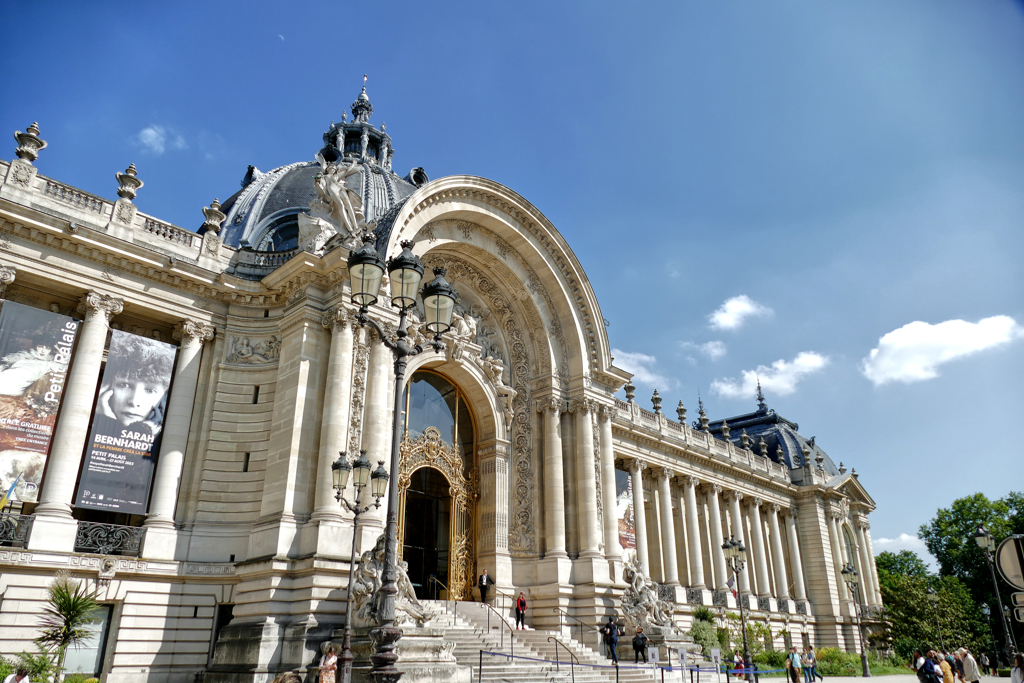
While the Grand Palais hosts changing temporary art exhibitions, the Petit Palais houses the paintings and sculptures that the City of Paris has purchased or commissioned since 1870.
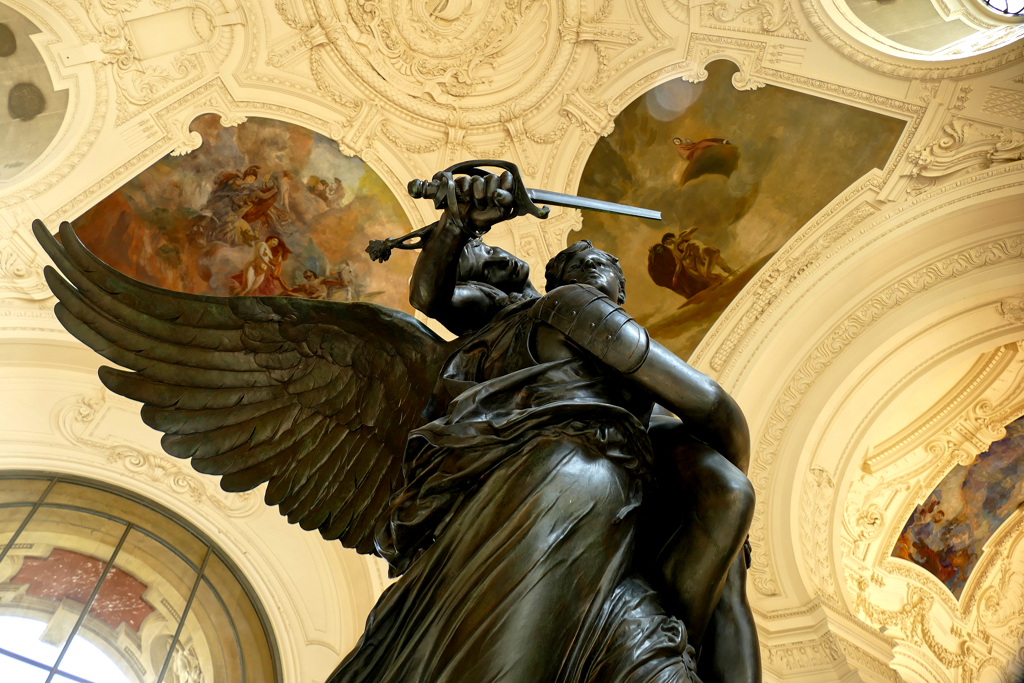
Designed by the architect Charles Girault, the façades of the semi-circular building consist mainly of windows. Inside, the stately rooms with their richly painted ceilings are a work of art in themselves.
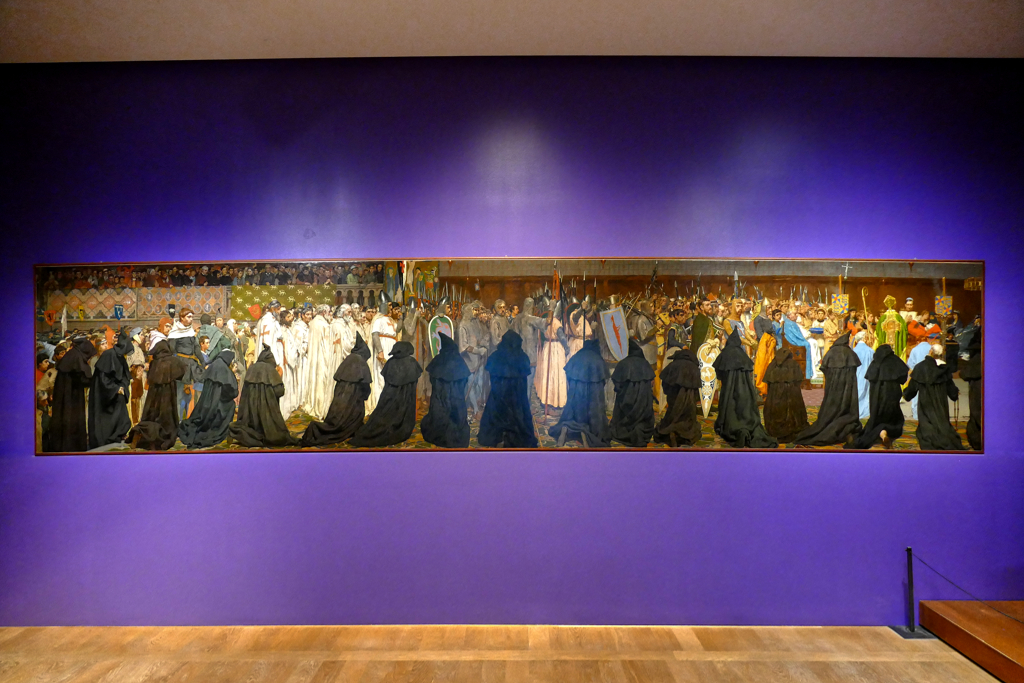
The Petit Palais is open from Tuesday to Sunday between 10 a.m. and 6 p.m. and admission to the permanent collection is free of charge.
Musée Carnavalet
The Musée Carnavalet is located in the Marais district. It is dedicated to the history of the city. It is named after the palace in which it is housed, and which has been owned by the city since 1866. However, the palace was already constructed in the mid-16th century as a posh crib for wealthy Parisians.
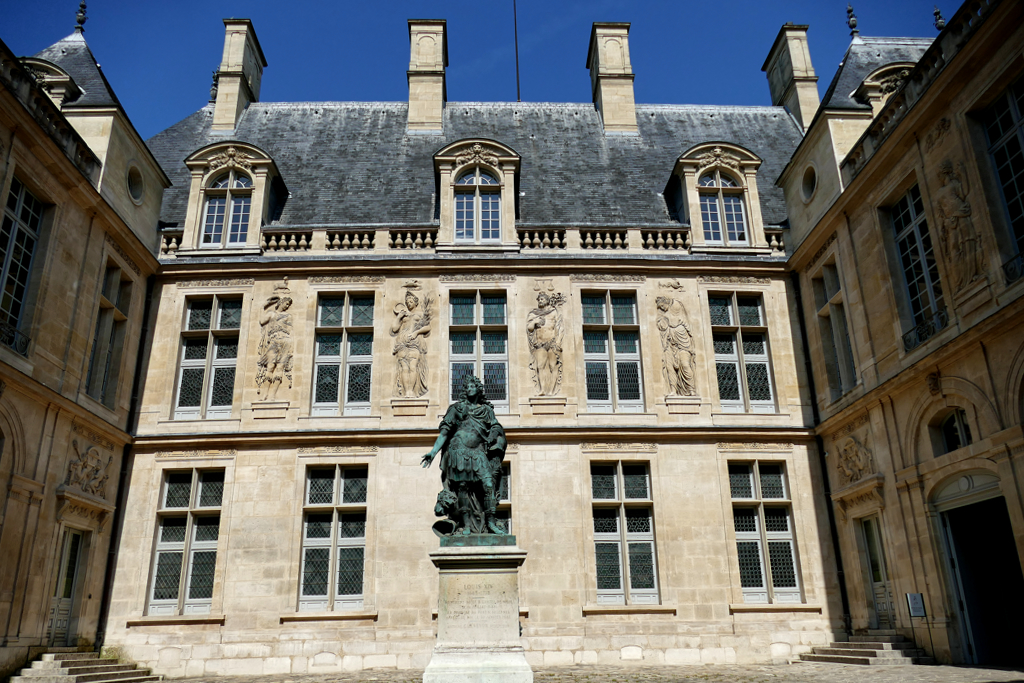
Today, the museum houses exhibits from the Roman Empire to the present day. These include Gothic sculptures, a model of Paris from the 16th century, paintings of the city from the 17th century, as well as furniture, decoration, and everyday objects from different centuries.
The story of Paris is told in a unique and very lively way. Also, the museum facilitates a multi-generational visitor experience as ten percent of the exhibits are at child height. Also, all areas are wheelchair accessible.
Make sure to also visit the beautifully planted inner courtyard. There, you can take a break from your cultural visit, enjoying small snacks and refreshments.
The permanent exhibition of the Musée Carnavalet can be visited free of charge from Tuesday to Sunday between 10 a.m. and 6 p.m.
Musée Bourdelle
The Musée Bourdelle is the former studio of French sculptor Antoine Bourdelle. It is a wonderful example of a Parisian atelier from the turn of the 20th century.
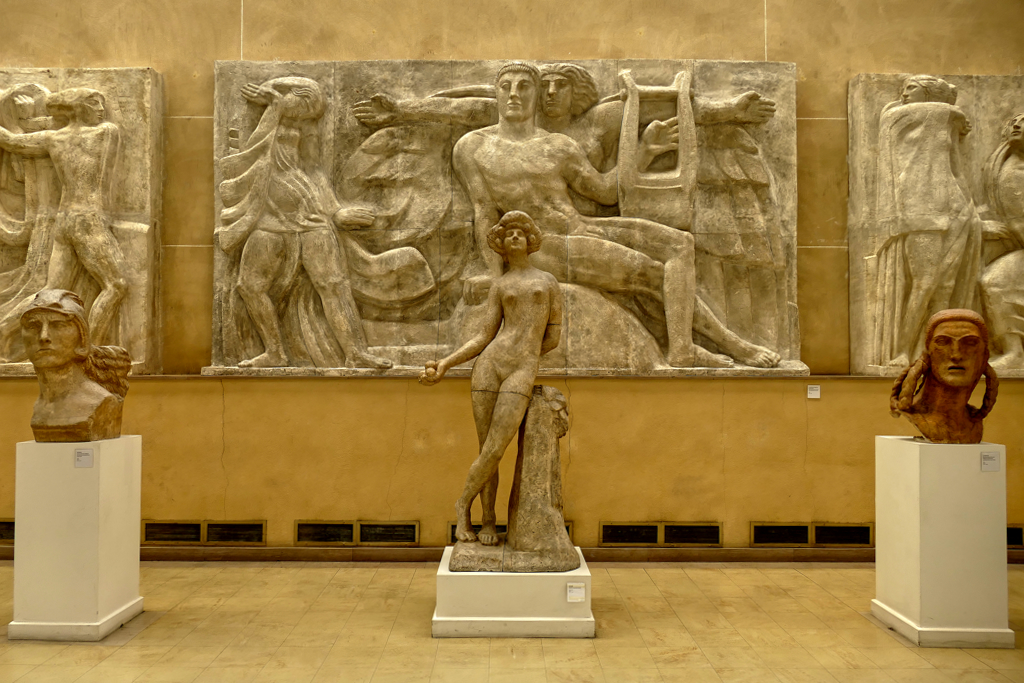
Bourdelle worked in this studio from 1885 to 1929. Already in 1922, he began to plan how to turn his workshop into a museum. In the early 1930s, Gabriel Cognacq provided the necessary funds so that the artist’s works could remain on the premises. The museum was then inaugurated in 1949.
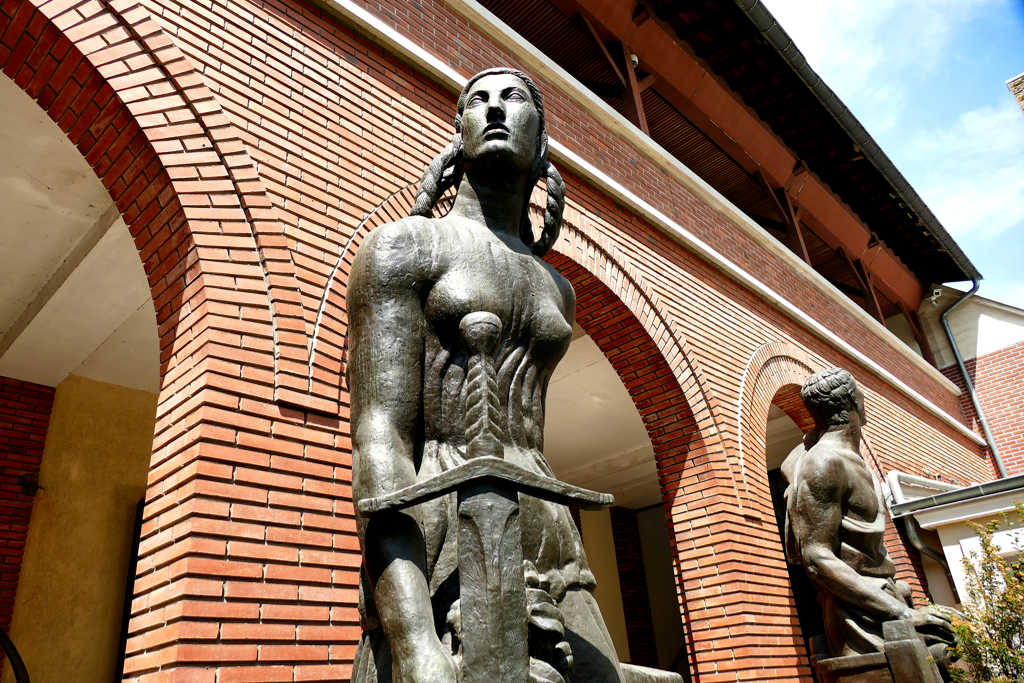
Today, the museum houses a collection of more than 500 works, including sculptures, paintings, and Bourdelle’s collection of works by artists such as Eugène Carrière, Eugène Delacroix, Jean Auguste Dominique Ingres, and Auguste Rodin, to name the most famous ones. You also get to see the original plaster casts of some of his most famous works, including 21 busts of Ludwig van Beethoven.
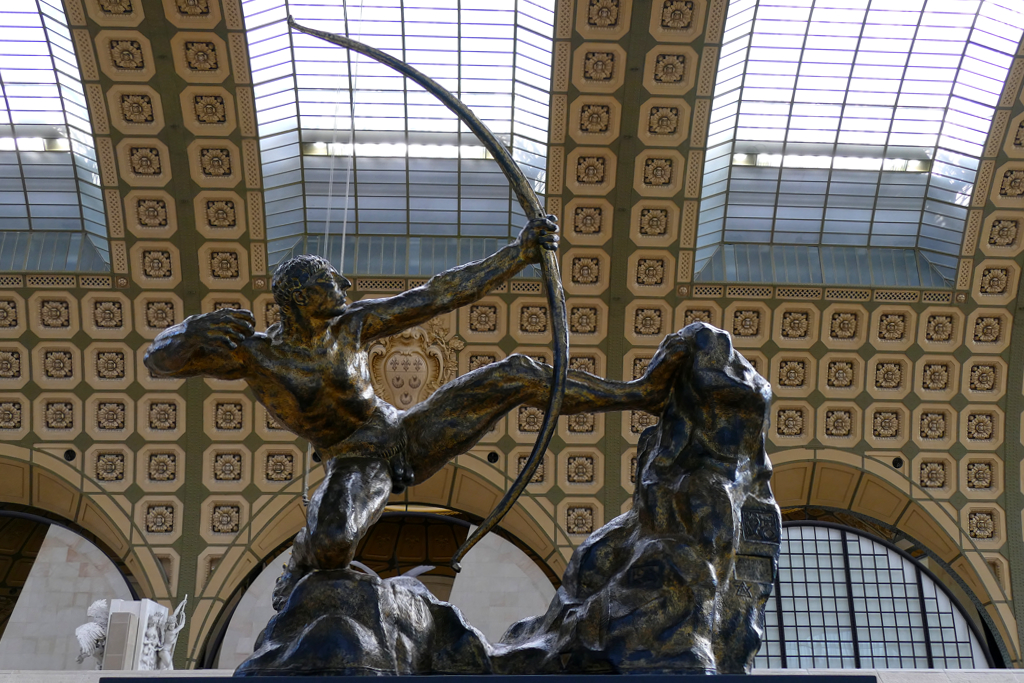
By the way, Bourdelle’s heirs also installed a garden museum with 56 of his sculptures in Égreville. Also, some of his most impressive statues are found at the Hakone Open Air Museum in Japan.
The Musée Bourdelle can be visited free of charge from Tuesday to Sunday between 10 a.m. and 6 p.m.
Musée Cognacq-Jaÿ
Between 1900 and 1925, Ernest Cognacq and his wife Marie-Louise Jaÿ, the founders and owners of the La Samaritaine department store, collected a large variety of valuable furniture and exquisite works of art.
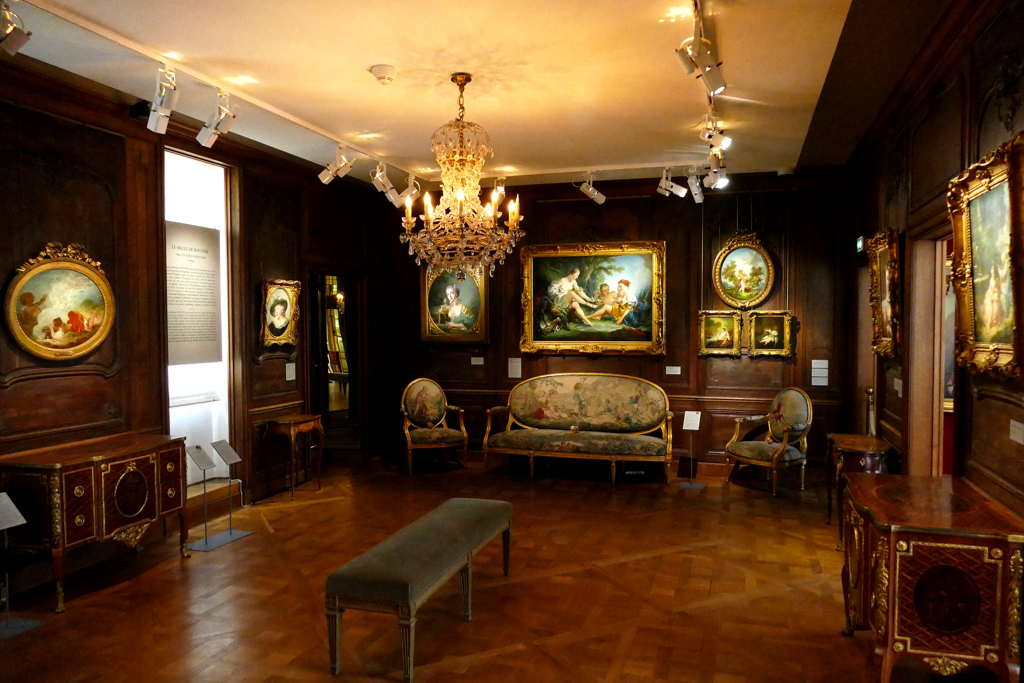
The collection includes mostly Rococo works by François Boucher, Jean-Honoré Fragonard, Giovanni Battista Tiepolo, and Jean-Antoine Watteau, but also paintings by Maurice Quentin de La Tour and Thomas Lawrence. All these pieces are presented in beautifully furnished and decorated salons.
Since the Cognacq-Jay remained childless, they donated their collection to the city of Paris in 1928. It was then presented to the public at a museum on Boulevard des Capucines. In 1990, however, it was moved to the Hôtel Donon, which I’m listing below in the part about the Hôtels Particuliers in the Marais neighborhood.
The Musée Cognacq-Jay can be visited free of charge from Tuesday to Sunday between 10 a.m. and 6 p.m.
There Is More
So, these are only my favorite five museums in Paris that anyone can visit for free at any time during the opening hours. However, there is also the Musée de la Vie Romantique, established in 1983, which is dedicated to the art and literature of the first half of the 19th century, as well as the Musée Cernuschi, showcasing Asian art.
Also, you can visit the Maison de Balzac free of charge. Obviously, it is dedicated to the novelist Honoré de Balzac, who lived and wrote here for quite a while. The house on Rue Raynouard has a lush, spacious garden and is the only Parisian residence of Balzac that still exists. Another writer’s house museum is the Maison de Victor Hugo at the mesmerizing Place de Vosges. The famous novelist lived here between 1832 and 1848.
Very interesting is also the Musée Curie, which offers the public the opportunity to discover the history of the discovery of radioactivity and its first medical applications using radiotherapy. It was founded after Curie’s death on the ground floor of the Curie Pavilion of the Institut du Radium in 1934. This actually used to be Marie Curie’s former laboratory.
Apart from the Musée d’Art et d’Histoire du Judaïsme in the heart of the Marais district, where you have to pay an entrance fee, there is the Mémorial de la Shoah, a central memorial to the Holocaust in France. It remembers the persecution of the Jews in France and in the area of the Vichy regime from 1940 to 1944. It houses a permanent exhibition as well as temporary exhibits.
Other Ways to Visit for Free
I assume that visiting all those free museums should keep you quite occupied. However, maybe you also want to see those world-famous venues such as the Louvre, the Musée d’Orsay, the Musée Rodin, or L’Orangerie. That’s understandable, and there actually are ways to see all those glories without paying admission. Nope, I’m not referring to gatecrashing.
As a matter of fact, many Parisian museums can be visited for free on the first Sunday of every month.
Depending on the season, more or fewer museums and monuments participate in the free Sunday. Hence, you should check beforehand if the venue of your choice is participating and book a free ticket as soon as you can.
In general, young residents of the EU region under the age of 26, as well as international students, can visit museums free of charge at any time during the opening hours. And so can certain professionals, such as teachers and journalists. Obviously, you need to show proof by presenting a student or press card together with your ID.
Street Art
Paris is definitely one of the world’s graffiti capitals, and a visit to what you could actually call open-air galleries is free, obviously.
While you’ll spot amazingly artistic murals all over the city, urban art is mainly found in rather remote neighborhoods like Belleville and the 13th arrondissement.
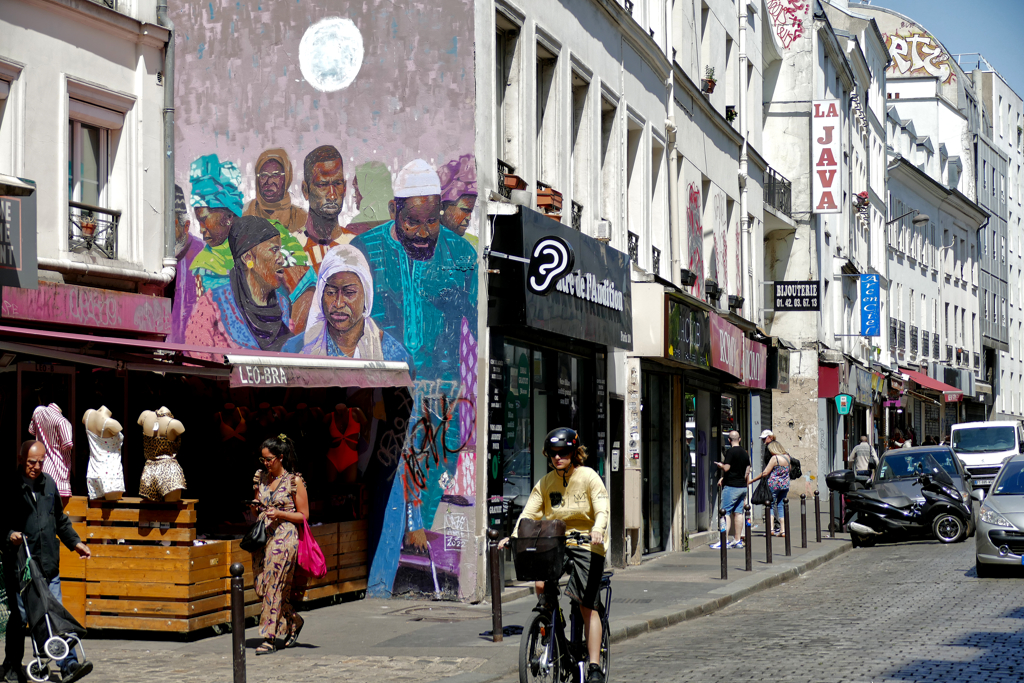
In 2009, the 13th district’s local government initiated the improvement of the neighborhood’s appearance through street art. They transformed Boulevard Vincent Auriol and the adjacent streets’n’squares into a veritable street museum. You’ll see larger-than-life murals by internationally renowned artists such as Stephen Fairey, D*Face, Conor Harrington, INTI, as well as French muralist C215.
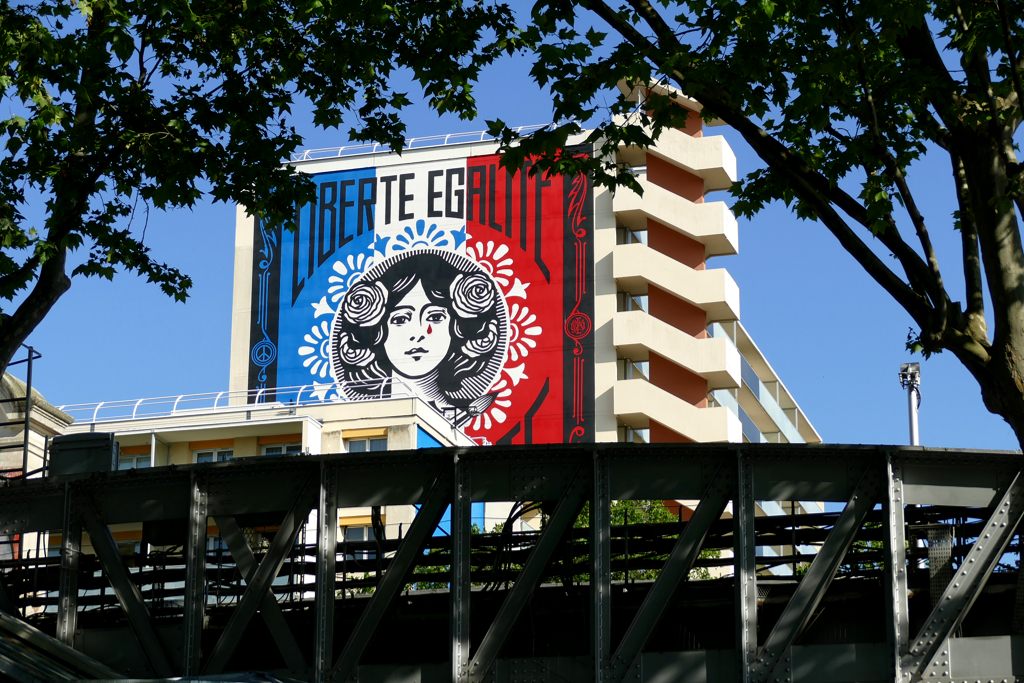
As a matter of fact, local street artist C215, whose real name is Christian Guémy, was commissioned by the Center des Monuments Nationaux to portray a total of 28 historical figures, some of whom are buried in the Pantheon.
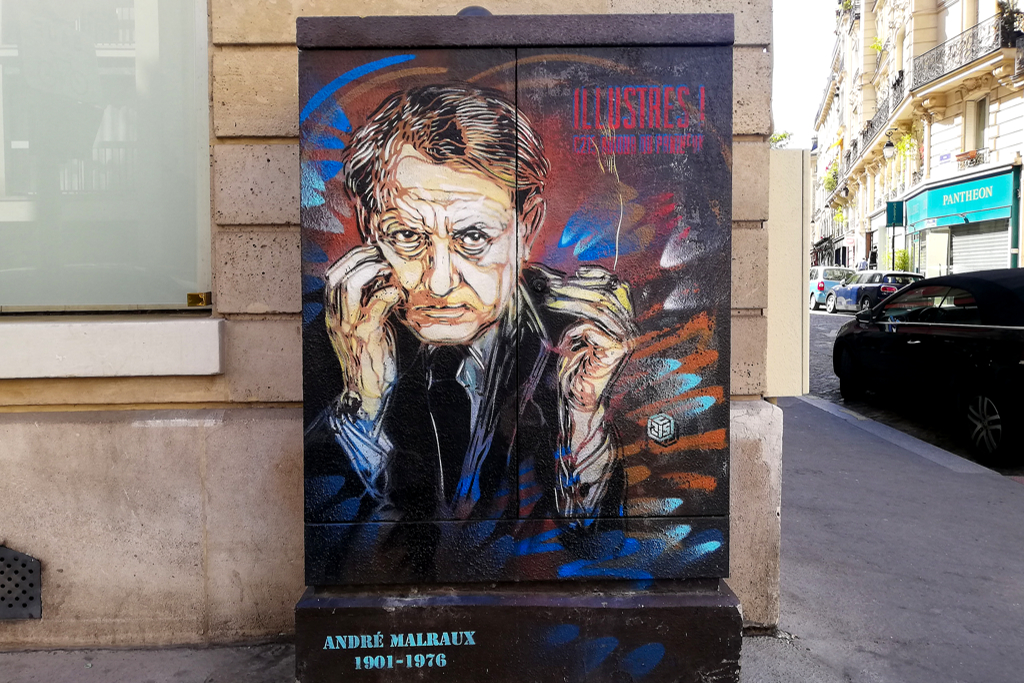
Hence, as you walk the streets of Paris, make sure to look out for French resistance martyr Berty Albrecht and journalist and resistance fighter Pierre Brossolette, blind educator and inventor Louis Braille, politician Jean Zay, physicist Marie Curie, and many more.
Around Beaubourg And in the Marais
Another neighborhood to go street art hunting is Le Marais and its vicinity. Everybody knows the Place Igor Stravinsky for the iconic Tinguely fountain. But as you take a good look around, you’ll spot huge murals as well as smaller, nonetheless, very intriguing urban art.
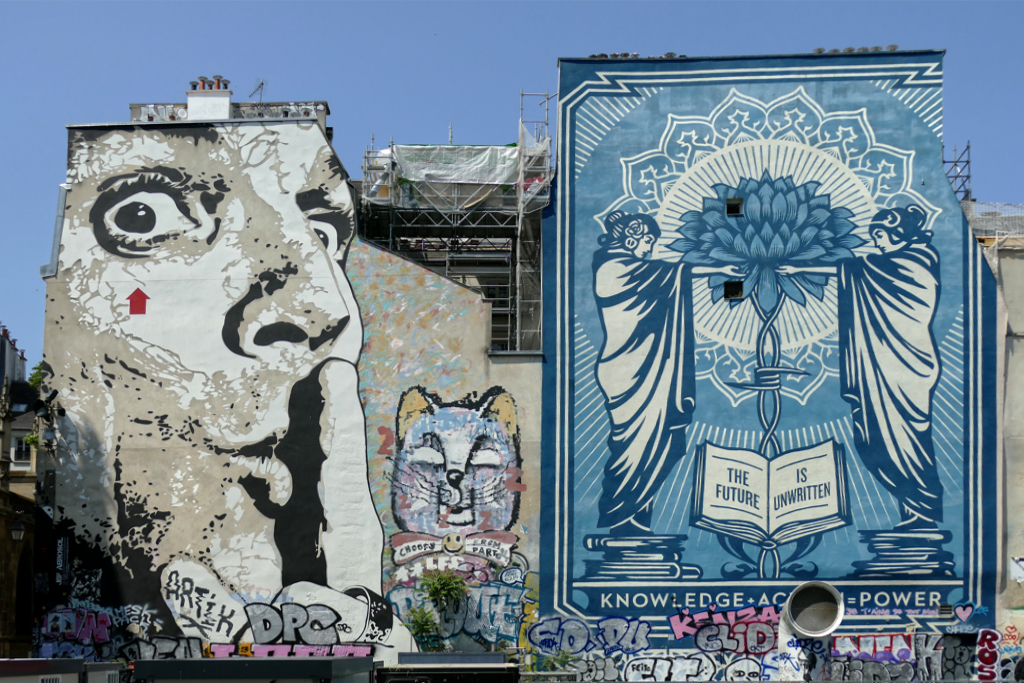
One of my favorites is the absolutely mind-blowing artist Heber Fleitas from Argentina. Based in Buenos Aires, he’s working as a scenographer, a painter, a tattoo artist, and, obviously, a muralist.
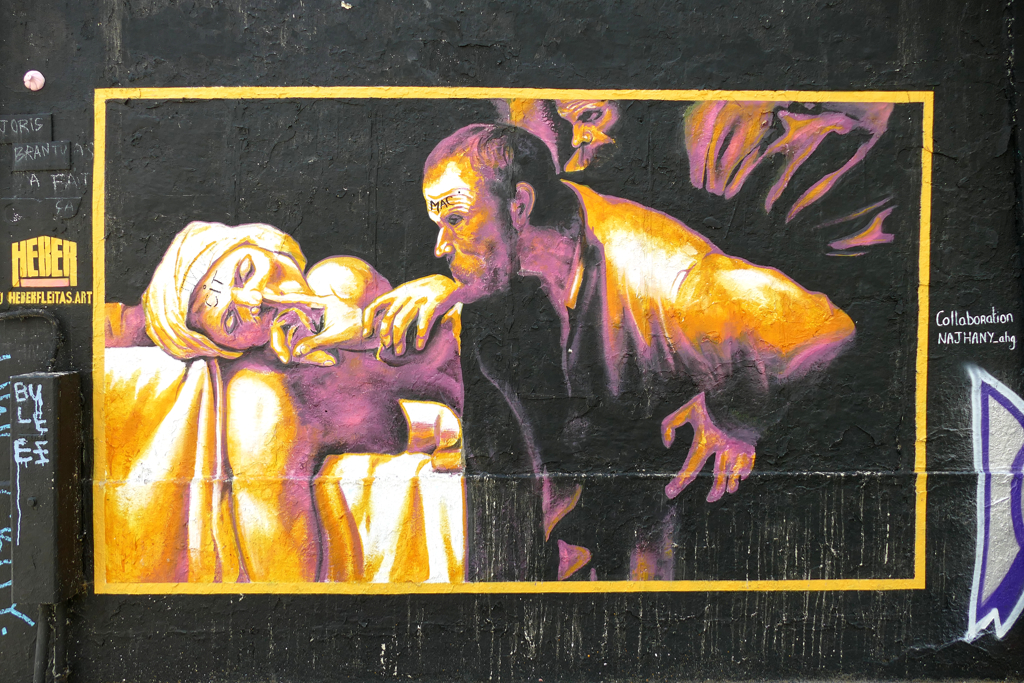
In his middle-sized paintings, he interprets, transforms, and combines icons of classical artwork, especially baroque and neoclassicism. He seems to be particularly taken with Jacques-Louis David and Caravaggio and doesn’t shy away from uniting their protagonists in one single mural. But Fleitas also reinterpreted Picasso’s Guernica and Magritte’s Son of Man in his street art.
Around Montmartre
Finally, also Montmartre, probably Paris’ most iconized neighborhood around the Sacre Coeur Basilica, is full of small yet very charming works of urban art. For instance, there are mysterious portraits by Sébastien Bouchard.
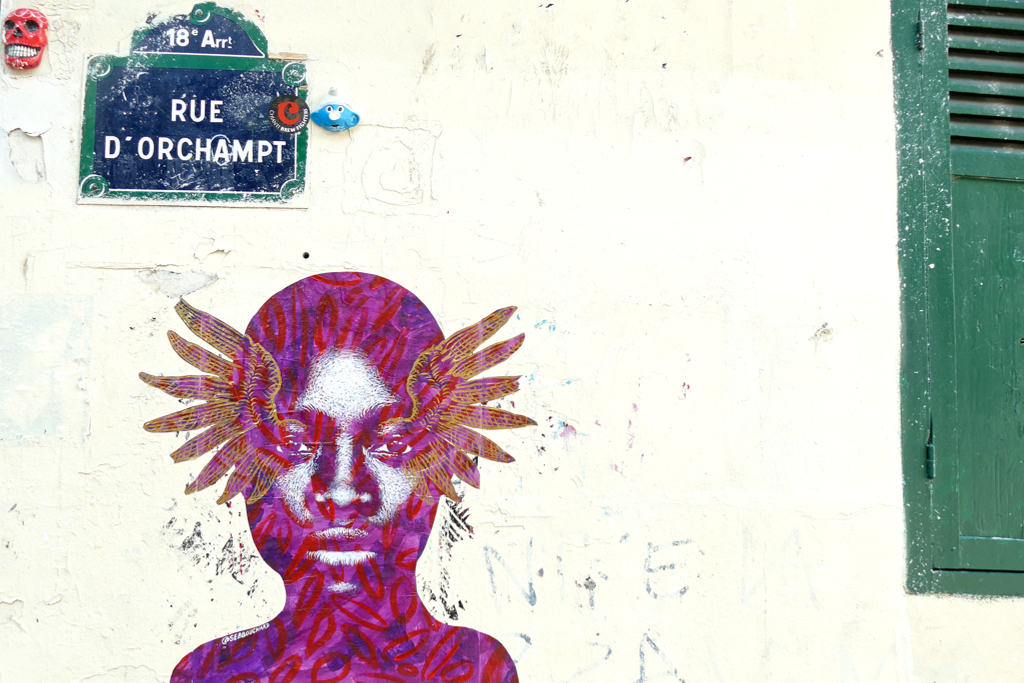
Bouchard was born in Nantes in 1971. With his highly artistic portraits, he wants to bridge the gap between academic art, international folklore, and urban art.
Montmartre’s most iconic work of street art, however, is definitely the so-called Mur des Je t’aime, hence, the I love you wall in English. On the eastern façade of an older apartment building is the lettering I Love You in over 300 variants and 250 languages.
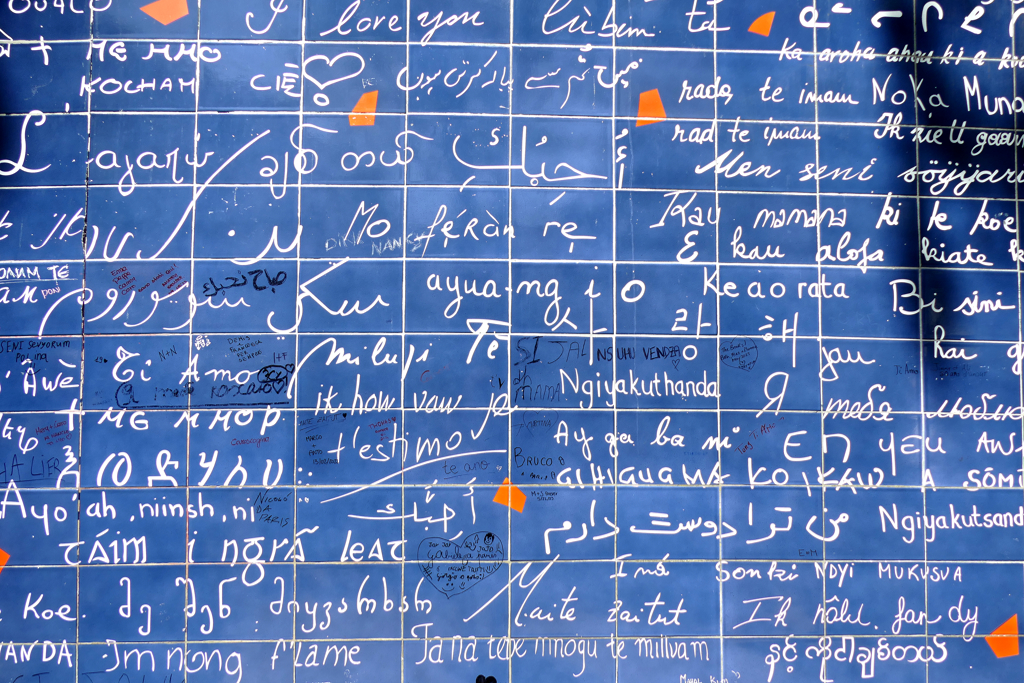
The idea is based on Jules Verne’s journey around the world in 80 days. The initiator, Parisian singer Frédéric Baron, began to collect I Love Yous in 1992. His brother, who was a sailor, brought back new variants from distant countries.
Finally, the wall was created from 612 rectangular, dark blue enameled panels in 2000. Today, the Mur des Je t’aime covers an area of an incredible forty square meters. It can be accessed on weekdays between 8 a.m. and 5.30 p.m. and on weekends from 9 a.m. until 5.30 p.m.
To learn more about Paris’ amazing urban art projects, rush over to my post Best Street Art in PARIS: How Mehdi Ben Cheikh Transformed the 13th Arrondissement Into An Open-Air Gallery, where I’m introducing various street artists and their works in detail.
Monuments
Obviously, Paris has all those world-famous monuments, which are the city’s icons. No wonder everyone needs to see them on their visit to Paris. However, not only is the entrance to the most popular monuments quite pricey. Almost most importantly, the lines can be insane, especially during the high season. Hence, it’s great that the sight of those signs is best from afar, anyway. I mean, how else do you want to fit a 330-meter-high tower into a picture if not from a distance?
Eiffel Tower
You cannot get up the tower for free, obviously. Yet, you can enjoy it from many alluring spots around the city. This being said, there are two places from which you have a completely unobstructed view of the iconic iron-frame tower. The first one is the large greenery Champ de Mars on the eastern side of the tower.
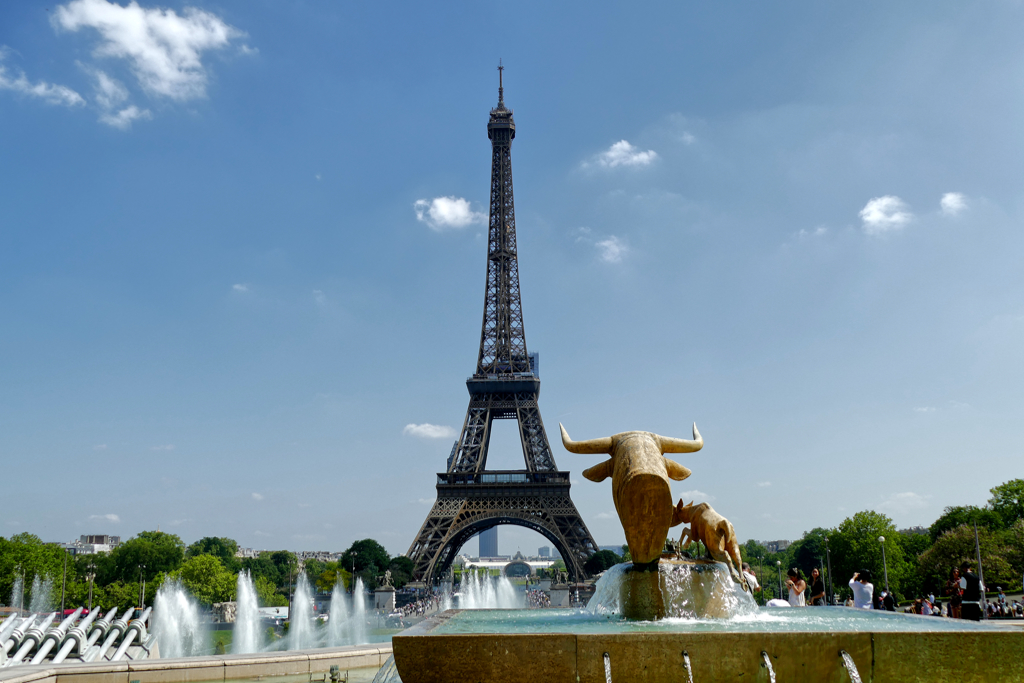
The other one is the gardens of the Trocadéro. They are on the western side of the tower on the northern bank of the River Seine. The Jardins du Trocadéro were completed for the World Exhibition in 1878. The greeneries were laid out to complement the Palais du Trocadéro and arranged around huge basins and fountains, and decorated with impressive sculptures.
Today, the Trocadéro complex grants you the most picturesque views of the Eiffel Tower and beyond from many different angles.
Built from 1887 to 1889, Gustave Eiffel designed it as a monumental entrance portal and a lookout tower for the World Exhibition commemorating the 100th anniversary of the French Revolution. At that time, the tower was the tallest building in the world. In 1930, however, the Chrysler Building in New York took over.
Nevertheless, as the city’s tallest building, it is still the most important feature in the cityscape. With around seven million visitors every year, the Eiffel Tower is one of the most visited landmarks in the entire world.
Arc de Triomphe
Just as it is not possible to go up the Eiffel Tower for free, you cannot visit the inside of the Arc de Triomphe without a ticket. Nevertheless, Paris’ triumphal arch located in the center of Place Charles de Gaulle is an impressive sight even from below.
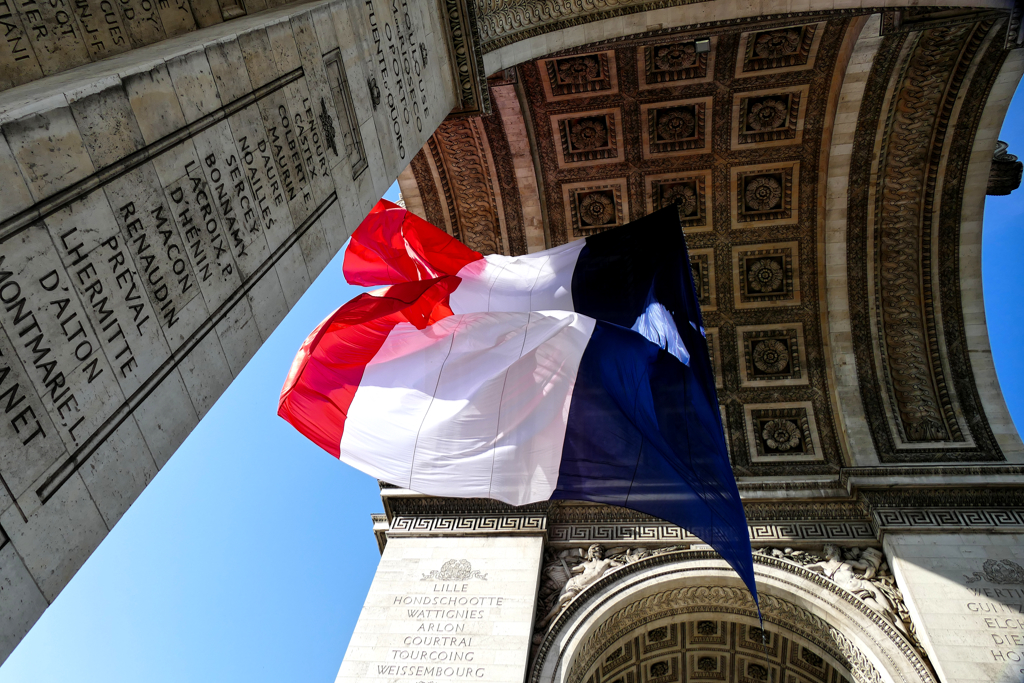
Emperor Napoleon I. commissioned the Arc de Triomphe de l’Étoile after the Battle of Austerlitz to celebrate his victories in 1806. Construction was finished in 1836. Today, the names of all French victories and generals are inscribed on the inner and outer walls of the limestone structure. Beneath the arch lies the so-called Tomb of the Unknown Soldier. An Eternal Flame is burning in memory of the unidentified soldiers who fell in WWI.
The Arc de Triomphe stands at the crossing of 12 boulevards in the center of some very busy roundabout traffic. And yet, you can spot people running like crazy across the road instead of comfortably crossing through the underpasses below the road.
Please, don’t be one of them.
Standing under the arch, you don’t have the same panoramic view as from above, obviously. But since the Place Charles de Gaulle is considerably elevated, you still have a grand view down the Avenue des Champs-Élysées all the way to the Place de la Concorde; and most importantly, it’s completely free of charge.
My Tip
Apart from regular wreath-laying, there is also a patriotic ceremony with flags and music, and pomp and circumstance every evening at 6.30 p.m.
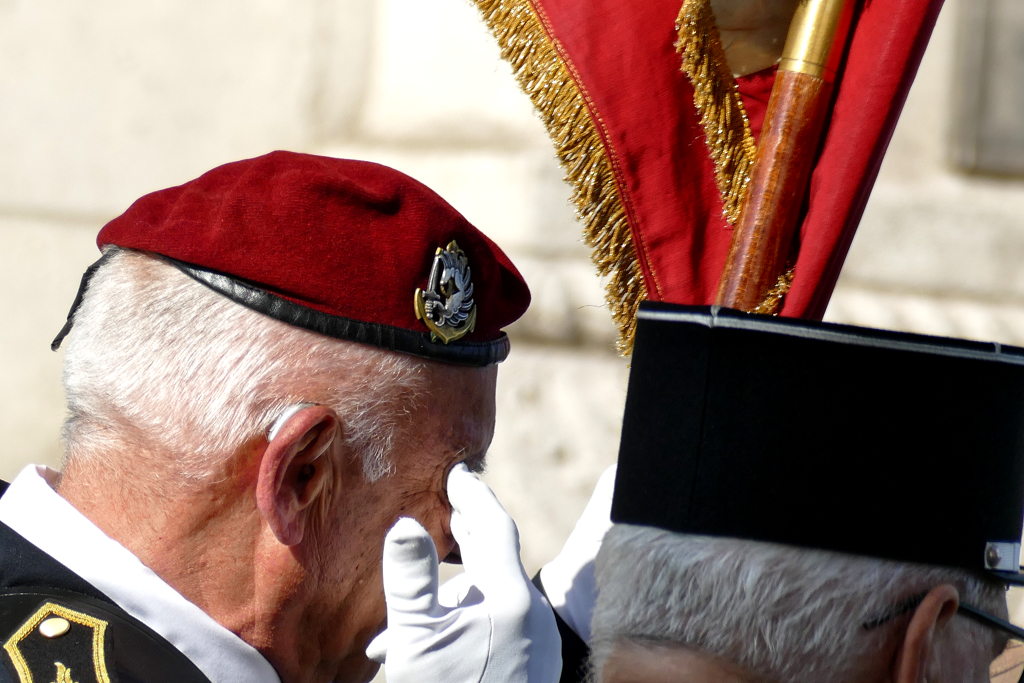
You can find out exactly who is organizing the particular ceremony and what is happening on the respective date in an online calendar.
Arènes de Lutèce
Although the Arènes de Lutèce, hence the Arena of Lutetia, is considered the oldest surviving structure in Paris, not many visitors know about it. This Roman amphitheater dates from the 1st century and was used until the end of the 3rd century. Around 17,000 people were able to attend the spectacles, such as theater performances, but also gladiators fighting wild animals. Today, it is located on Rue Monge in the 5th arrondissement.
With the advent of Christianity, Roman circuses declined. The arena of Lutetia – which used to be the city’s Latin name – fell into despair. Its stones were used to build the city walls and other fortifications. Amazingly, the ruins were not rediscovered until 1869. In that year, the Compagnie Générale des Omnibus built a bus depot in the very spot. Since no less an influential figure than Victor Hugo asked in an open letter to put the arena under protection, the city declared the ruins a historic monument.
Eventually, the bus depot was demolished, and the amphitheater was restored as well as possible in 1916. Today, you can even see the lions’ cages there.
The site is accessible every day from around 9.30 to around 9 p.m.
City Palaces in the Marais
The Marais is one of the trendiest neighborhoods in Paris. Cool bars and crowded restaurants, hip stores, and expensive, stylish apartments – these are just a few things you can find in the Marais neighborhood today.
In the 17th century, the Marais became the preferred residential area for the nobility, who had numerous villas and city palaces built for them. In the course of the French Revolution, however, the rich’n’famous were expelled from their properties. They probably took their belongings with them, however, they had to leave their posh cribs behind.
Today, many of the beautiful palaces, the so-called Hôtel Particuliers can actually be visited free of charge.
Thinking about the most beautiful palaces in Paris, grand courts and chateaux like the Palais du Louvre, the former residence of the French Kings, come to mind. While in this post, I’m introducing only the Hôtels you can access for free, you get a complete list of the 10 Most Beautiful Palaces in the Marais Neighborhood, including extensive information in my same-titled post.
Hôtel de Guénégaud-des-Brosses
Let’s start with the Hôtel de Guénégaud-des-Brosses, which is located at 60 Rue des Archives. It was commissioned by Jean-François de Guénégaud des Brosses and completed in 1655. Together with the Hôtel Carnavalet, it is the best-preserved city palace designed by the famous architect François Mansart. Today, it houses the Musée de la Chasse et de la Nature, which can be visited free of charge. You can access the Hôtel during the opening hours from Tuesday to Friday between 11 a.m. and 6 p.m. On Wednesdays, it closes only at 9.30 p.m.
Hôtel de Soubise
Just around the corner is the Hôtel de Soubise, definitely one of the most beautiful city palaces you’ll get to see in Paris. It was commissioned by François de Rohan, Prince of Soubise. Eventually, the Prince’s son Hercule-Mériadec de Rohan-Soubise commissioned Germain Boffrand to design the Apartment du Prince on the ground floor and the Apartment de la Princesse on the first floor on the occasion of his marriage to Marie-Sophie de Courcillon. The apartments were completed in 1739 and are exquisite examples of the Rococo style during Louis XV.
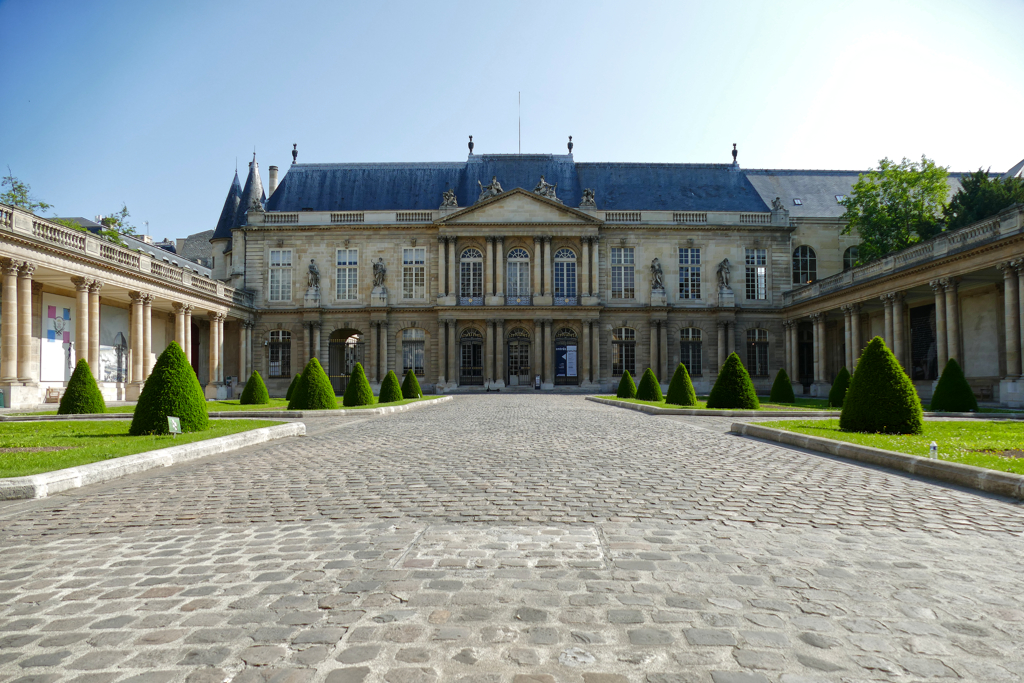
Today, the Hôtel de Soubise houses the Musée des Archives Nationales. Entrance is free during the opening hours on weekdays except for Tuesdays between 10 a.m. and 5.30 p.m. and on weekends from 2 p.m. to 5.30 p.m. The entrance is at 60 Rue des Francs Bourgeois.
Hôtel de Donon
Next on our route is the Hôtel de Donon. Médéric de Donon, lord of Châtres-en-Brie and Loribeau, commissioned this palace in 1575. Today, it houses the Cognacq-Jay art collection, which I’ve already introduced above in the museum section.
Hôtel de Carnavalet
The same goes for the Hôtel de Carnavalet, which houses the same-named museum. Jacques des Ligneris, then President of the Paris Parliament, commissioned the Hôtel in 1548. Its name, however, derives from Madame de Kernevenoy of Brittany, who owned it in 1578. François Mansart radically remodeled the Hôtel de Carnavalet to its present appearance in 1655.
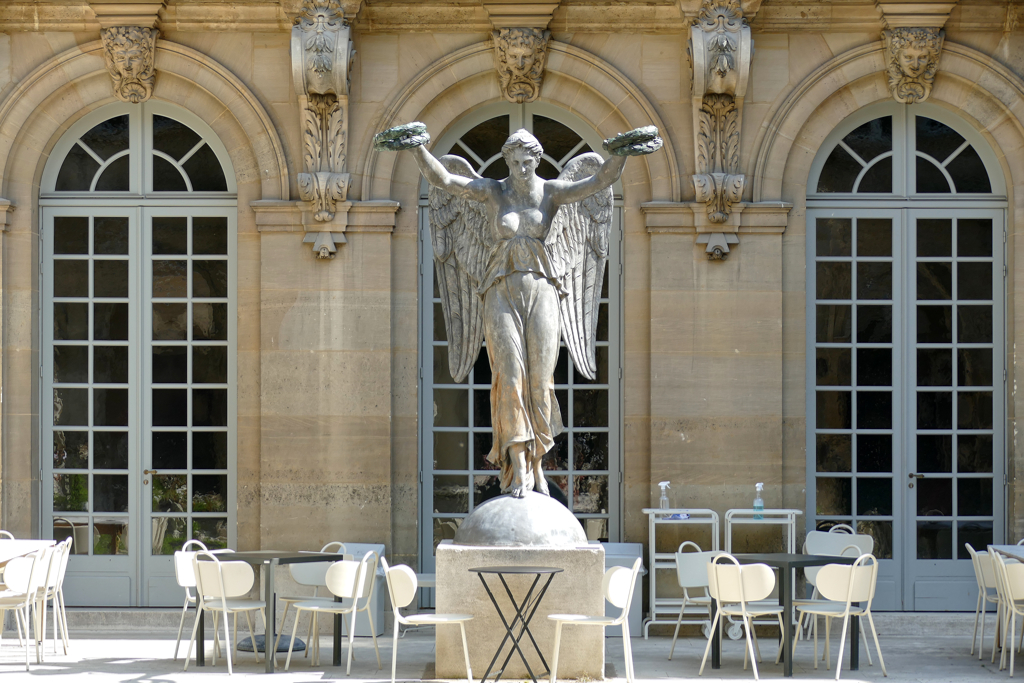
Apart from the Cour Carrée of the Louvre Palace, it is one of the few Renaissance buildings in Paris. Obviously, you can visit it for free during the museum’s opening hours.
Hôtel d’Angoulême Lamoignon
François de Pisseleu, abbot of Saint-Corneille de Compiègne, entrusted the construction of the Hôtel d’Angoulême Lamoignon to Philibert de l’Orme in 1559. In 1584, Diane de France, Duchess of Angoulême and legitimized daughter of King Henry II., inherited the Hôtel.
Since 1969, the Hôtel has housed the Historical Library of the City of Paris and is therefore not open to the general public. Its spacious, lush garden, however, is accessible from 25 Rue des Francs Bourgeois and can be visited free of charge on weekdays from 8 a.m. to 8.30 p.m. and on weekends from 9 a.m. to 8.30 p.m.
Hôtel de Sully
Another outstanding palace is the Hôtel de Sully, which was completed in 1630. The Controller of Finances Mesme Gallet commissioned architect Jean Androuet du Cerceau to design a house with a garden, an orangery, and access to the former Place Royale, today’s Place des Vosges.
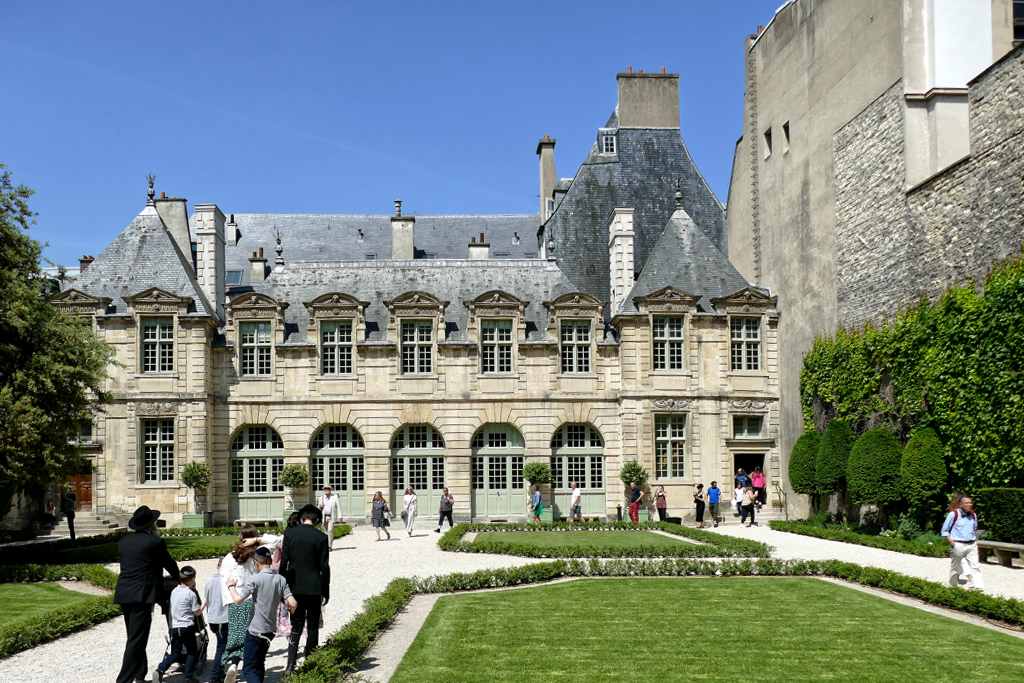
Since it has been the seat of the so-called Center des Monuments Nationaux since 1967, you can visit the interiors only on certain occasions. The courtyard and the garden, however, are accessible free of charge every day between 9 a.m. and 7 p.m.
Hôtel de Sens
The last palace I’d like to introduce in this section is the Hôtel de Sens, located close to the northern bank of the Seine River. The Archbishop of Sens owned a palace in Paris from 1292. As Paris became an independent archbishopric in 1622, the archbishops of Sens quit using the palace and rented it out. Hence, from 1689 onwards, it was the headquarters of a transport company, a cannery, a jam factory, and a glazier’s workshop.
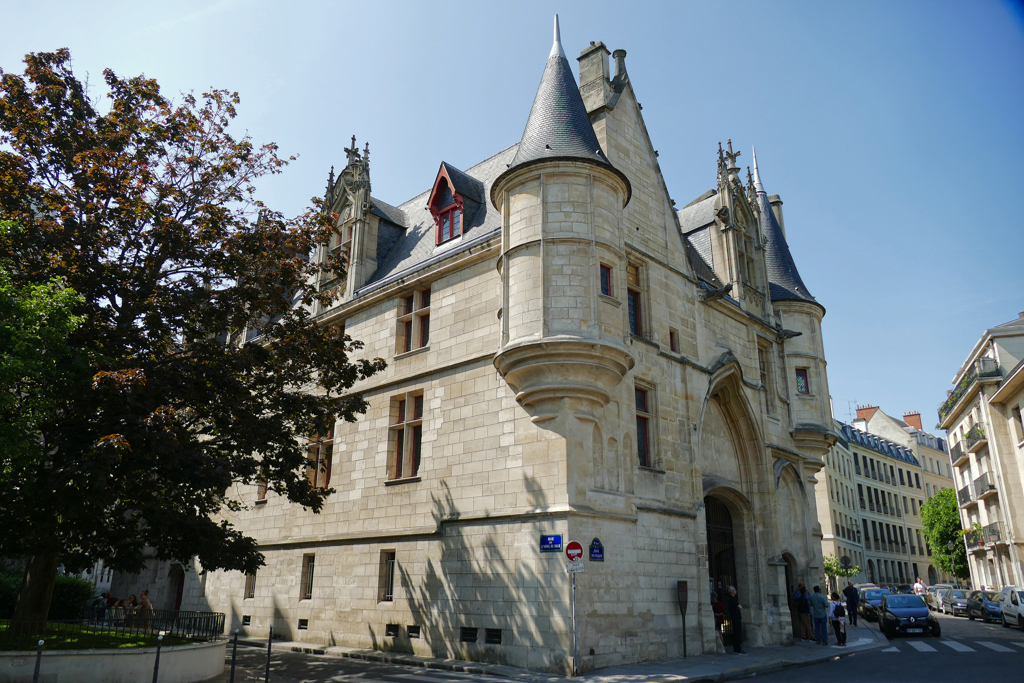
Today, it houses the Bibliothèque Forney. During the library’s opening hours from Tuesday to Friday between 11 a.m. and 7 p.m., it can be visited free of charge. On Saturdays, they are opening only at noon. Also, there is a beautiful, serene garden in the courtyard that you can access on weekdays from 8 a.m. to 8.50 p.m. and on weekends from 9 a.m. to 8.50 p.m.
Cemeteries
Some call Paris the city of light, others claim it’s the city of love. I’d argue Paris also deserves the title of City of Death, as it is home to three world-famous graveyards where many international celebrities found their final resting place. As a matter of fact, visiting cemeteries in Paris is an extraordinary experience as they are designed as parks, and many of the graves are decorated with amazing statues and sculptures.
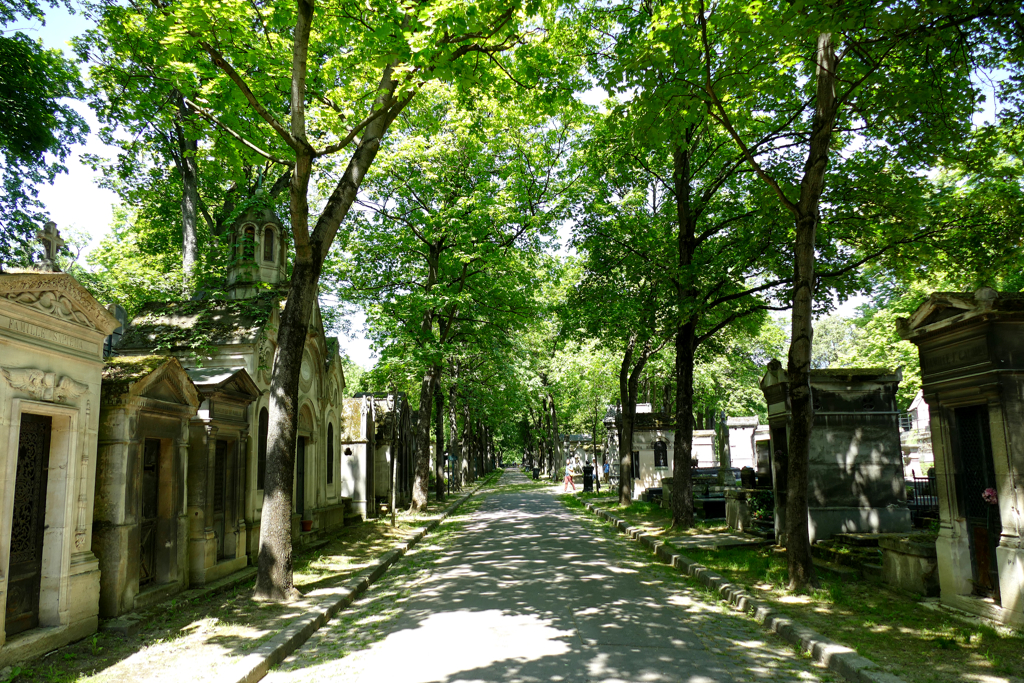
And as I’m introducing those three sites where the path of all human flesh ends, I also share a not-so-famous yet quite quirky cemetery: The Cimetière des Chiens et Autres Animaux Domestiques, hence the Cemetery for Dogs and Other Domestic Animals. Allegedly, it was the first animal necropolis in the modern world.
Cimetière du Père-Lachaise
With an area of 43 hectares, the Cimetière du Père-Lachaise is the largest cemetery in Paris. Also, it was the world’s first burial site to be laid out as a park. It is named after Father François d’Aix de Lachaise, as the cemetery was installed on his garden grounds.
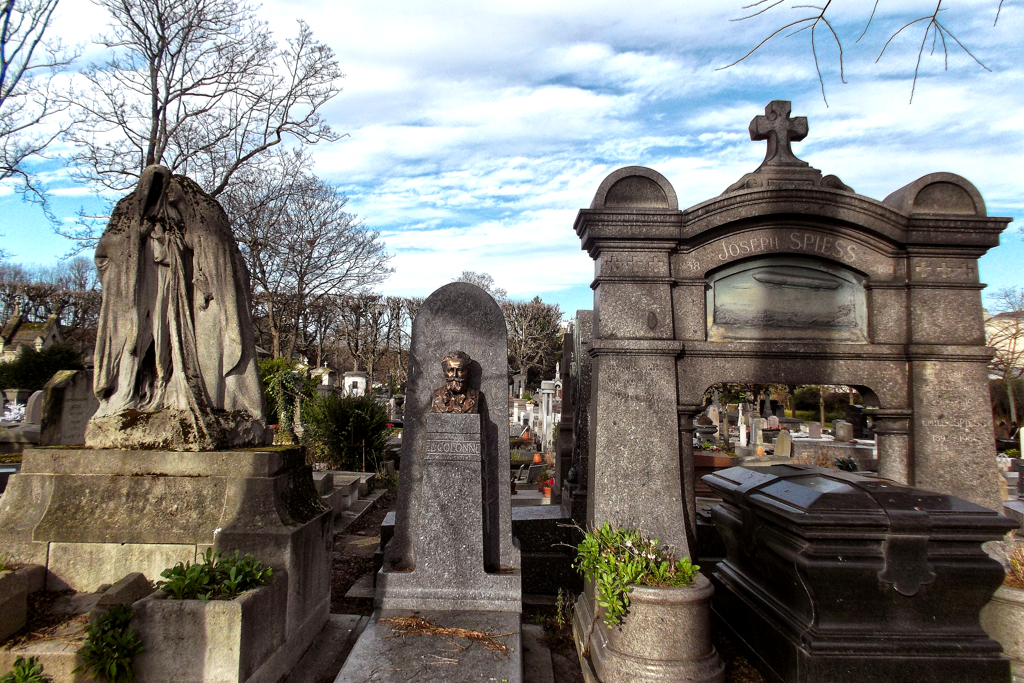
To this date, an incredible number of a million deceased have been buried in almost 70,000 graves. Around 3.5 million visitors per year make Père Lachaise one of the most visited sites in Paris. The graves of Oscar Wilde, Jim Morrison, and Edith Piaf are without any doubt the most famous plots.
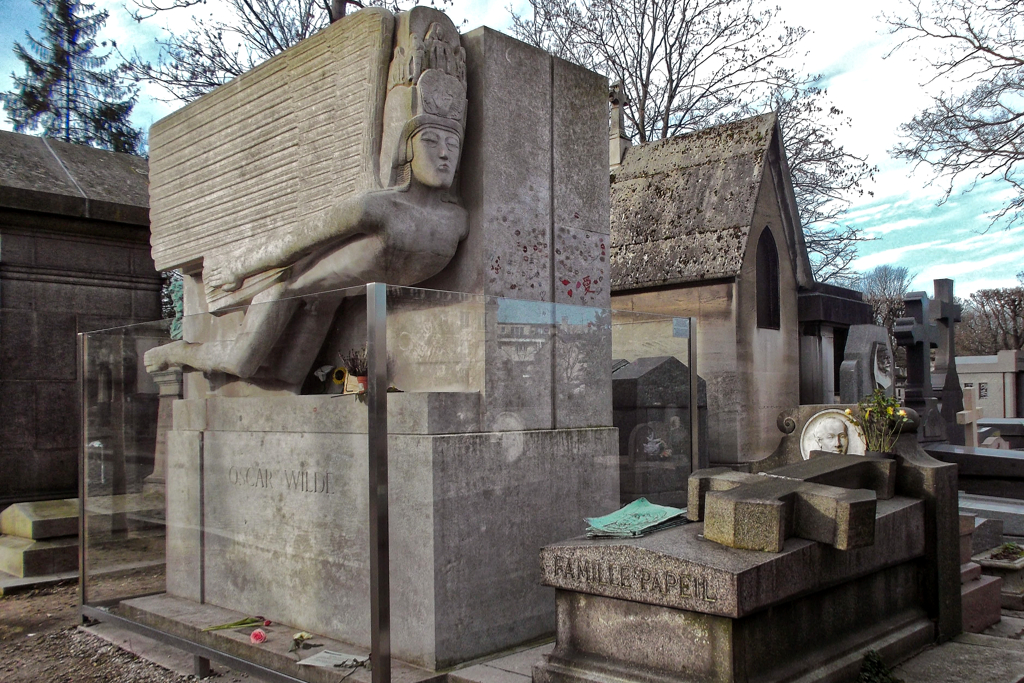
Normally, there is a map showing the most important graves at the entrance. If they run out of printed maps, you can always take a picture of the maps on the boards.
The Cimetière du Père-Lachaise is open weekdays from 8 a.m. to 6 p.m. On Saturdays, they open only at 8.30 a.m.
Cimetière du Montparnasse
The Cimetière du Montparnasse, formerly Cimetière du Sud, hence, the Southern Cemetery, is one of the three large Parisian cemeteries. Just like the Cimetière du Père-Lachaise and the Cimetière de Montmartre, it was laid out outside the then-city limits at the beginning of the 19th century.
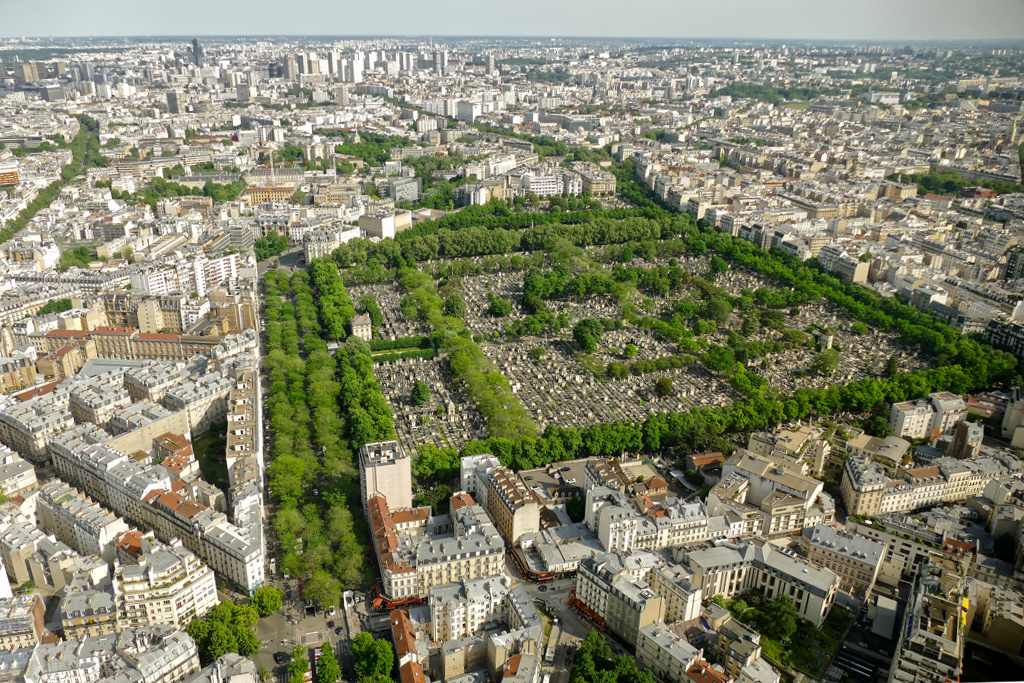
Here, you’ll find the graves of the intellectuals of the existentialist movement Jean-Paul Sartre and his partner Simone de Beauvoir, but also Irish novelist and winner of the Nobel Prize for Literature Samuel Beckett. However, it’s also the final resting place of actor Jean-Paul Belmondo, singer Serge Gainsbourg, and artists Man Ray and Ossip Zadkine, to name just a few.
The Cimetière du Montparnasse is open weekdays from 8 a.m. to 6 p.m. On Saturdays, they open only at 8.30 a.m. and on Sundays only at 9 a.m.
Cimetière de Montmartre
While the Cimetière du Père-Lachaise is the city’s largest and definitely most famous cemetery, the Cimetière du Nord – which is the graveyard’s official name – is the oldest one and was established between 1818 and 1824. For around 20,000 people, the Cimetière de Montmartre is the final resting place.
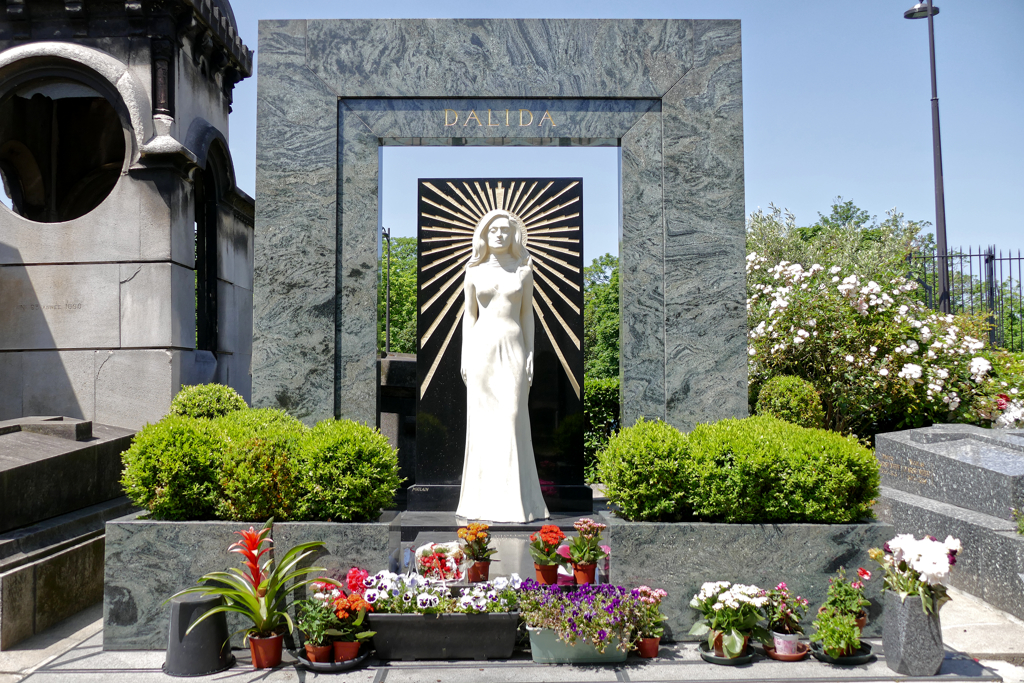
Just like Père-Lachaise, it is a beautiful, serene park, and on your stroll on tree-lined paths, you’ll spot the tombstones of celebrities such as composer Hector Berlioz, fashion designer Pierre Cardin, painters Edgar Degas and Francis Picabia, actress Jeanne Moreau, as well as singers France Gall and Dalida.
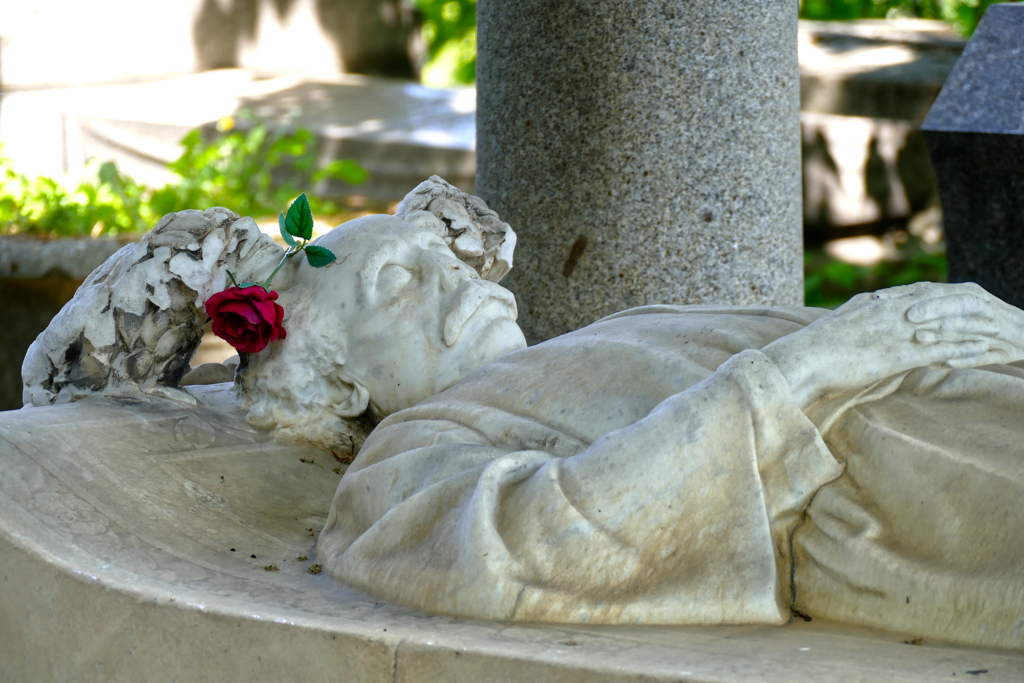
Apart from the many celebrities who are buried here, the Cimetière de Montmartre has two special features. Firstly, there is a busy bridge spanned above the cemetery, which feels like it is in a weird way integrated into the premises. Also, there are countless cats living between the graves, which are well-taken care of by the visitors.
The graveyard is open weekdays from 8 a.m. to 6 p.m. On Saturdays, they open only at 8.30 a.m. and on Sundays only at 9 a.m.
Cimetière des Chiens
In 1899, the journalist Georges Harnois teamed up with his colleague and women’s rights activist Marguerite Durand to found the Société Française anonyme du Cimetière pour chiens et autres animaux domestiques, hence, the French Cemetery Society for Dogs and Other Domestic Animals. The same year, land in Asnières on the northwestern outskirts was acquired. This makes this graveyard the oldest animal cemetery in the world.
Here, you’ll find the final resting places of dogs, cats, rabbits, and budgerigars. Nonetheless, there’s also a lion buried next to the pets.
The most famous resident of the Cimetière des Chiens, however, is film star Rin Tin Tin. Although the German Shepherd starred in several Hollywood movies, he was actually born in France. US serviceman Lee Duncan saved him as a puppy. Also, Alexandre Dumas’ dog Sully is resting here in peace Asnières as is Sacha Guitry’s cat Désiré, and the – metaphorically – late racehorses Tsoytong and Masseraux.
Also, a memorial was erected for the famous rescue dog Barry, who saved 41 people in the Grand St. Bernard pass. His remains, however, are on display in the Natural History Museum in the Swiss capital Bern.
You can visit this rather unusual graveyard from Tuesday to Sunday between 10 a.m. and 4.30 p.m.
Fun Fact
In 2012, the grave of a small dog was broken into and a diamond-studded collar worth 9,000 €uros was stolen. Much more shocking than the robbery is the fact that someone buried a 9,000 €uros collar with the dog.
This raises the philosophical-moral question of what’s the greater offense.
Churches
A few years ago, I would have started this chapter with the glorious Gothic cathedral Notre-Dame de Paris. Sadly, it was badly damaged by a fire in 2019. Currently, it is being restored and cannot be visited. However, as Paris has an impressive number of 139 churches and chapels, your spiritual well-being is taken care of.
Below, I’m introducing Paris’ five most significant houses of worship you can visit free of charge.
Basilique du Sacré-Cœur
The name Montmartre stems from the Latin Mons Martis, which translates to Mount of Martyrs. Accordingly, Montmartre is on a hilltop, which grants you the best panoramic views of the city. If you do not want to climb the stairs, you can always take the Funiculaire de Montmartre for the price of a single Métro ticket.
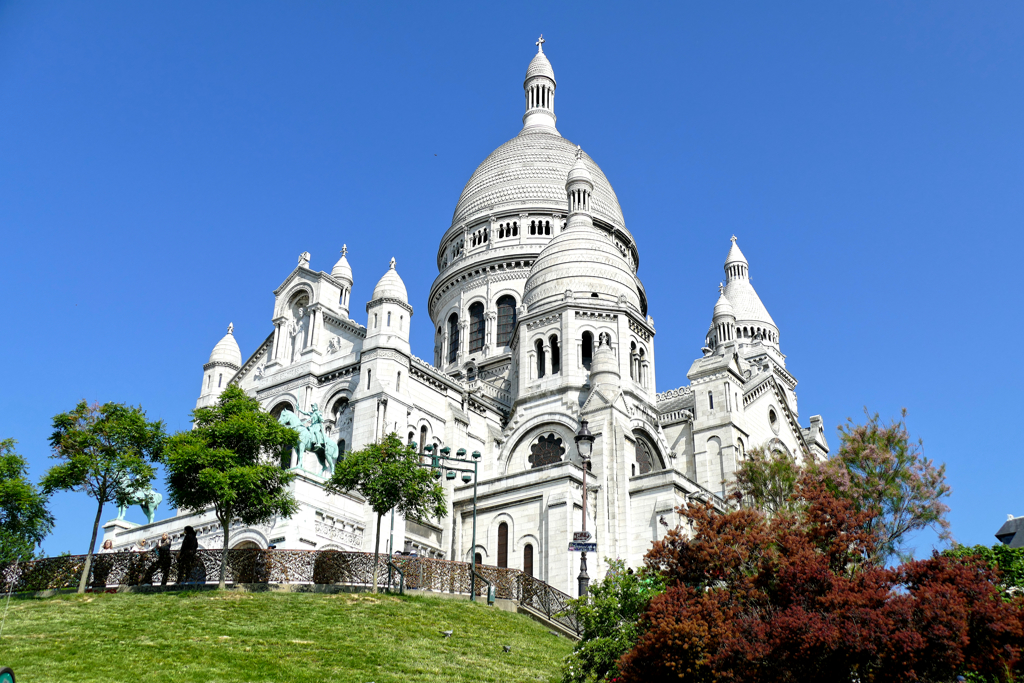
On the mountaintop is the famous Basilica Minor Sacré-Cœur de Montmartre, a Roman Catholic pilgrimage church that was built in a neo-Byzantine style. Deviating from tradition, Sacré-Cœur faces north instead of east. Five domes are arranged around a cross-shaped central building based on the Byzantine standard.
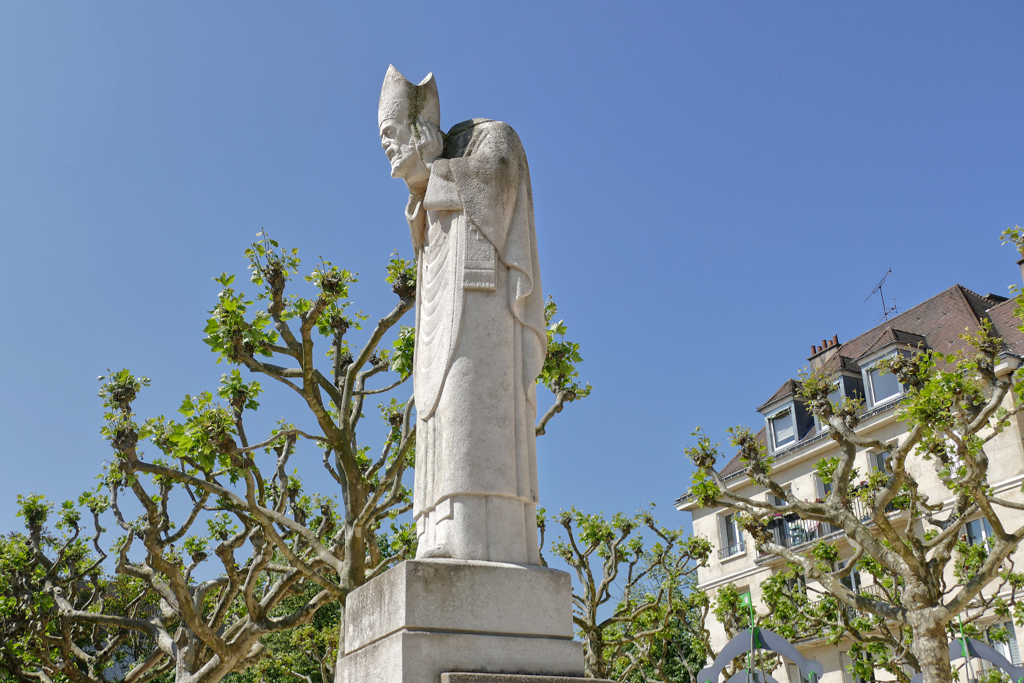
Visiting Sacré-Cœur is free of charge. If you want to go up to the Dome, you not only need a ticket. You also have to climb 300 stairs. Nevertheless, the panoramic view from up there is just amazing. The basilica is open every day from 10.30 a.m. to 8.30 p.m.
L’Église Saint-Eustache
The Saint-Eustache church is located next to the former Central Market, now the shopping court Les Halles. The architect Lemercier, inspired by Notre-Dame Cathedral, began construction in 1532. It was finished after many interruptions, over a hundred years later, in 1633.
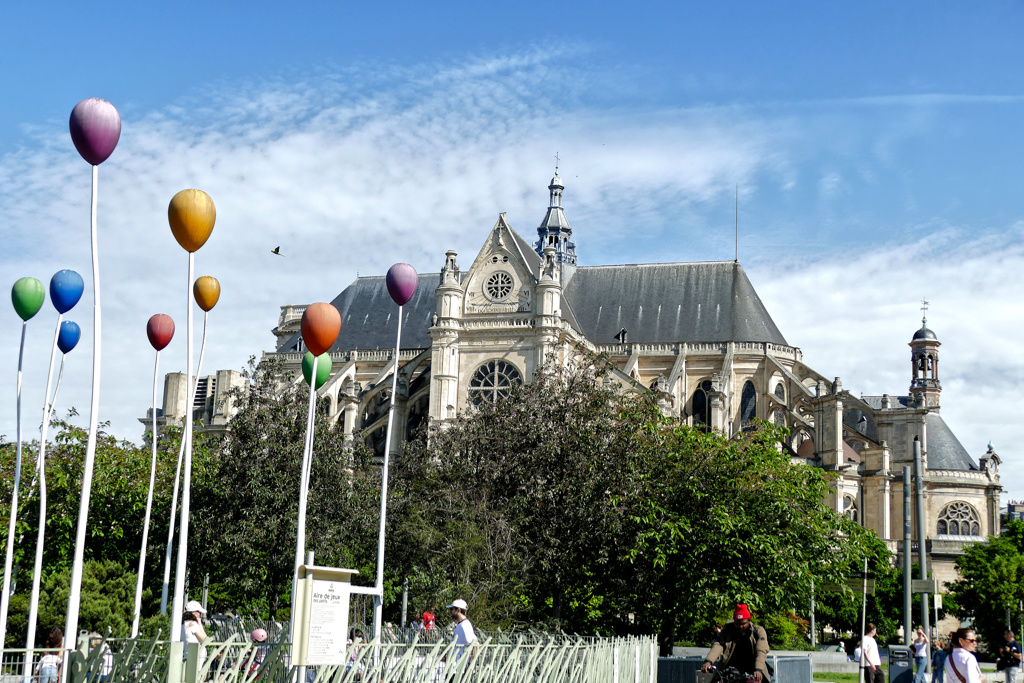
Although the church was constructed during the height of the Renaissance, it is mainly built in a Gothic fashion with Roman-style arches, Greek columns, as well as a few Renaissance ornaments.
The church is on Rue Rambuteau and open every day from 10 a.m. to 6 p.m. from Tuesday to Friday and to 7 p.m. from Saturday to Monday.
Église Saint-Sulpice
Saint-Sulpice is kind of a pop star among Paris’ houses of worship. The three-nave basilica was built from 1646 on in a mix of different architectural styles. Mainly a neoclassical structure, it has some Gothic and Baroque elements. Outside stands the lavishly decorated so-called Fountain of the Four Bishops from the 17th century.
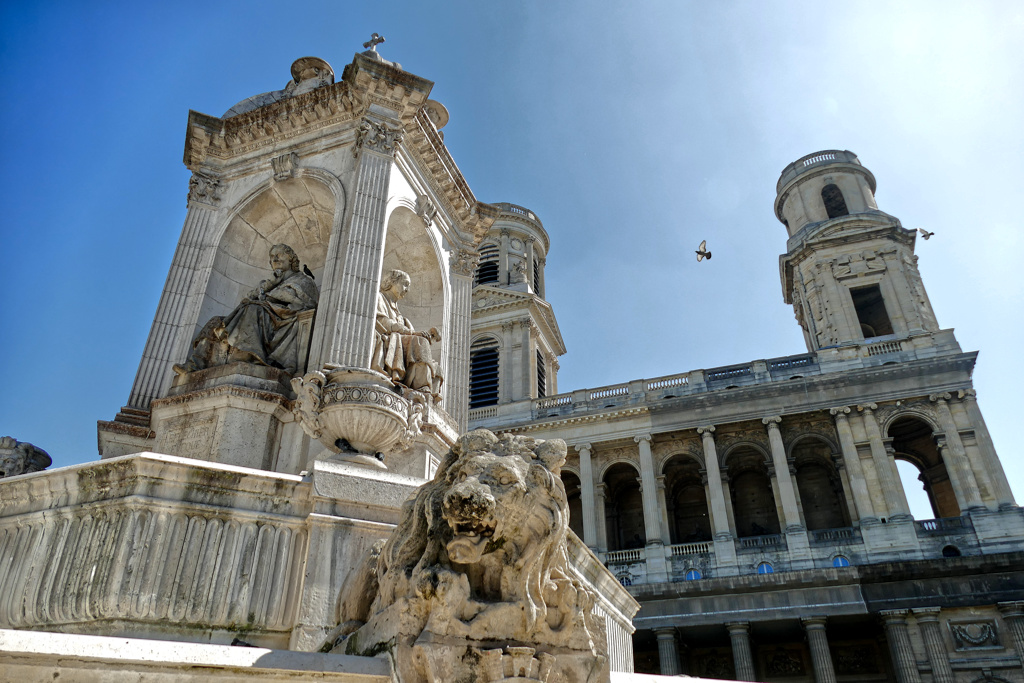
Inside, Eugène Delacroix painted a beautiful fresco. At least with the filming of the Da Vinci Code, the impressive obelisk-shaped sundial La Méridienne became world-famous.
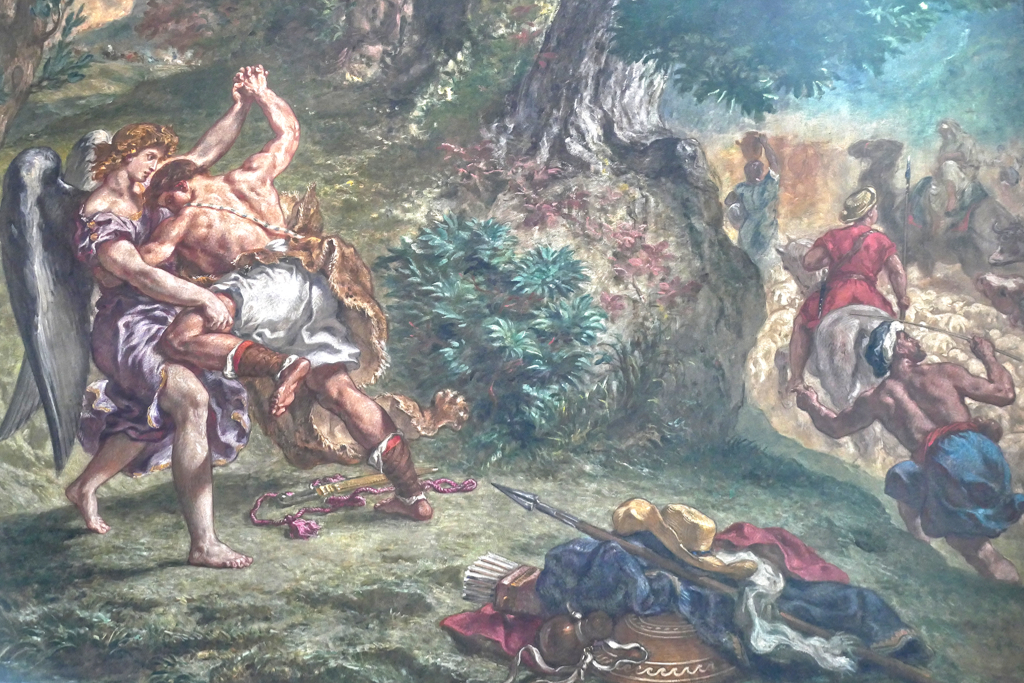
Eugène Delacroix painted it in the Chapel of the Holy Angels of the Saint-Sulpice church.
However, the Église Saint-Sulpice is also known as Charles Baudelaire’s and Marquis de Sade’s church of Baptism. Also, the poet Victor Hugo got married here.
The church is located at 2 Rue Palatine and is open every day from 8 a.m. to 8 p.m.
Église Saint-Augustin
Saint-Augustin was one of the first large steel-framed buildings. Friezes showing Jesus, his twelve apostles, and the four evangelists are embellishing the façade. The church’s construction was completed in 1868.
While a statue of Joan of Arc by Paul Dubois stands in front of the Roman-Byzantine church building, many more statues by famous sculptors are found inside. The stained glass windows show bishops and martyrs of the first centuries.
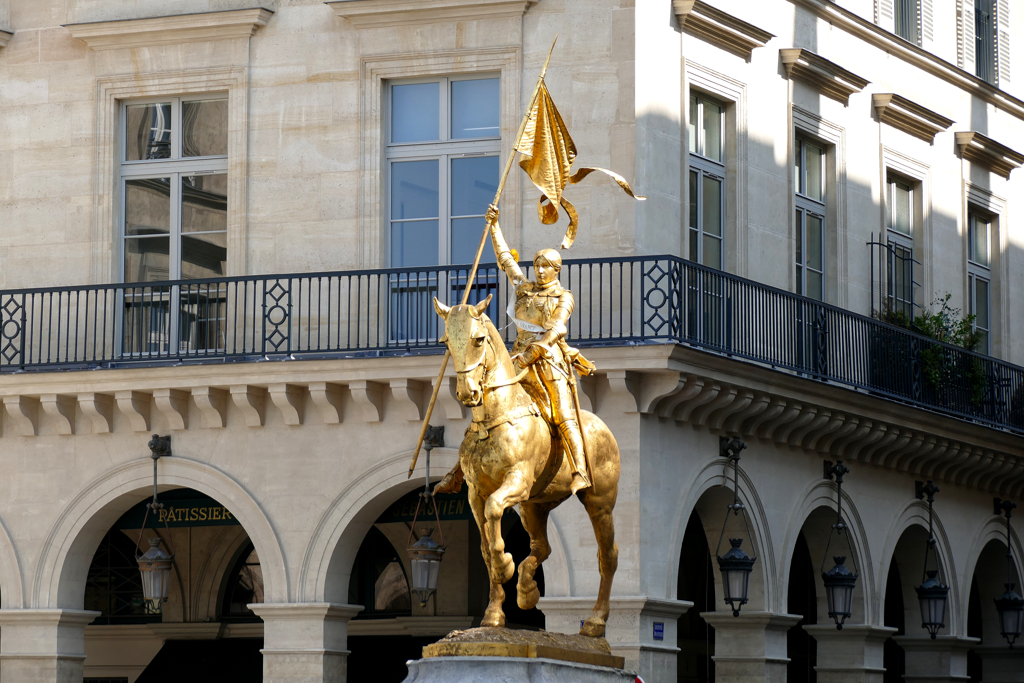
Saint-Augustin is located at 8 Avenue César Caire in the vicinity of the Gare Saint-Lazare train station. Opening hours differ almost daily, however, they are more or less from 10 a.m. to 12.30 or 1 p.m. and then again from 4 p.m. to 6 p.m. On weekends, they are open till late, and they are closed on Mondays.
Église de la Madeleine
The parish church La Madeleine is one of the most famous sights in Paris. Built in the neoclassical style between 1764 and 1842, it actually resembles more a Greek temple than a Christian building. There is neither a cross on the façade nor does it have a bell tower. Instead, it is surrounded by Corinthian columns. The reason for the extremely long construction phase was the outbreak of the French Revolution in 1789.
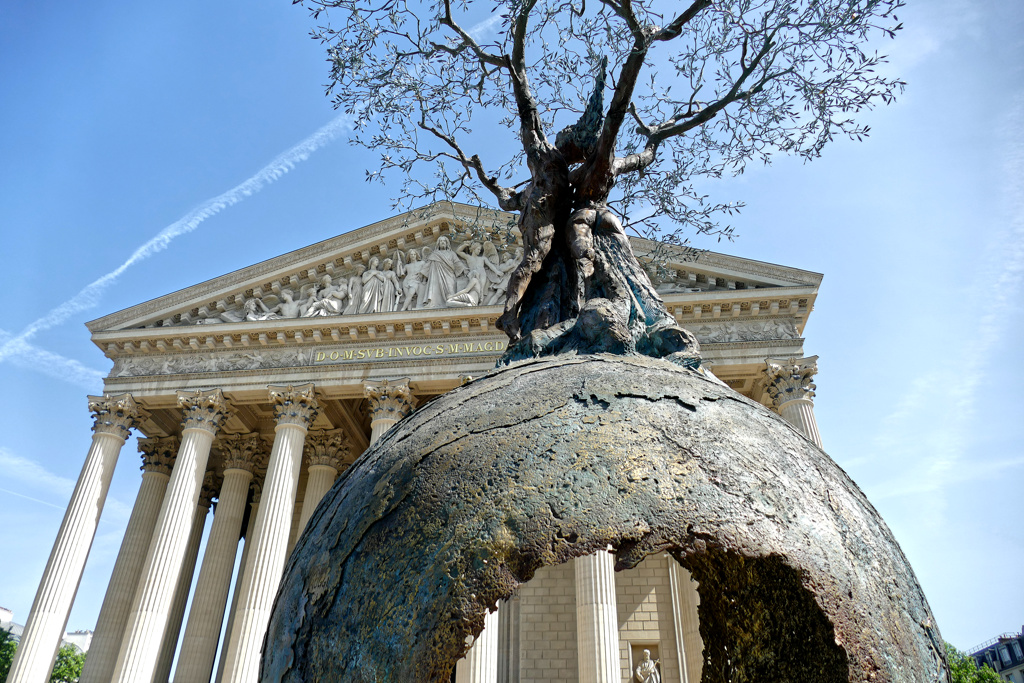
Église de la Madeleine is located It is in the 8th arrondissement, about 400 m northeast of the Place de la Concorde and about 500 meters southwest of the Opéra Garnier.on Place de la Madeleine and open every day from 9.30 a.m. to 7 p.m.
Concerts
As a matter of fact, there is an even more charming way to visit Paris’s churches, namely, if you go there to enjoy one of the free classical concerts. Mainly on weekends, some churches organize amazing presentations including vocal and instrumental recitals, chamber ensembles, and even symphony orchestras. This way, you can enjoy world-class talent in a marvelous venue with excellent acoustics.
However, keep in mind that, as the concerts are free, people also come with their kids. Also, some visitors come and go. Will say, it might not be at every moment the undisturbed listening pleasure that one knows from regular concerts.
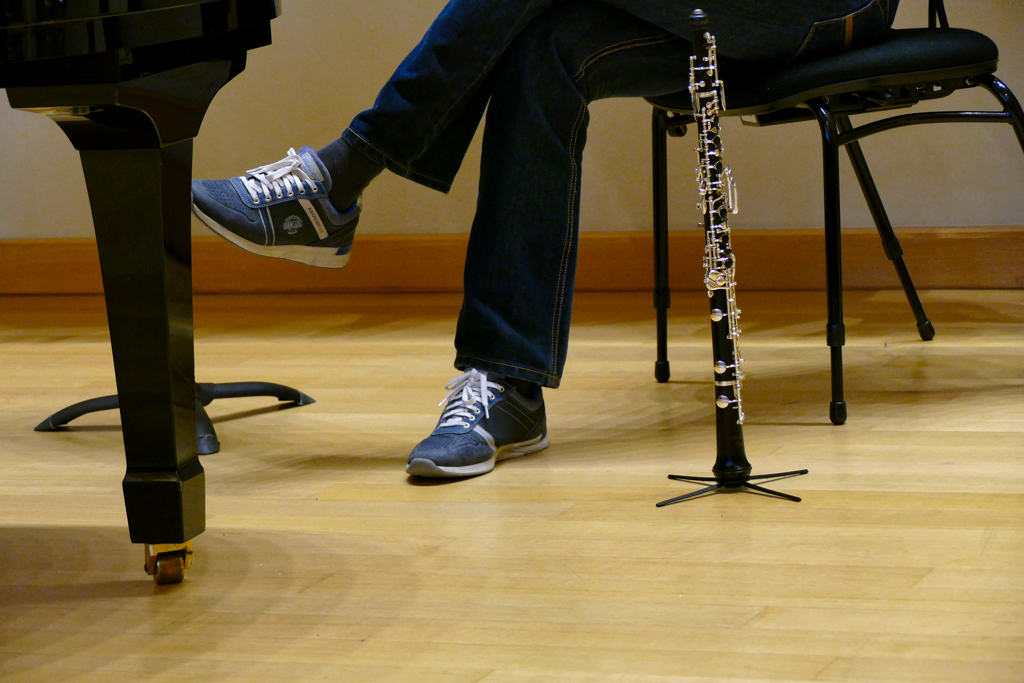
Although the concerts are free, they’ll pass a hat during the intermission, and you should spare a few €uros. Also, as seats are not numbered, you’d better get there ahead of time to choose a spot with a good view. Try to sit as close as possible to the stage and preferably towards the center of the row. Sometimes, visitors come to see a concert and finally decide not to stay. If they are rummaging behind your back, respectively at the end of rows, you’ll be less annoyed.
A final tip is not only to Google the day and hour of the performance, but also the genre. Although it’s free, it doesn’t mean you have to waste your time at a concert you won’t enjoy.
Here are the five best churches to enjoy a classical concert for free:
Église Saint-Merry
The current building was constructed between 1500 and 1550 in the Gothic style. It has the same floor plan as Notre Dame, with the choir being roughly as long as the nave. Therefore, it was nicknamed Notre-Dame la Petite.
The windows and the vault of the crossing of the transept have the so-called flamboyant English design. Other than that, all the interior lines are extremely austere.
The entrance to the church is located at 78 rue Saint-Martin. Concerts are taking place on Sundays at 4 p.m., and you can check the program on their website.
Cathédrale Sainte-Croix de Paris des Arméniens
The church building was originally a chapel dedicated to the Immaculate Conception and part of a Capuchin monastery founded in 1622. After the monastery’s abolition during the French Revolution, the chapel was still used for religious services. After an extremely checkered history, it was used again for religious services following the Concordat of 1801. In 1986, it was entrusted to the Armenian Catholic Church.
The cathedral is located at 13 rue du Perche in the Marais district. Concerts take place irregularly.
Cathédrale Notre-Dame du Liban de Paris
The church building was inaugurated in 1894 and allocated to the Jesuit Fathers of the Sainte-Geneviève school. Following the laws on the separation of Church and State of 1905, the Jesuits had to give up the school. In 1915, the building was assigned to the Maronites, a group of Christians who practice the Catholic faith in the Syrian tradition.
The Notre-Dame du Liban plays a significant cultural role as the classical music label Erato recorded more than 1,200 records in the church building.
It is located at 15 rue d’Ulm, and concerts take place irregularly.
Cathédrale Américaine de Paris
The Cathédrale Américaine de Paris is an Anglican house of worship from the late 19th century. It is the meeting place for the Convocation of Episcopal Churches in Europe. The origins of the church formerly known as Cathédrale de la Sainte-Trinité date back to the 1830s, when the then-resident American Episcopalians held their services in the garden pavilion of the Hôtel Matignon, which belonged to the ex-pat Colonel Herman Thorn. In 1859, after the formal foundation of the parish, the first church building on Rue Bayard was inaugurated in 1864.
Today, the Cathédrale américaine de Paris is located at 23 Avenue Georges V. Free concerts take place from time to time, however, they also organize gospel concerts on certain Saturdays at 8.30 p. m. where they charge an entrance fee. You’ll find the entire program on their website.
L’Église Américaine à Paris
Yap, there’s not only a Cathédrale Américaine but also an Église. At the beginning of the 19th century, many US-Americans came to France to study, work, or for business. Back then, the American Protestants gathered in different houses around Paris. Later, they met in the temple of the Oratory of the Louvre before the first American chapel was built in 1857. One year later, Emperor Napoleon III officially recognized the American Church in Paris.
The church acquired the land on the Quai d’Orsay and entrusted the architect Carrol Greenough with the construction of a large neo-Gothic building in 1925.
However, the American Church of Paris became an interdenominational institution, open to all the faithful adhering to the Christian tradition. Although mainly American expatriates form the English-speaking congregation, also parishioners of various English-speaking countries and other religions partake.
The Église américaine is located at 65 Quai d’Orsay. They offer a free series of Sunday concerts at 5.30 p.m. You’ll find the entire program on their website.
Les Secrets de l’Opéra
There is another teeny tiny art project which you won’t find in the streets but in Paris’ endless and confusing Métro tunnels. Very appropriately, this literally hidden gem is called Les Secrets de l’Opéra, the secrets of the opera in English.
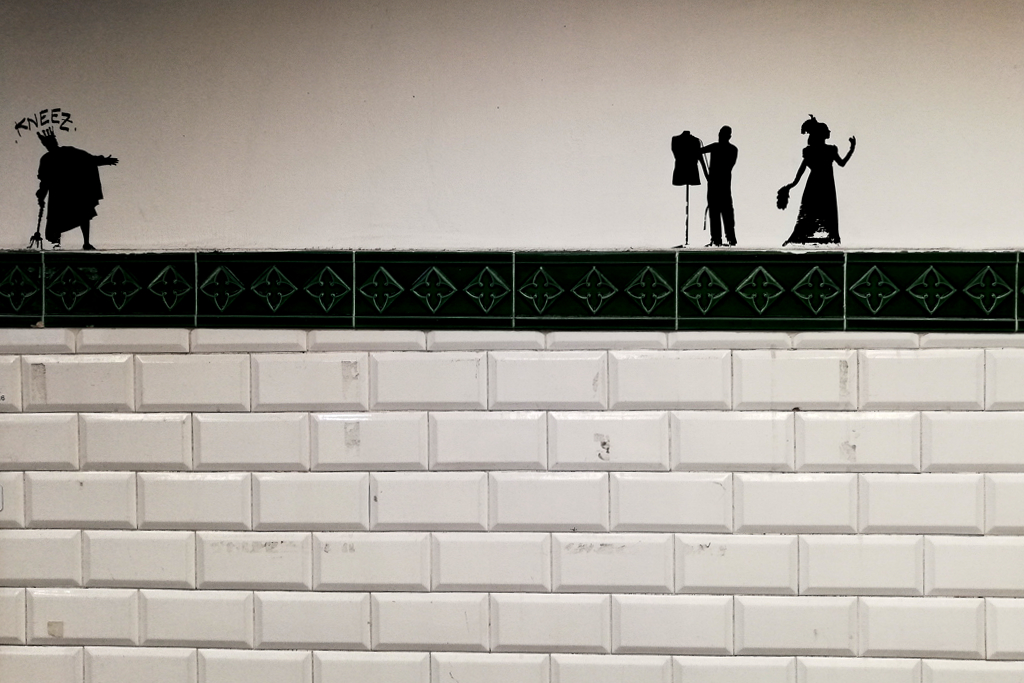
It is an ingenious installation of graphics and sound. In a secretive and very charming way, it depicts all those good people who make opera performances possible – such as the singers, dancers, and musicians, but also all the craftsmen and technicians working behind the scenes.
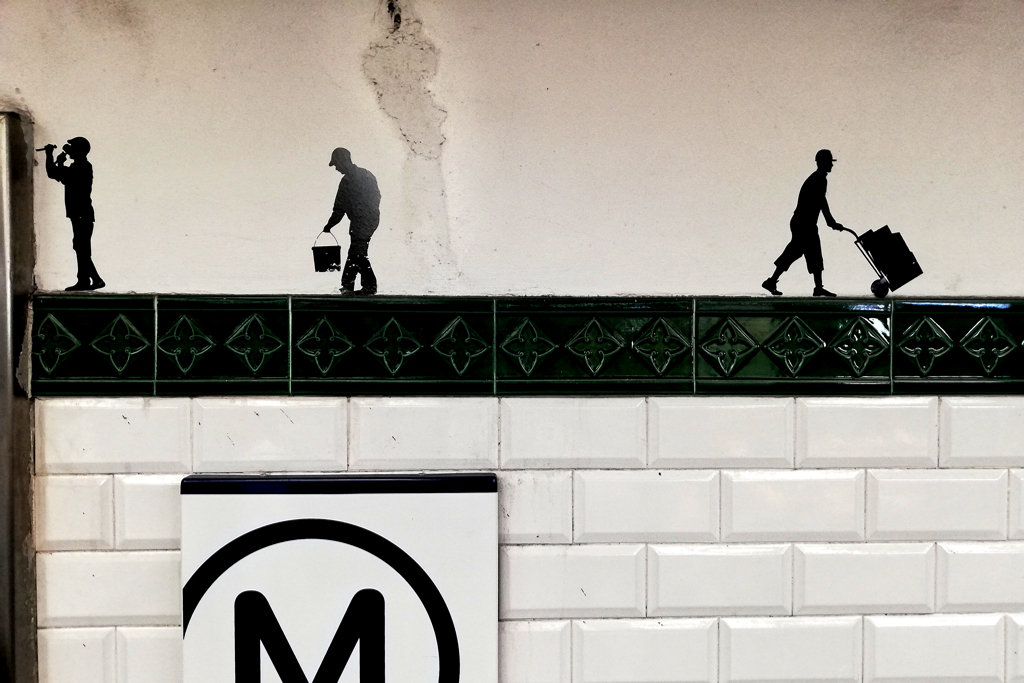
An incredible number of 1,000 small silhouettes were stenciled in the tunnels of the Opéra Métro station, commissioned by the RATP, Paris’ public transit company. They were designed by the agency ITSOK.
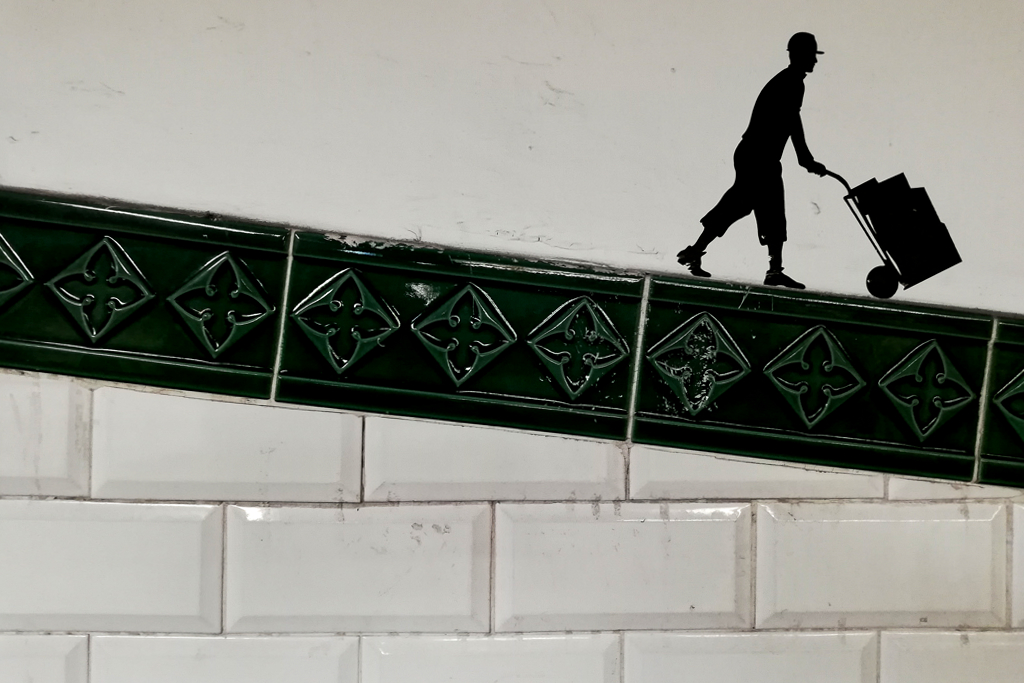
All these helping hands are shown in a small format. The fact that they are also shown in black and white in the style of a silhouette gives them the mysterious aura of secret elves.
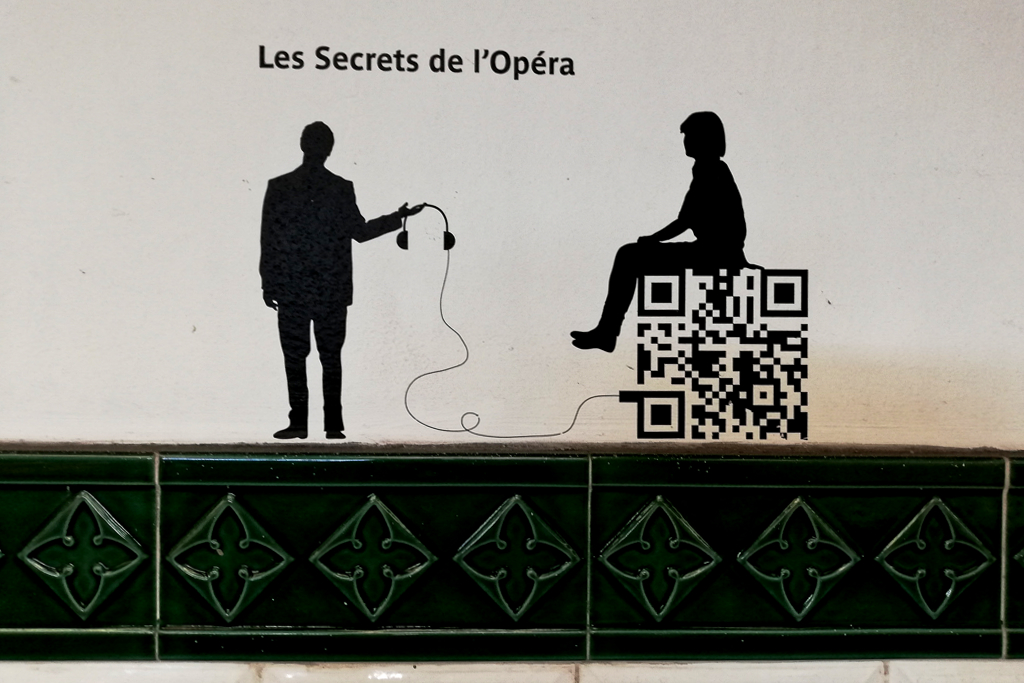
A QR code gives you the opportunity to accompany the visual journey with an acoustic background. Through your headphones, you can take a peek behind the opera’s curtains. Led by the voice of soprano Giulia Semenzato, immerse yourself in the preparations backstage: musicians tune their instruments, designers create the costumes, while the conductor leafs through the scores. But also hairdressers, make-up artists, stagehands, and technicians give their best to ensure that the performance runs smoothly.
Panoramic Viewpoints
Centre National d’Art et de Culture Georges-Pompidou
Architects Renzo Piano, Richard Rogers, and Gianfranco Franchini designed the Centre National d’Art et de Culture Georges-Pompidou. The arts and culture center then opened in 1977.
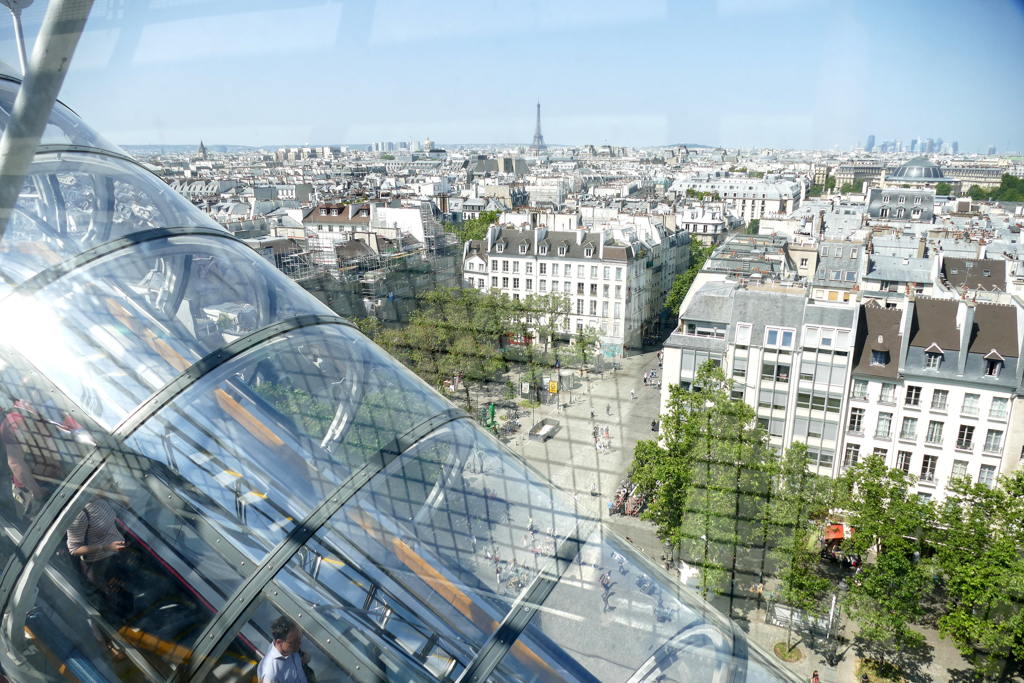
The supporting structure, as well as the pipes, were arranged visibly on the outside of the building. This way, the spaces inside remain largely free and are more versatile. The façades and outer staircases are transparent and grant amazing panoramic views.
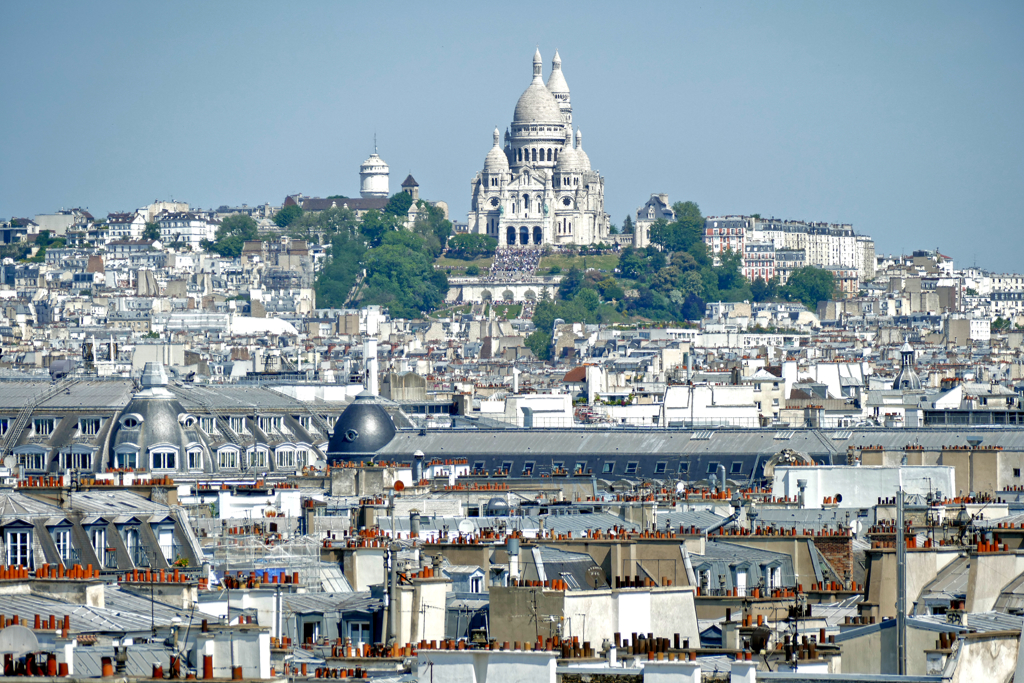
The Center Pompidou aims to grant free access to knowledge. It houses the library Bibliothèque Publique d’Information, the music research center Institut de Recherche et Coordination Acoustique/Musique IRCAM, a children’s workshop, a cinema, a theater, and lecture halls.
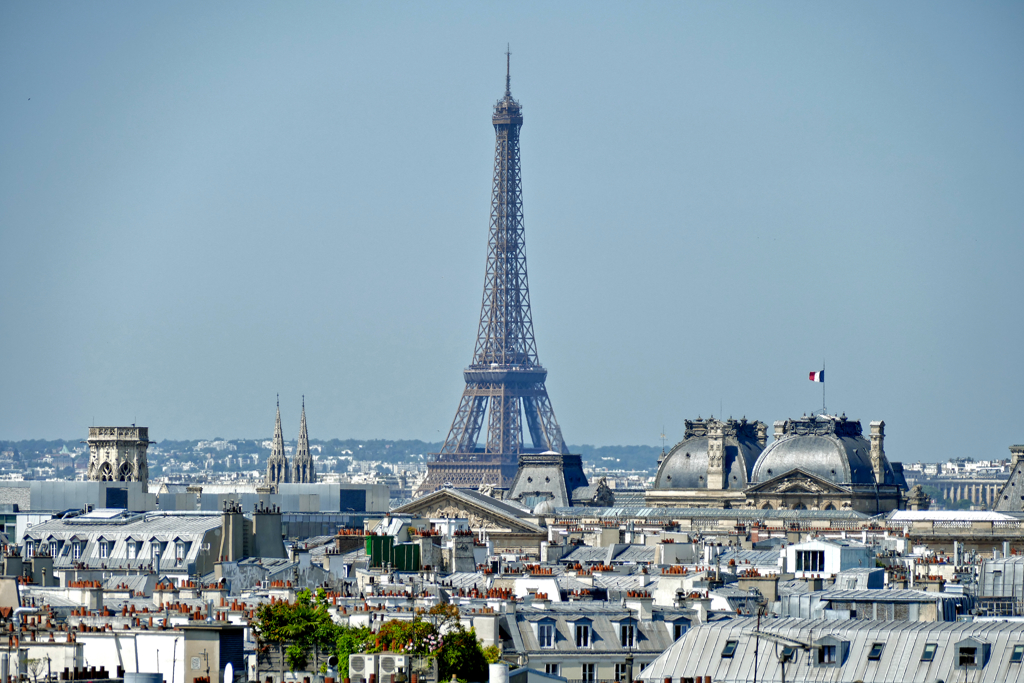
The most important venue, however, is the Musée National d’Art Moderne, showing momentous works of art from the 20th century.
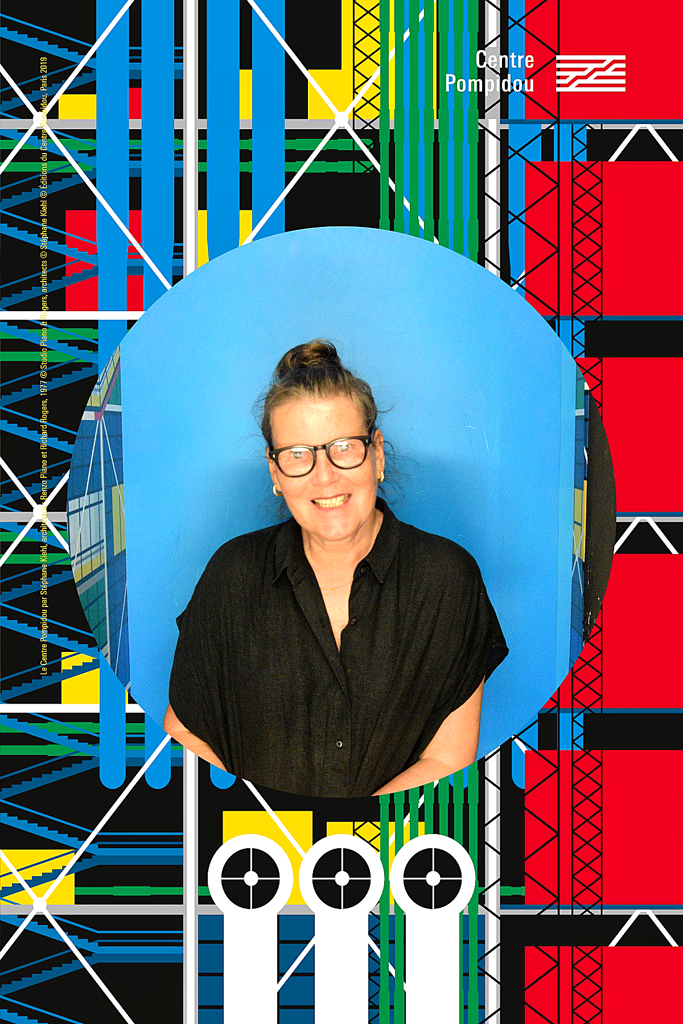
Unfortunately, they charge an entrance fee. However, there are a restaurant and a café as well as a huge bookshop. The latter is a great place if you are looking for original and meaningful souvenirs from Paris.
You’ll get one of the best and most mesmerizing views of the city already as you go up the transparent staircase. Then, from the highest floor, you have all of Paris at your feet.
The building can be accessed free of charge from 11 a.m. to 9 p.m. On Thursdays, they are open until 11 p.m. and closed on Tuesdays.
Basilique du Sacré Cœur
I’ve introduced the Sacré Cœur basilica already in the church section above.
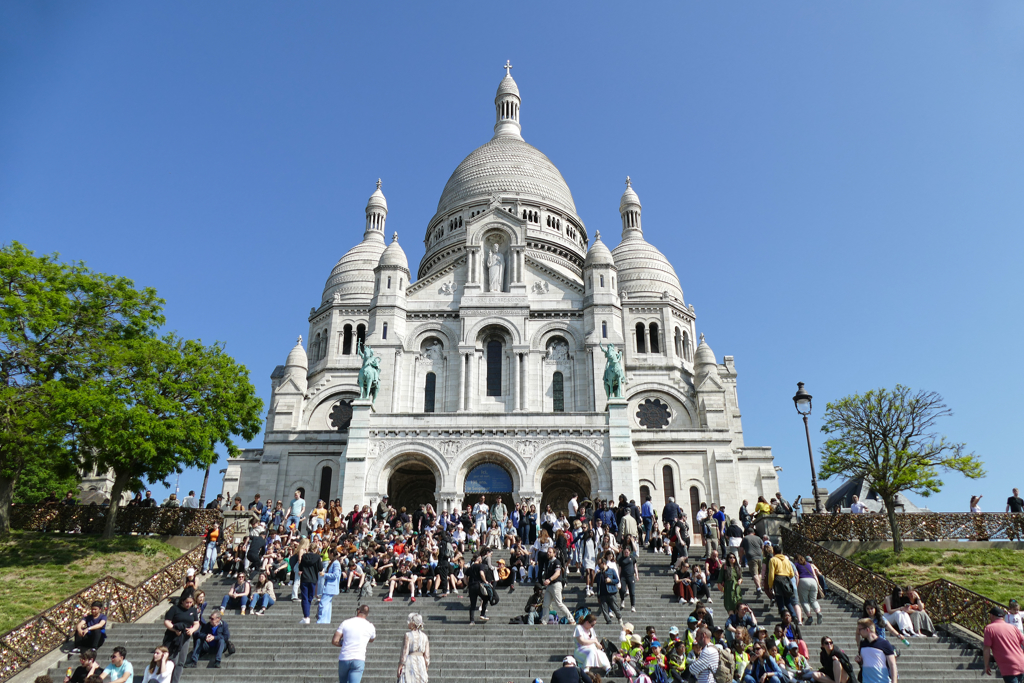
And while you have the best view of the city from its dome, obviously, a panoramic view completely free of charge is granted from the basilica’s forecourt and the stairs.
Galeries Lafayette
Galeries Lafayette is one of the oldest department stores in France. Its flagship store in Paris is celebrated for its Art Nouveau architecture. Architect Georges Chedanne designed the 10-storey building, which was completed in 1908. A 40-meter-high colored glass dome has crowned the 33-meter-high Art Nouveau gallery hall.
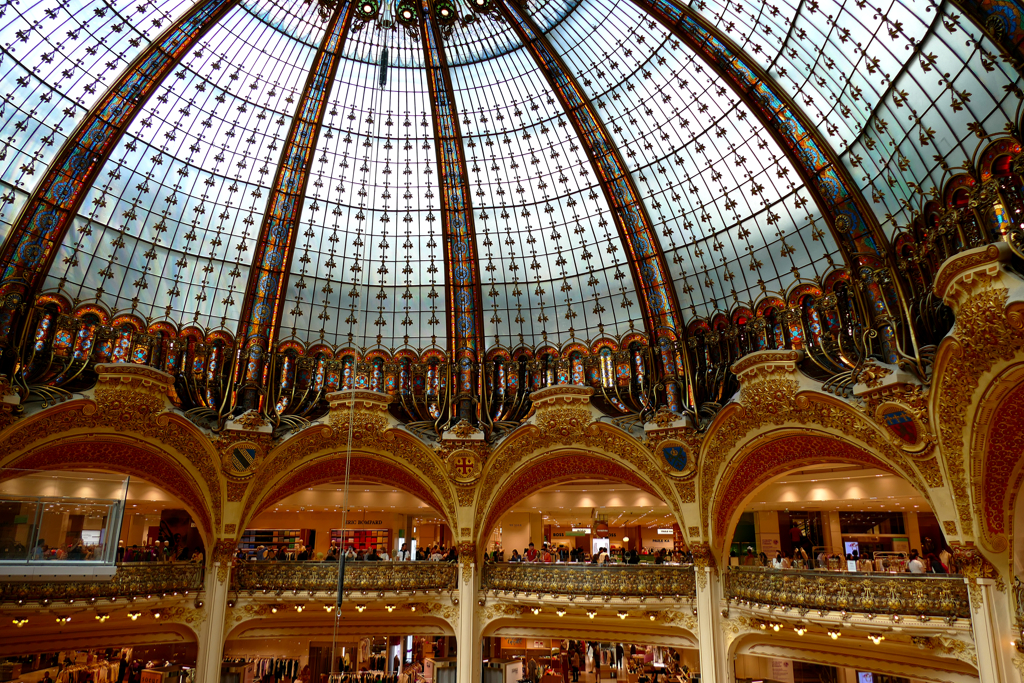
After a shopping spree at the marvelous Galeries Lafayette, you can relax on the roof terrace while enjoying the grand views of the city. Access to the rooftop terrace on the 8th floor is free. You can get there by escalators or by taking a lift.
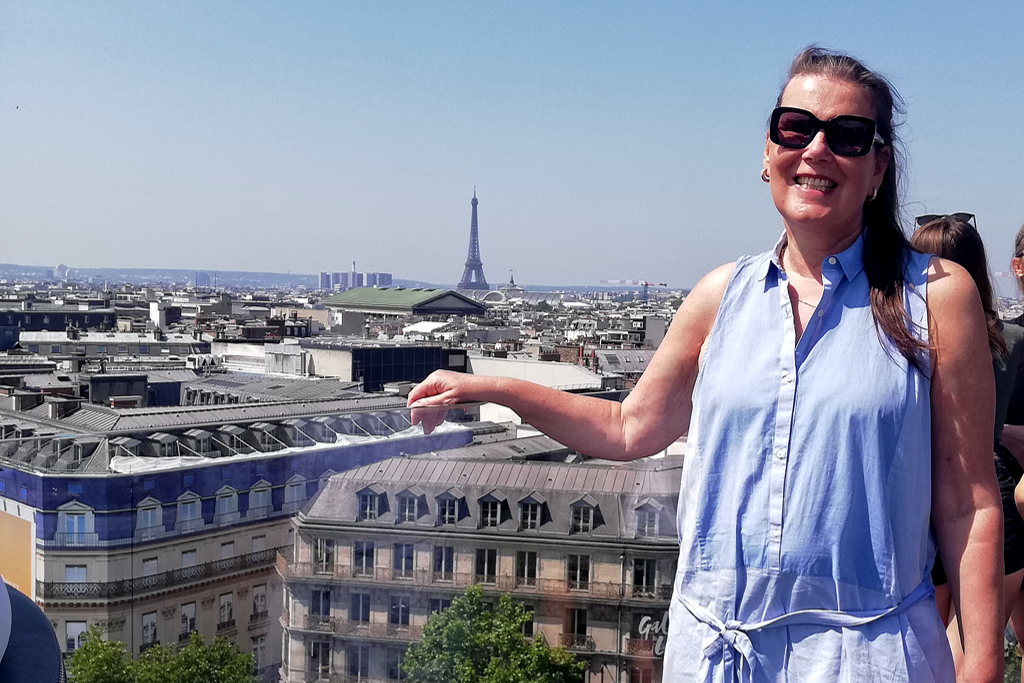
While you’ll have an unobstructed view of the Opéra Garnier as well as of the Eiffel Tower, spotting the city’s northern part around Sacré Coeur is possible, yet a bit tricky.
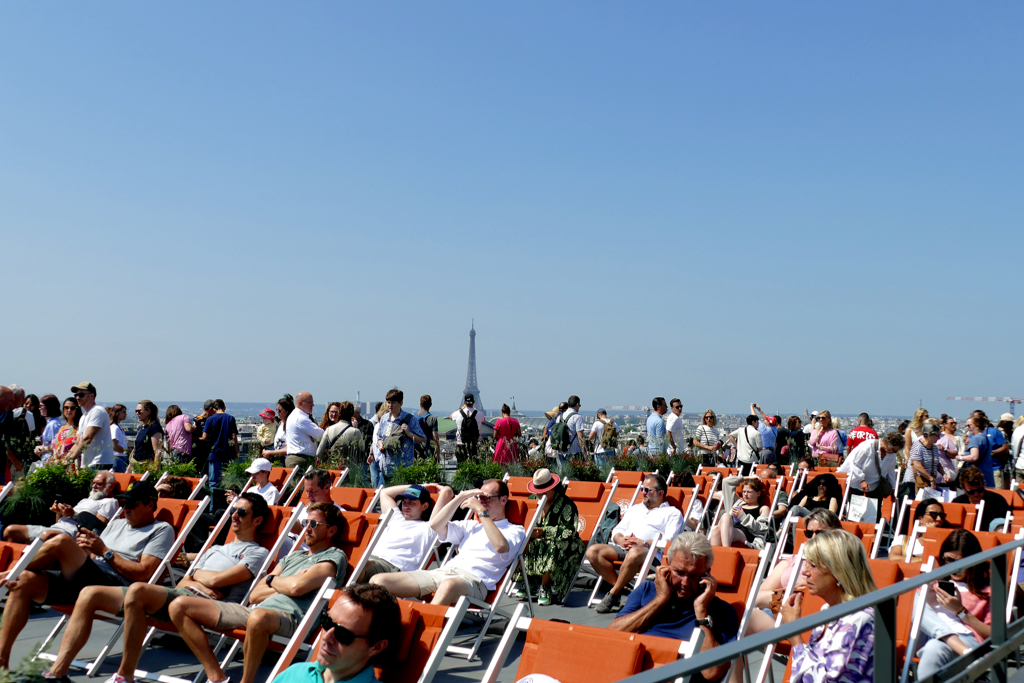
From May to September, you can enjoy refreshments at a small restaurant.
Galeries Lafayette is open from Monday to Saturday between 10 a.m. and 8.30 p.m. and on Sundays from 11 a.m. to 8 p.m.
Le Printemps
The Grands Magasins du Printemps was opened in 1865. Eventually, two fires destroyed the department store in 1881 and in 1921. On the occasion of spectacular reconstructions, the store became a pioneer of electric lighting. The building is particularly famous for its Art Nouveau glass dome with stained glass. It was erected only in 1923 after the second fire.
While the view towards Montmartre and Sacré Coeur from the roof of Galeries Lafayette is a bit obstructed, Printemps’ roof terrace grants an open view all around. It is located on the 9th floor, where there is also a café with indoor and outdoor seating.
Le Printemps is open from Monday to Saturday between 10 a.m. and 8 p.m. On Sundays, they are opening only at 11 a.m.
Institut du Monde Arabe
The Institute of the Arab World was founded in the student district of the Latin Quarter in 1980. It promotes dialogue and understanding between France and the Arab world.
On the southern wall, the incidence of sunlight is regulated by irises behind the glass facade. This way, they open and close automatically. The building was planned by Jean Nouvel, Architecture Studio, Gilbert Lezenes, and Pierre Soria. As a matter of fact, the outstanding design made Jean Nouvel internationally famous. He even received the prestigious Aga Khan Award for Architecture in 1989.
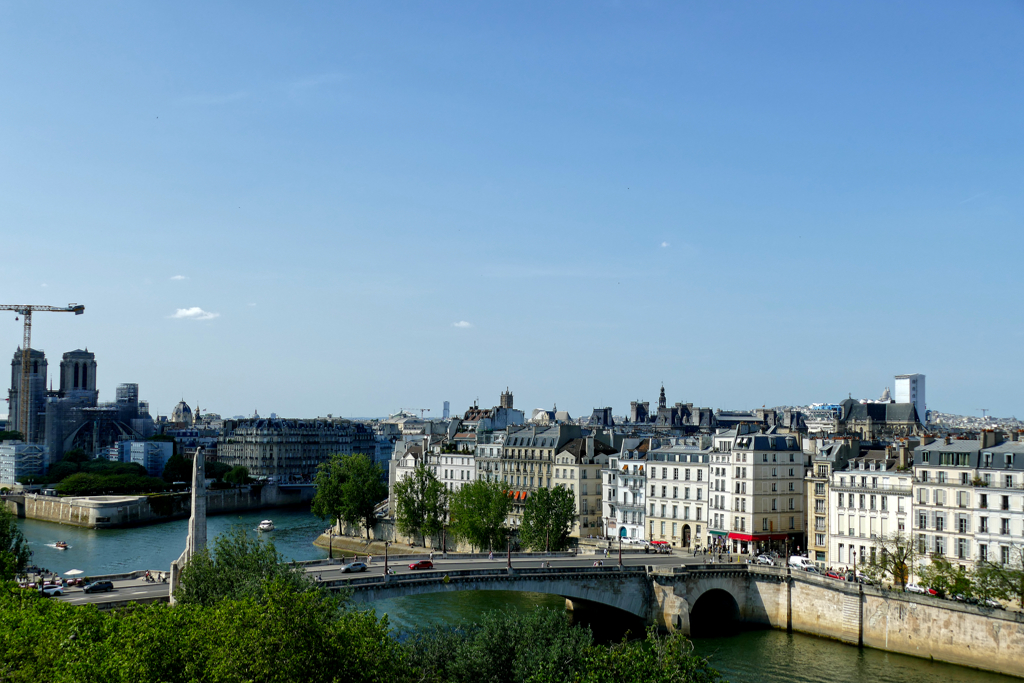
One of the best features for visitors, however, is the Salon du Thé on the rooftop. From there, you have one of the best panoramic views of the city.
The Institute is open from Tuesday to Sunday between 10 a.m. and 6 p.m. On weekends, they are open till 7 p.m. Access to the building is free, only if you want to visit the museum, you’ll have to pay 8 €uros.
Parc des Buttes-Chaumont
As the park is built on the slopes of a hill, it grants great views of its surroundings. Especially the view from the gazebo, which was built after the rotunda at the famous Sibyl temple in Tivoli near Rome, is terrific.
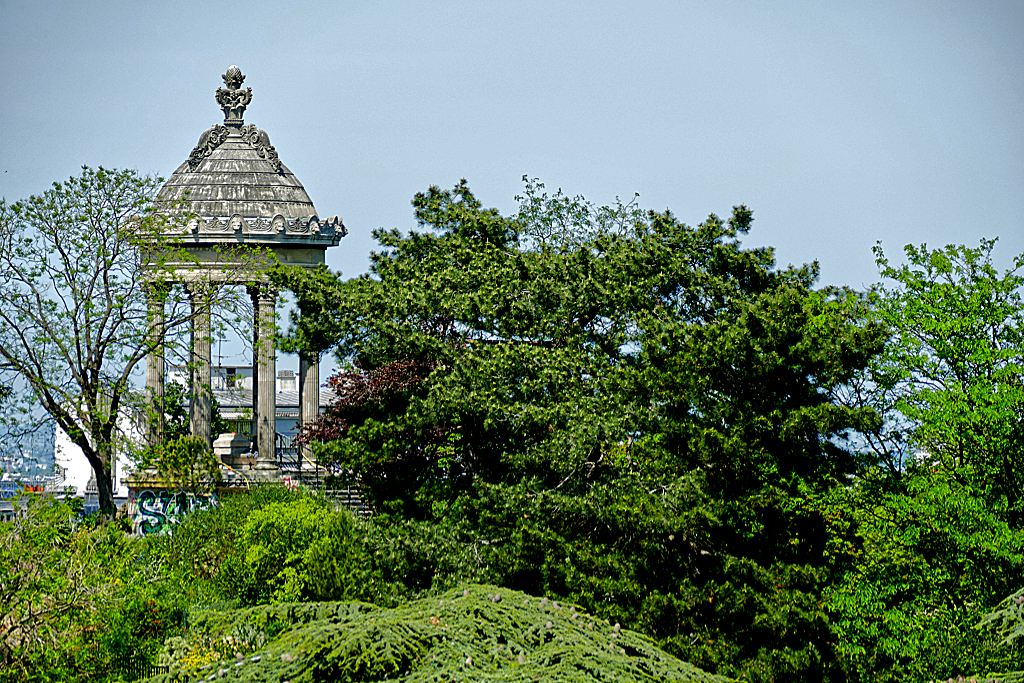
As it stands on the rocky peak at a height of 30 meters, it grants a 360 view of the North East of Paris. However, it can get chilly and windy up there. On the other hand, you’ll get less haze in your pics on a windy day.
The park is open every day from 7 a.m. to 10 p.m.
Vineyards
There are actually five urban vineyards in Paris. The oldest and best-known is Clos Montmartre, northwest of Sacre Coeur. The others are at the Parc de Belleville, the Parc Georges Brassens, the Parc de Bercy, and the Butte Bergeyre. At Montmartre, the vines were planted in 1932 and are mostly Gamay. The vineyards in the Parc Georges Brassens are from the early 1980s. The ones at Belleville, Bercy, and Butte Bergeyre, however, date from the 1990s.
Clos Montmartre – Vigne de Montmartre
The abbess Adelaide von Savoien was the first to grow wine in the village of Montmartre, which became a district of the city of Paris only in 1860. Eventually, wine growing became the main source of income for the Benedictine monastery. To this date, the so-called Fête des Vendanges, a grape harvest festival, takes place every year in October. On that occasion, the residents of Montmartre proudly present their harvest. By the way, instead of wine, potatoes were grown in these fields in WWII.

Today, you have the best view of the Montmartre vineyard from the garden of the Musée Montmartre. Unfortunately, the entrance is not free. However, as you walk around a bit, you’ll find a nice angle to see the vines.
Clos de Belleville – Vigne du Parc de Belleville
The history of Belleville is innately linked to wine. Already in Carolingian times, vineyards covered the area, which in those days was called Savies. The Savies’ farms were run by monks who thoroughly monitored the quality of their wine. In the 14th century, innkeepers settled in the area and preferred to grow coarser grapes. Belleville became a place where people came to quench their thirst at the end of a long day.
However, at the beginning of the 19th century, the farmers converted their vines into flower fields due to the decrease in the prices for wine from Belleville. Yet, to this date, some street names in the neighborhood remember the grand wine-growing past.
Many years later, namely in 1989, vines were planted on a plot of 250 square meters. Then, the first harvest took place in 1993.
Clos de Bercy – Vigne du Parc de Bercy
The Bercy district is historically linked to viticulture, too. The rails on which the barrels were transported, the beautiful old trees, the wine stores, and the vineyard, obviously, are an eternal celebration of Bercy’s strong connection with wine. After all, from the end of the 19th century until the mid-20th century, this was the location of the largest wine warehouses in all of France.
Today, the vines are planted in the Yitzhak Rabin Garden at the Parc de Bercy. The 350 vines are growing on 660 square meters. The annual production is about 250 liters of mostly Chardonnay and Sauvignon.
How to Save On…
Obviously, there is hardly any way to get food, let alone accommodation, for free. Yet, there are ways to enjoy decent French meals without breaking the bank. And while you may have to make some compromises, it’s still possible to stay in Paris for a reasonable price. Here are my best tips for a glorious yet cheap stay.
…Food And Drinks
It starts with breakfast: If it’s included, take it, no matter what. Coffee is quite pricey in Paris, expect to pay at least around 4 €uros for a small cup of coffee. Add two pastries and you’ll probably be at 8 €uros. And I am talking about an average bakery, not a cafe. There, you’ll pay even more. So if you can start the day with breakfast at your hotel, I’d suggest you go for it.
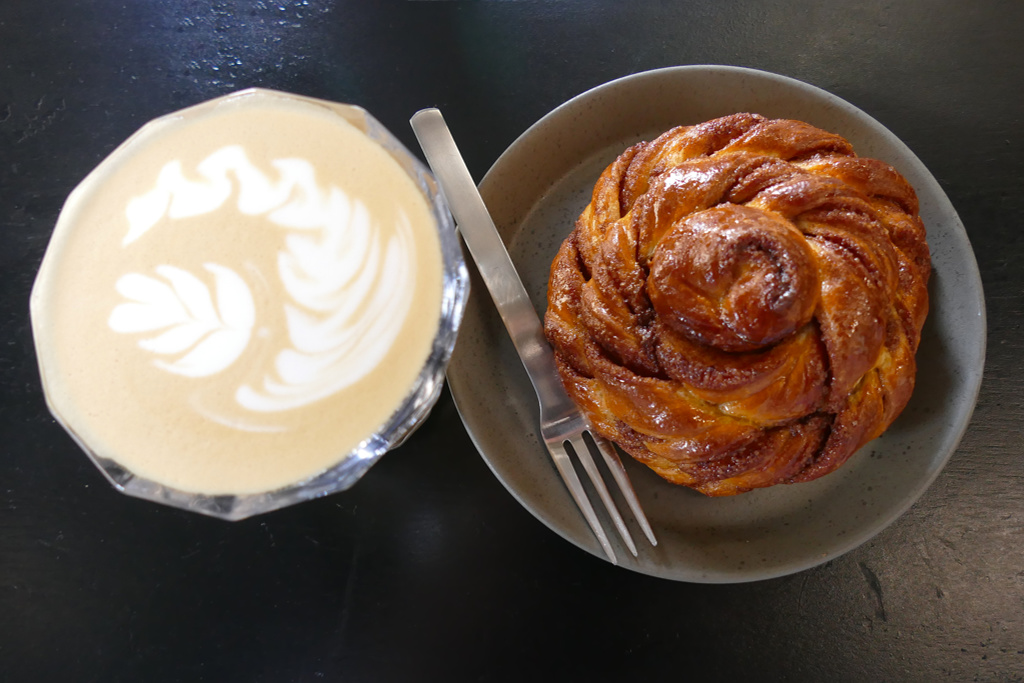
Finding a nice lunch at a reasonable price shouldn’t be difficult. Many eateries have a so-called plat du jour or a menu called formule. This includes a starter or a dessert and sometimes even water and wine. You won’t find such a deal at dinnertime. Therefore, it’s smarter to stuff face at noon and opt for a sandwich or some hearty pastry in the evening.
A good option to get some nice snacks is, for instance, Carrefour City and Carrefour Express. But also other supermarkets offer ready-made hot and cold meals. I don’t claim it will be the fanciest meal you’ve ever had, but it is an option that will save you lots of money.
Classic Cuisine
When I travel, I try to find this mom-and-pop eatery where I rub shoulders with locals. Not tourist traps, but nothing over the top, either. A place where the average towny enjoys his or her lunch.
Therefore, my very favorite restaurant in Paris is Chartier.
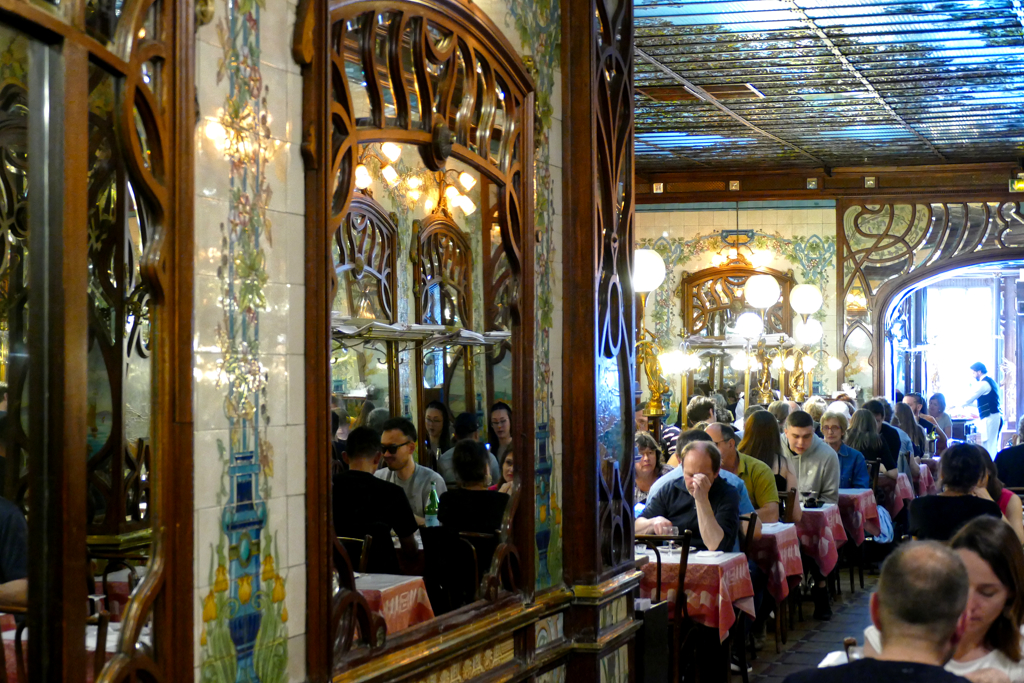
The first Bouillon Chartier opened in 1896 and is located in a back building on Faubourg-Montmartre. The interior is designed in an Art Deco style and hasn’t practically changed over the decades. The spacious hall offers seats for over 300 people and looks a bit like an old-fashioned train station eatery. It even has a large clock on the wall! The busy waiters are pacing between the small tables in long white aprons, black vests, and bow ties. They write down the order right on the paper tablecloth in front of you, where they also sum up l’addition at the end of your meal.
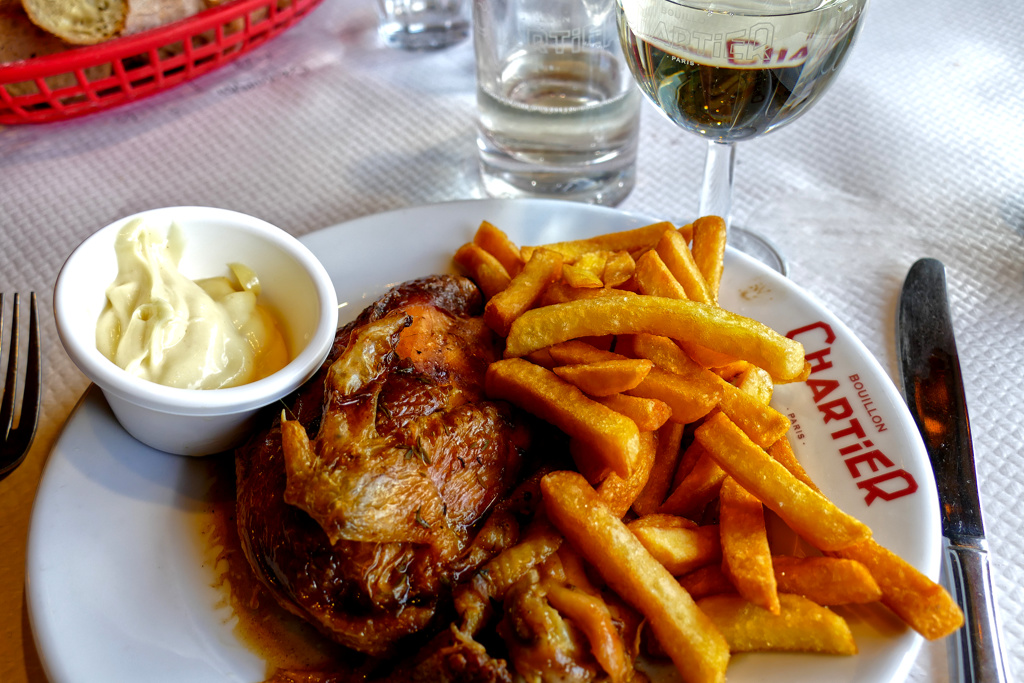
Due to the fantastic quality at very reasonable prices, Chartier has first been popular with locals, but now tends to be overrun with tourists. Therefore, I do not go to the original Chartier anymore but prefer their branches in the vicinity of the Gare de l’Est and in Montparnasse. You’ll find all three restaurants on the map below.
Mussels From Brussels
Another one of my favorites is the restaurant chain Léon de Bruxelles, albeit it is rather a staple food of Brussels than a Parisian classic. But as Moules-frites is quite popular among the French, too, Léon is always fairly busy, especially at noon. They have seven or eight branches in various arrondissements in Paris, you’ll find three on the map below.
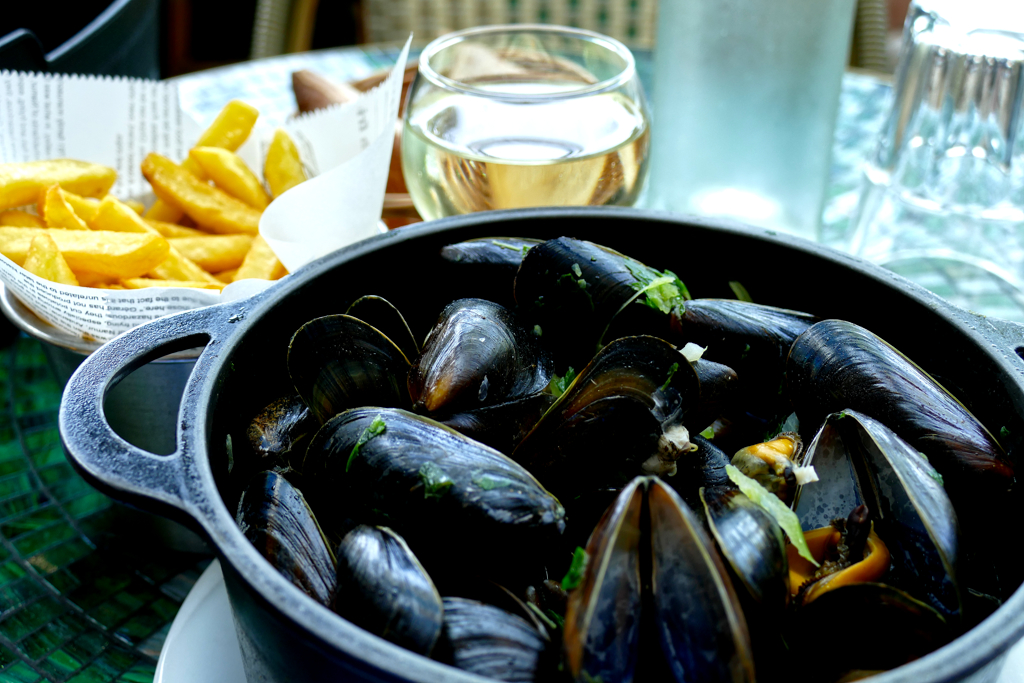
Last but by no means least, I love the Levante eateries in the Marais district. The most famous one is certainly L’As du Fallafel, where even celebrities like Lenny Kravitz enjoy their kebab.
I don’t know how long Mr. Kravitz had to wait in line. Every time I go there, a queue goes all the way down the Rue des Rosiers. Anyway, L’As is just one of the countless Middle Eastern eateries, hence, you won’t go home hungry.
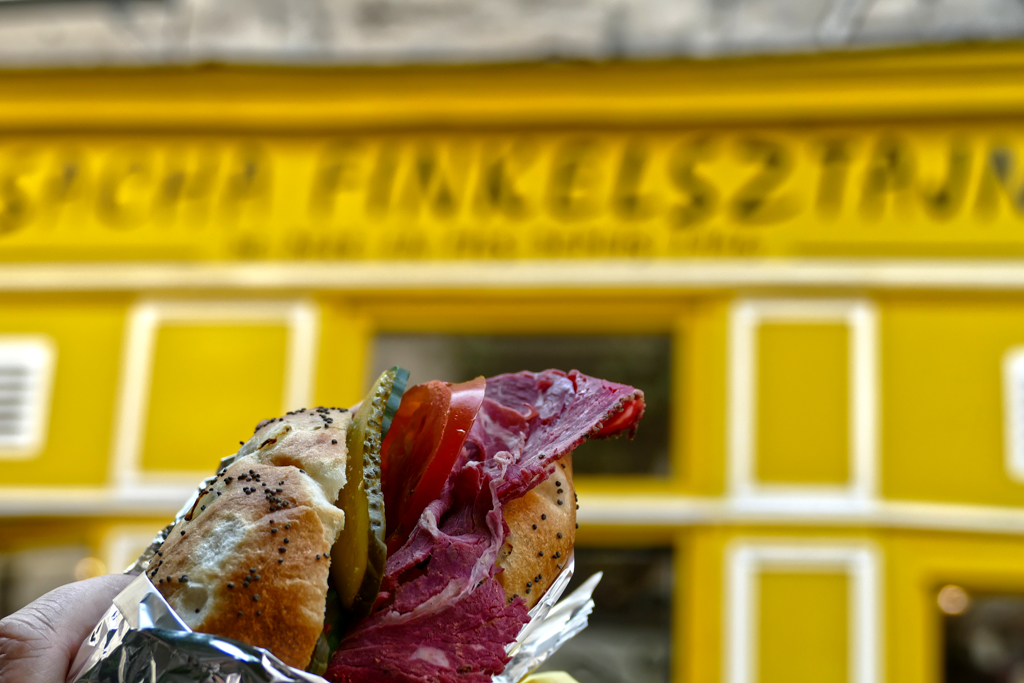
A great alternative is a sandwich or some cake from La Boutique Jaune. Sacha Finkelsztajn opened his classic grocery store in 1946, and since then, you can buy all kinds of traditional Jewish bread and cakes, canned goods, condiments, and other groceries. And for around 10 €uros, they fix you a delicious classic Jewish sandwich.
My Tip
The most idyllic place to enjoy your snack is the Jardin des Rosiers Joseph Migneret. It is a beautiful, lush garden nestled between historic mansions. The main entrance lies a bit hidden in the building on Rue des Rosiers 10. The garden is open weekdays from 8 a.m. to 7 p.m. and weekends from 9 a.m.
L’Eau de Paris
Paris has an incredible 1,200 drinking water fountains throughout the city! The city encourages locals as well as tourists to use fewer plastic bottles. Instead, they should switch to drinking bottles that can be refilled at the city’s beautiful fountains. Last but not least, water from the fountains is absolutely free of charge, hence, what’s not to like?
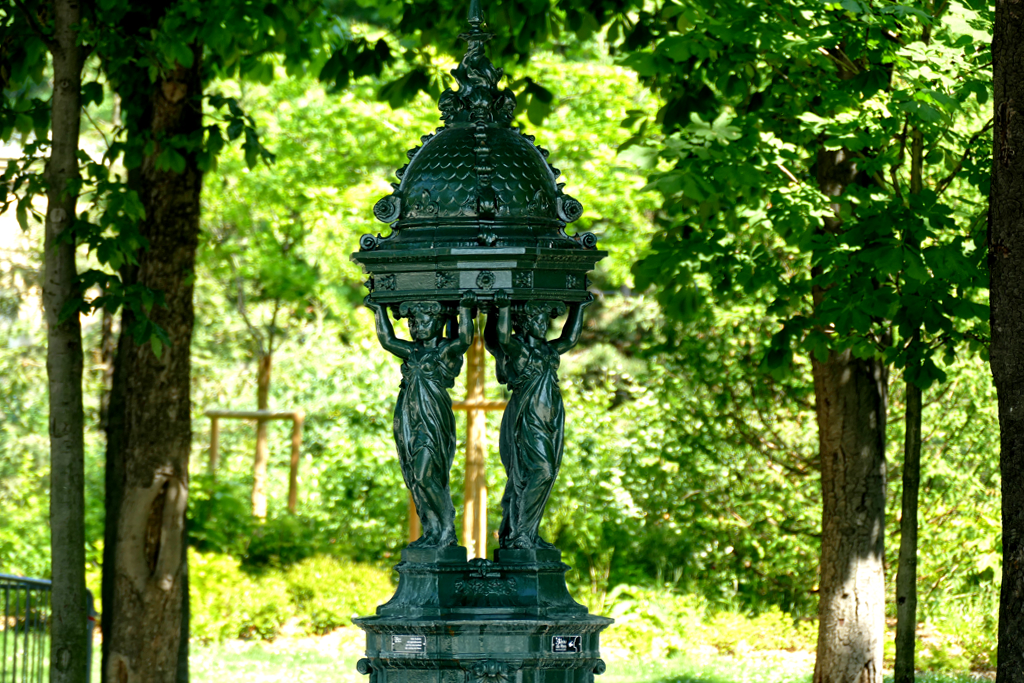
Also, you can actually locate the fountains on Google Maps. Just type fountain in the app, and the map will show you where to quench your thirst in your vicinity.
…Accommodation
Since Paris is one of the most touristy cities in Europe, there is a wide choice of accommodation, and all of them are crazily expensive.
It’s an easy equation: Of the three aspects of a good standard, convenient location, and affordable price, you always have to waive one. If you find a good standard hotel in a convenient location, it won’t be at an affordable price. A hotel in a convenient location at an affordable price won’t have a good standard. And finally, a good hotel at an affordable price won’t be in a convenient location.
I opted for the last option, which brought me to the neighborhood of Port de Bagnolet. At the Campanile Paris Est*, I had a squeaky clean room on the 7th floor and the métro station Gallieni literally at my feet. Also, right next to the Campanile Paris Est* is a shopping mall with a couple of fast-food restaurants and a huge supermarket. Although commuting around half an hour back and forth every morning and evening might not be everyone’s cup of tea, I paid a fraction of what I had paid in the city center.
On this map, you can choose suitable lodging options in Paris according to the location and your budget, obviously*:
…City Transport
I’d argue that of all European cities, Paris has the most comprehensive network of public transportation. The world-famous metro alone has an incredible 302 stations. In fact, you’re never farther than 500 meters from a metro station. While this is absolutely fantastic, changing lines is a downer since some stations are huge and built like multi-level mazes. I kid you not, it happened to me that I was walking in circles since I missed the correct tunnel. However, I never heard of anybody getting lost down there forever, so don’t worry.
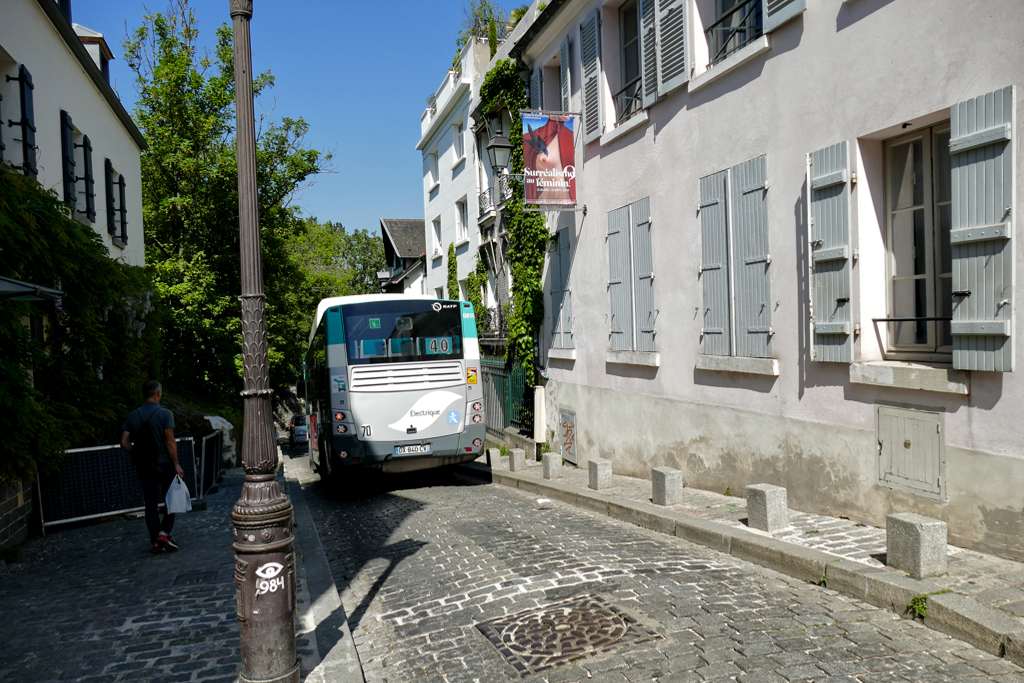
In addition to the already comprehensive metro network, there are local trains called RER, there are trams, and there are buses, obviously. So no, nobody needs a cab in Paris.
Which Ticket to Buy
It used to be so simple: you either bought a single ticket or a carnet consisting of ten of these adorable little tickets, and that was fine. That’s currently being discontinued. While you can still use your remaining paper tickets, you can no longer buy them. Now you have a Navigo card onto which you can load journeys. But you need to know whether you want to take the bus or the metro, as there’s a price difference.
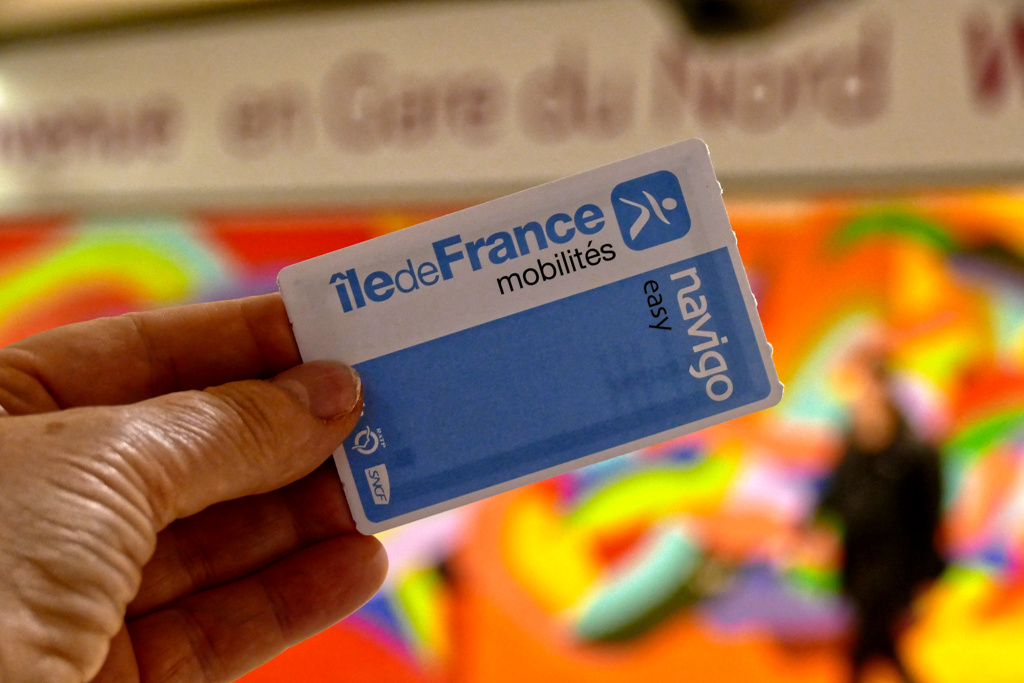
While you’re going through the turnstile with your card at the metro, you have to hold it up to the small ticket validator on the bus. Make sure it beeps. If there’s a ticket check and you haven’t validated the journey, you’ll be in trouble.
Travelling the Easy Way
The easiest way is to load a day ticket for 12 euros onto your Navigo card. It’s valid for all local transport, and you’ll have peace of mind for the whole day.
In any case, make sure to keep whatever form of ticket you might have until the end of your trip. In some places, you need to insert it in a turnstile to leave the station. Also, there might be ticket controls within the station, and if you cannot show a validated ticket, you’re in trouble
Note that there are travel passes for 1, 2, 3, or 5 consecutive days. You can choose between a pass valid for zones 1 to 3 in the center and a pass for all zones in Paris and the entire Île-de-France, including airports, Disneyland Paris, and Château de Versailles.
| 1 Day | 2 Days | 3 Days | 5 Days | |
| City Center | 12.00 €uros | 19.50 €uros | 26.65 €uros | 38.35 €uros |
| City Center and Île-de-France | 25.25 €uros | 38.35 €uros | 53.75 €uros | 65.80 €uros |
Kids under 4 years of age travel for free, and those under 12 pay half price.
Walking
Although I refrain from referring to walking as an exclusive option to explore the city, you will be walking a lot. With about 10 kilometers from north to south and around 11 kilometers from east to west, the very city of Paris is surprisingly small. And as it is expectably picturesque, you’ll be strolling more than you have ever planned. Yes, you’re never more than 500 meters from the next Métro-station. But that’s not necessarily the line you need. Hence, why not walk the short ten or twenty minutes? Well, let me tell you, those quickly add up to hours and many kilometers.
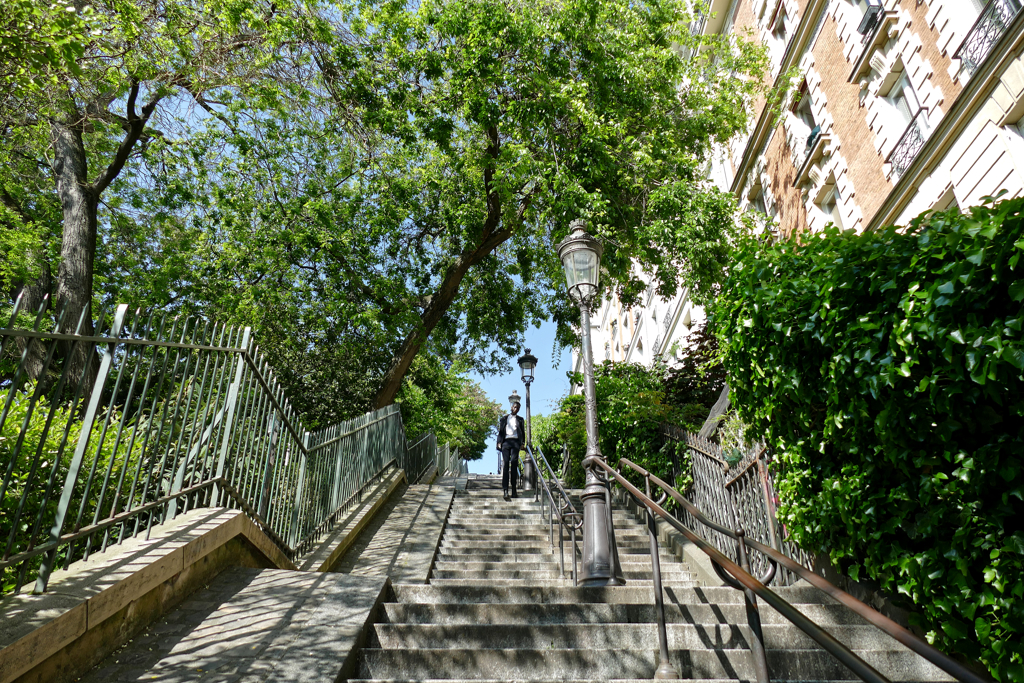
Even if you explore just the very center, I highly recommend taking the Métro from time to time. But even then, you’ll be on your feet a lot. Also, many streets are paved with cobblestones. And finally, keep in mind that Paris is very hilly in some places, so you’ll have to climb steep streets’n’stairs.
Therefore, do yourself a favor and wear sensible shoes like loafers or sneakers – or even light hiking boots. Don’t even think about wearing thin heels, you’ll ruin your shoes, your feet, and thusly your day.
Cycling
Recently, cycling became another great way to get around at a reasonable price in Paris. The infrastructure is much less developed than in Amsterdam or Copenhagen, obviously, but apparently, the Tour de France rubbed off on the average citizen.
As a visitor, you can join the fun and rent a bike. The company Vélib offers regular bikes, which are green as well as blue e-bikes. Both kinds have baskets and locks in case you need to take a break. They need to be picked up respectively returned at one of the many stations located throughout Paris.
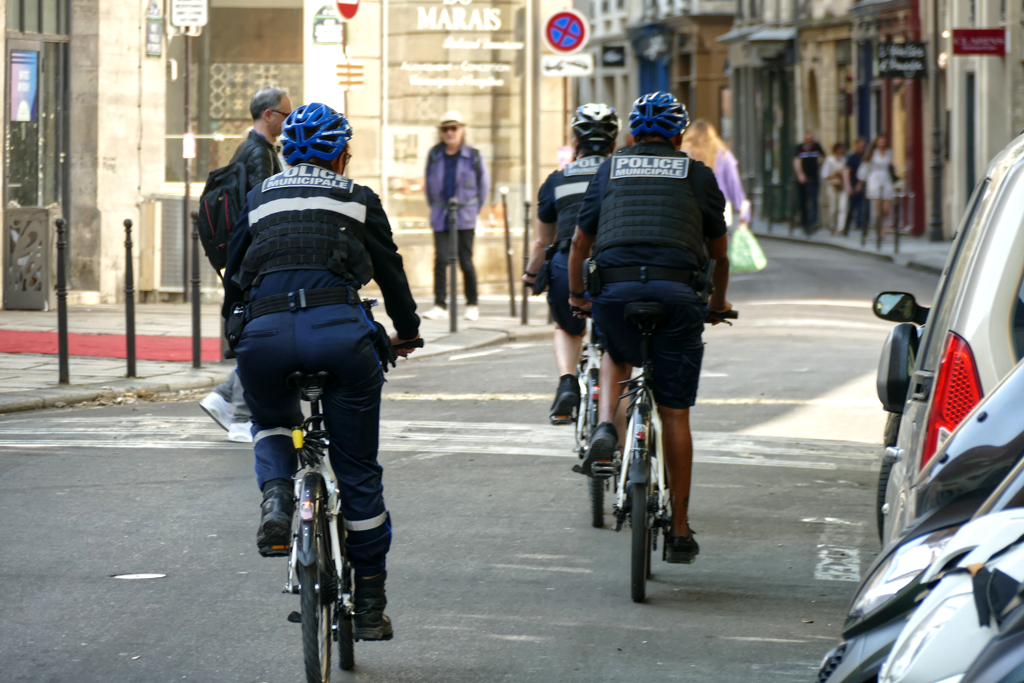
You can sign up for passes online. However, if you cannot receive a text message on a French phone to confirm your payment, you’ll need to sign up at one of the terminals. Make sure to take a picture of the passcode on the screen in case something goes wrong with the confirmation. You get an account number and a PIN. Keep them thoroughly.
There are passes that anyone with a valid credit card can obtain as well as subscription options for residents or long-term visitors.
You’ll be charged two fees: Firstly, you’ll be charged for the pass right away, whether you ever use the bikes or not. Then, there is the rental fee for the actual use.
Pay As You Ride
Occasional users should get the Ticket-V for three €uros. It is suitable for a single-use rental of a green bike or an e-bike for up to 45 minutes. After that, you’ll have to pay one €uro for each additional 30 minutes on a regular bike or two €uros for e-bikes.
The Pass 24-hour Classique costs five €uros. For 24 hours, you can use the green bikes for free for up to 30 minutes. After that, your credit card will be charged one €uro for each additional half hour until you return the bike. This way, you can use as many bikes as you like without paying more than the pass fee. All you have to do is switch bikes after 30 minutes.
If you decide to use a blue e-bike with your Pass Classique, it will cost 2 €uros for every 30 minutes with no free minutes.
If you opt for either the Pass 24-hour Electrique, which costs ten €uros or the Pass 3 Jours for 20 €uros, the first six trips on a blue e-bike are free for up to 45 minutes. Then, you’ll be charged one €uro for each additional 30 minutes. If you decide on using a standard green bike with this pass, it’s free for up to 60 minutes per trip. After that, it’s one €uro per 30 minutes.
Apart from the Ticket-V, all passes allow you to take up to five bikes at a time with one account. This comes in handy for small groups or a family since you have to open just one account for the entire party.
…City Tours
I’m an avid solo-travelling woman. Since solo travel doesn’t equal solitude, I love to join organized tours here and there. They allow me to meet fellow travellers – for just a short moment or a lifelong friendship.
Especially if you have only a short time for exploring Paris, an organized trip will enable you to see the most in a relatively short period of time. However, make sure to book the activities of your choice well ahead, especially during the high season*:
So yes, these are my best tips on how to enjoy the fantastic city of Paris for free or at least at a very low price. If you need specific tips on how to visit many of Paris’ museums at a great price, just rush over to my post PARIS Museum Pass: Skip the Lines And See It All For Less.
Are you planning your first trip to Paris? Then you’ll appreciate my suggestions on what to visit as well as tons of practical information and tips on lodging, public transport, money and discounts, connections, and communication. You’ll find all this and much more in my post What Not to Miss in PARIS: 20 Must-Dos, Not Only for First-Timers.
If you have only a short stay in Paris, make the best of it with my guide for 24 hours in Paris. There you’ll find a complete itinerary for a sunny day as well as for a rainy day.
Map
On this map, you can see where all the places I’m introducing in this post are located.
Clicking on the slider symbol at the top left or the full-screen icon at the top right will display the whole map, including the legend.
Pinnable Pictures
If you choose to pin this post for later, please use one of these pictures:
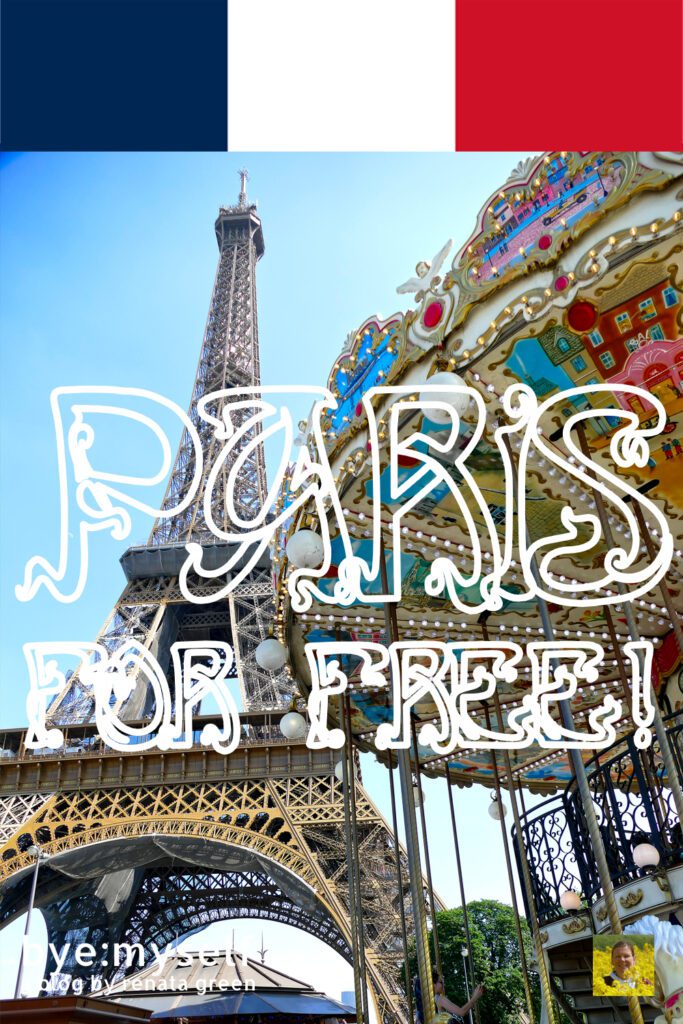
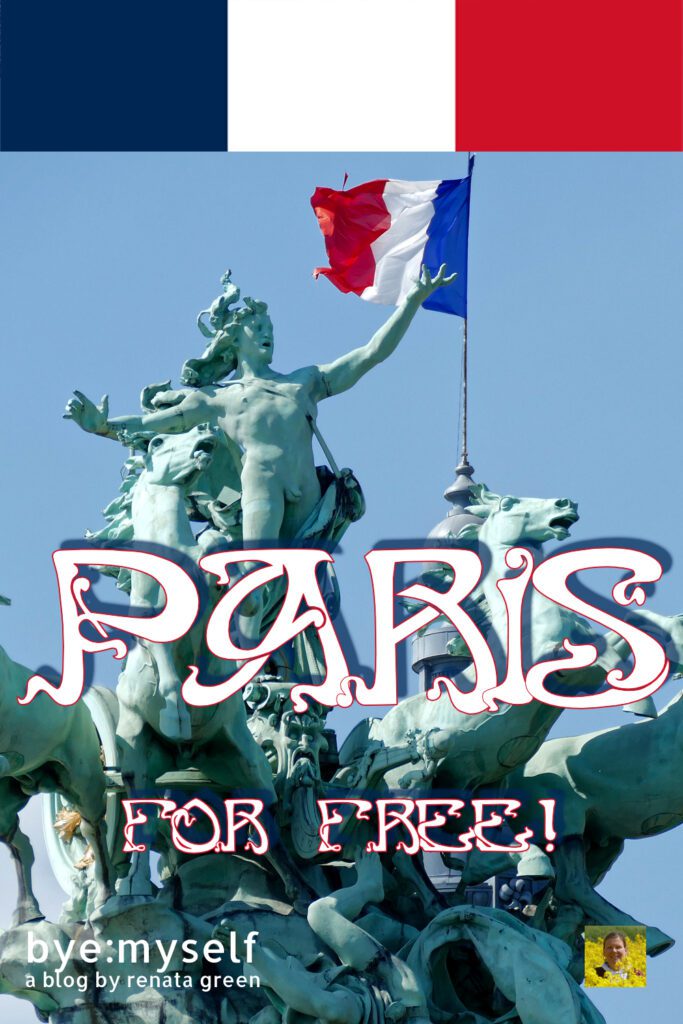
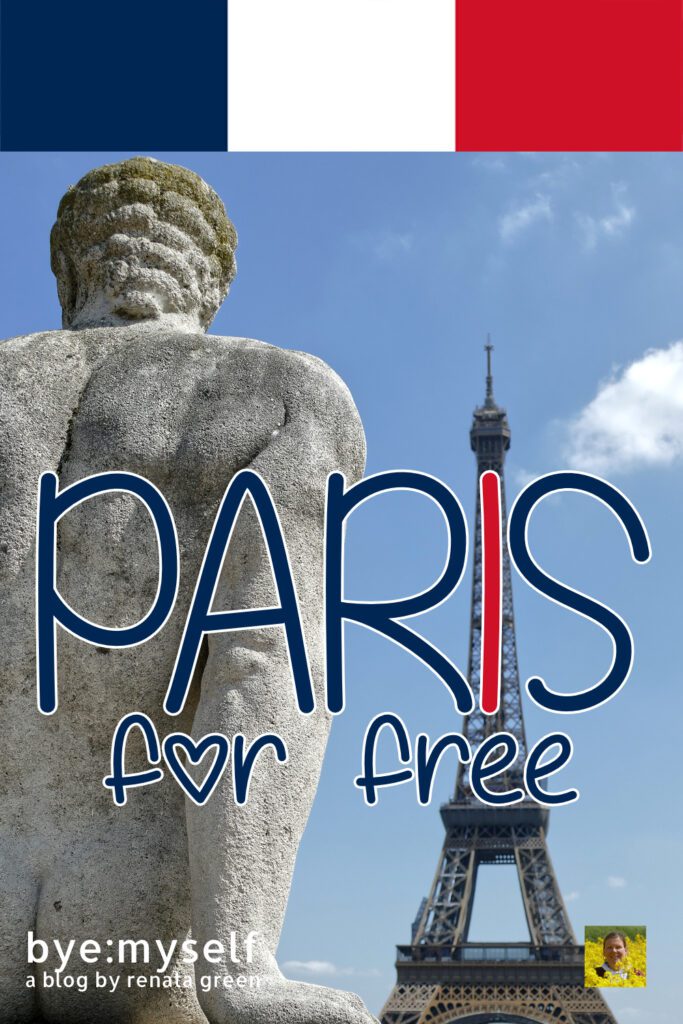
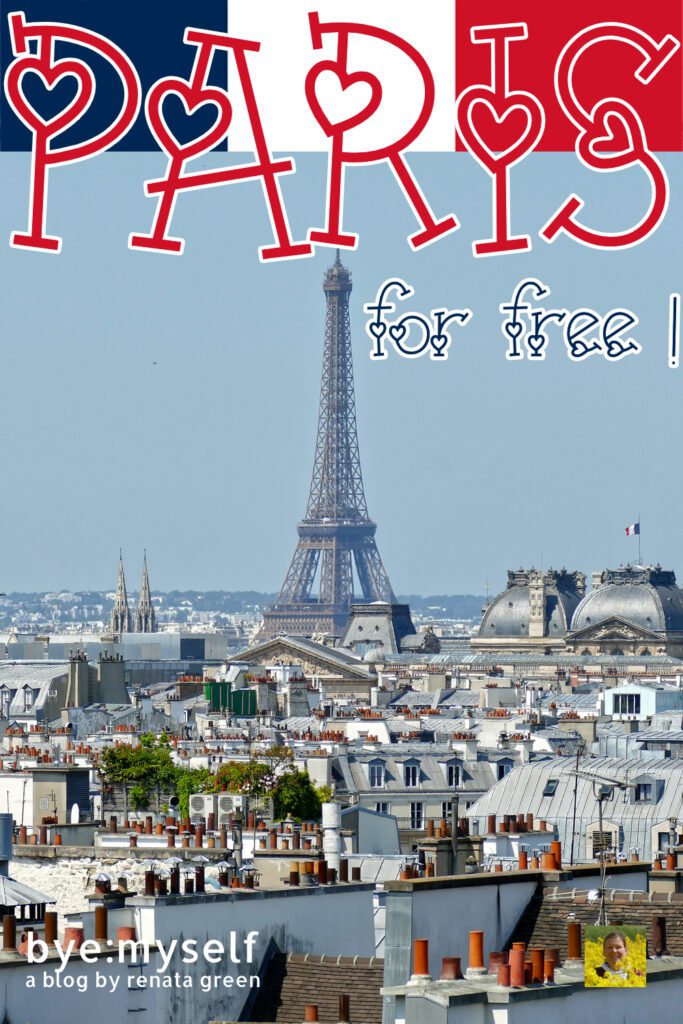
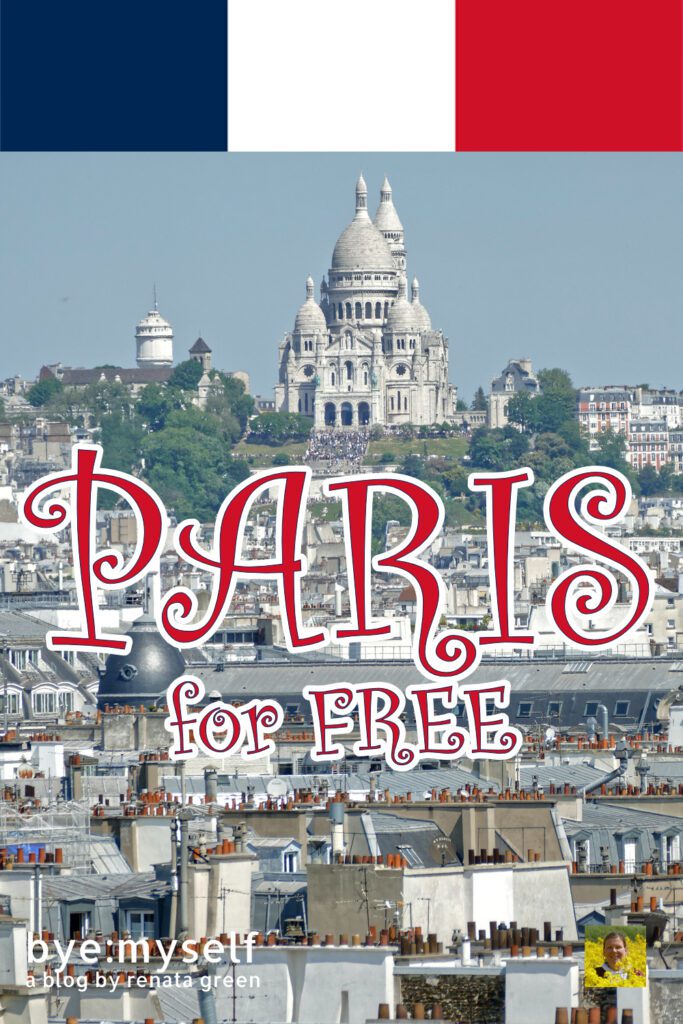
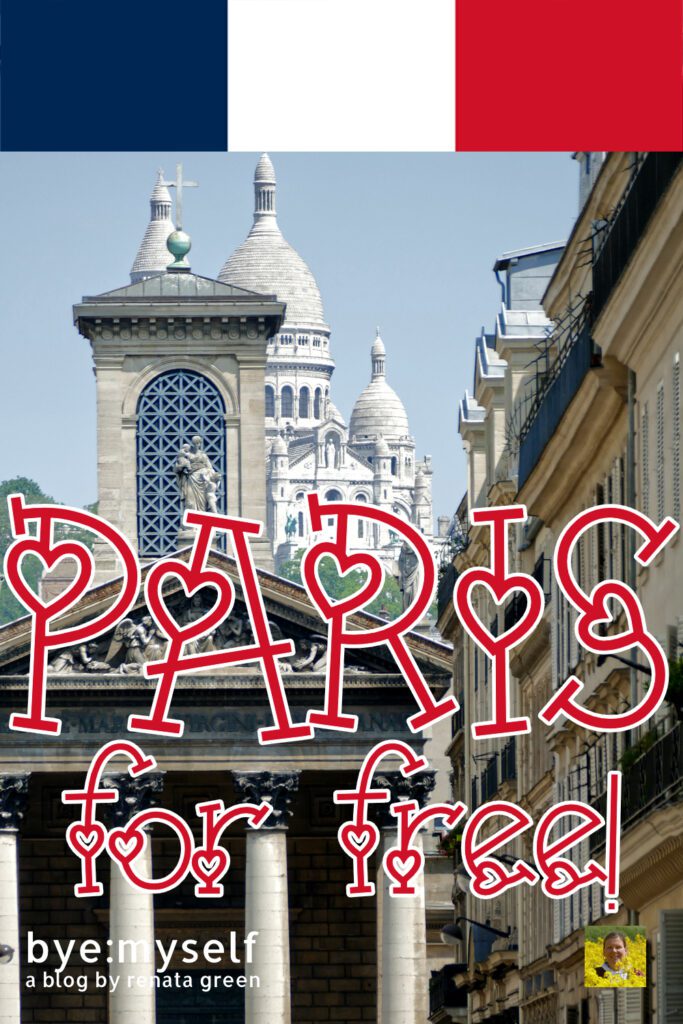
Note: This post is being regularly completed, edited, and updated – last in October 2025.
Did You Enjoy This Post? Then You Might Also Like These:
GUADELOUPE: Complete Guide And Perfect Itineraries (also for travels by public bus)
Pickled: Easy Recipes to Store the Mediterranean Sun in Your Pantry
Best Places to Visit in Grand Terre, the Eastern Wing of GUADELOUPE (also by public bus)
MAGNIFICENT MARTINIQUE: Ten Places Not to Miss on Your Visit (even when exploring by public bus)
One Day in NÎMES – What Not to Miss in the Most Roman City of France
Best Street Art in NÎMES
The Best Beaches in Martinique You Can Easily Visit by Public Bus
The Best Street Art in MARTINIQUE
* This is an affiliate link. If you book through this page, not only do you get the best deal. I also get a small commission that helps me run this blog. Thank you so much for supporting me!





